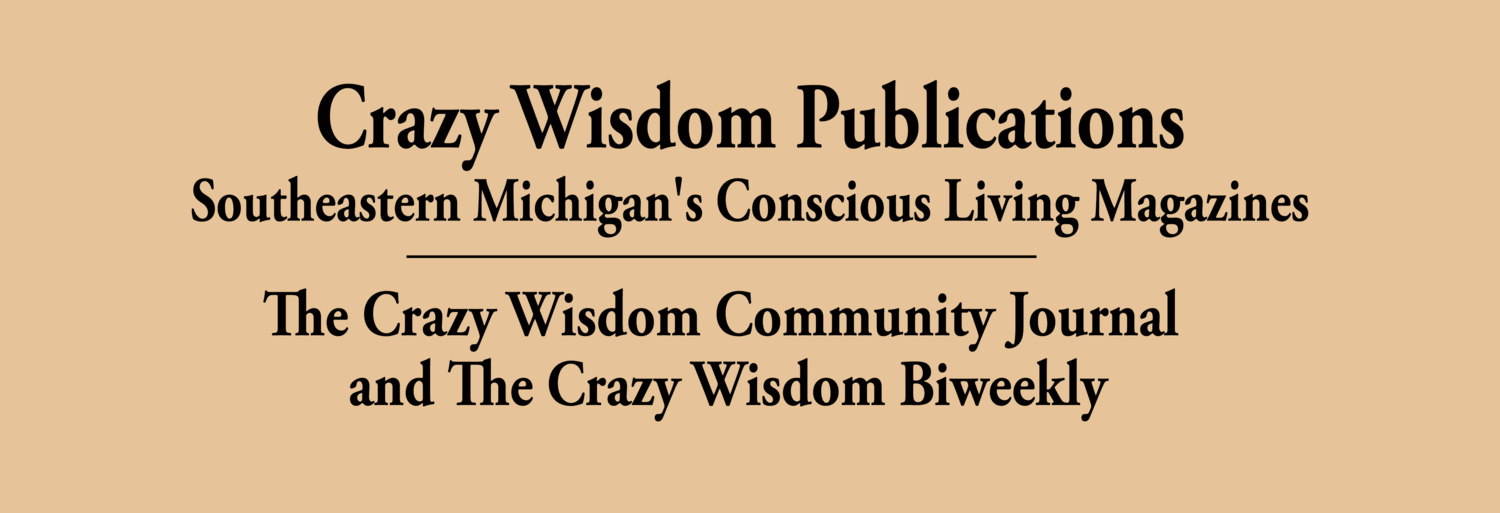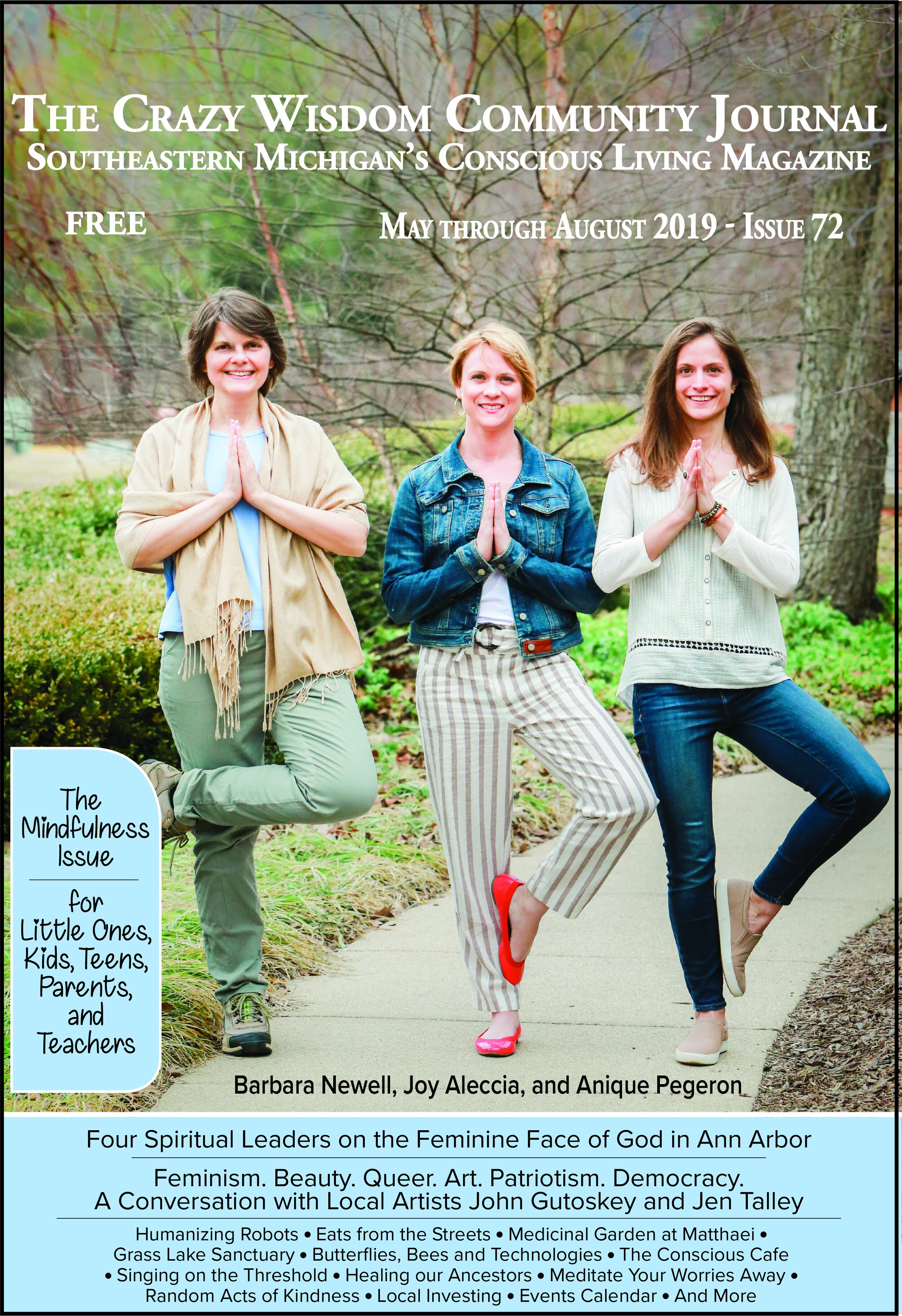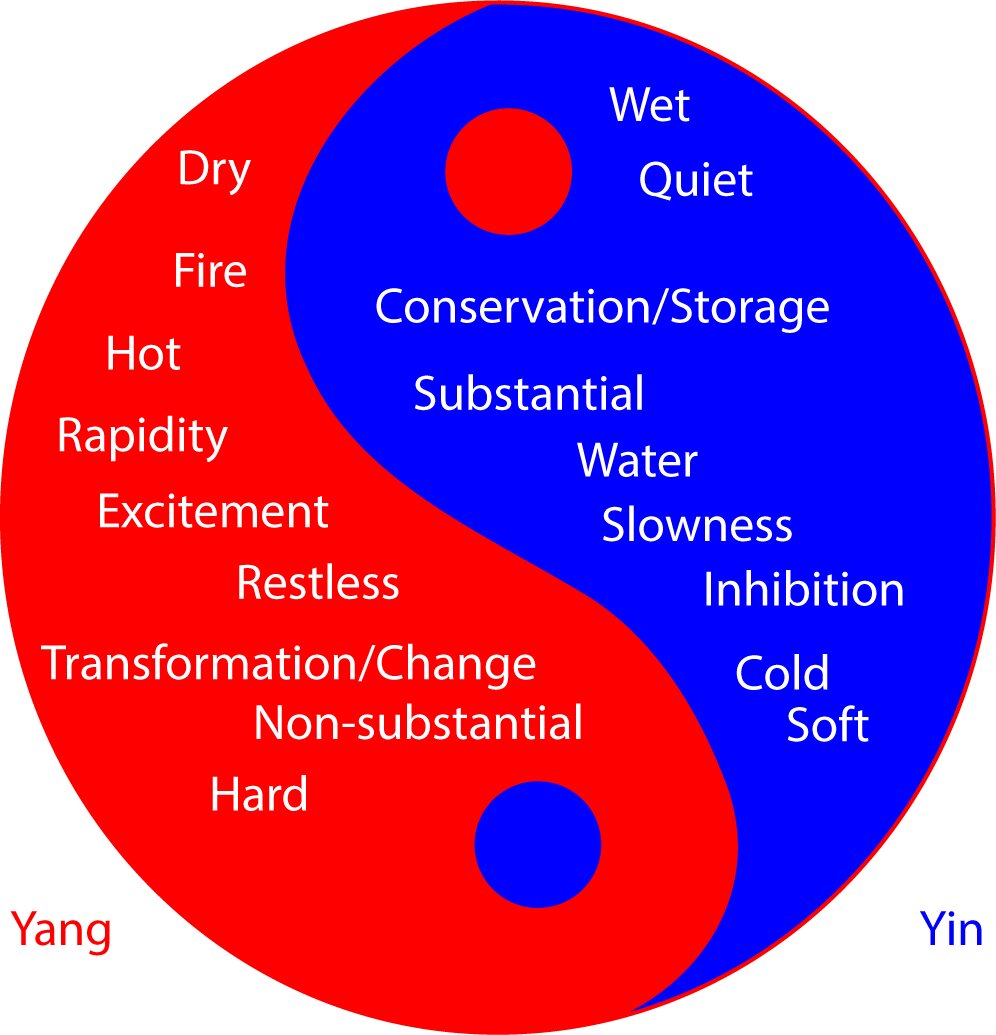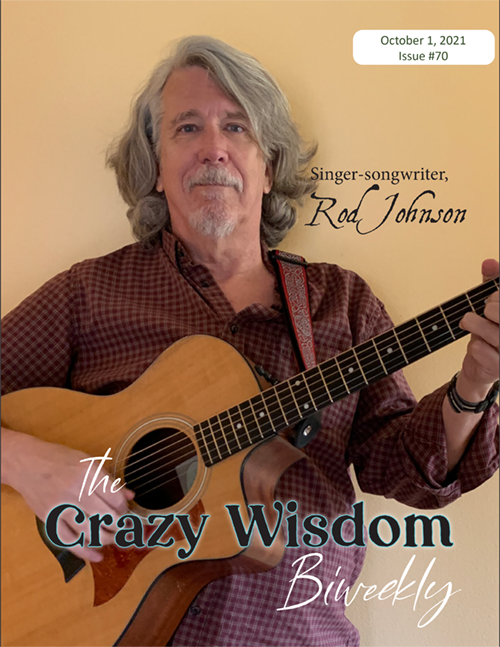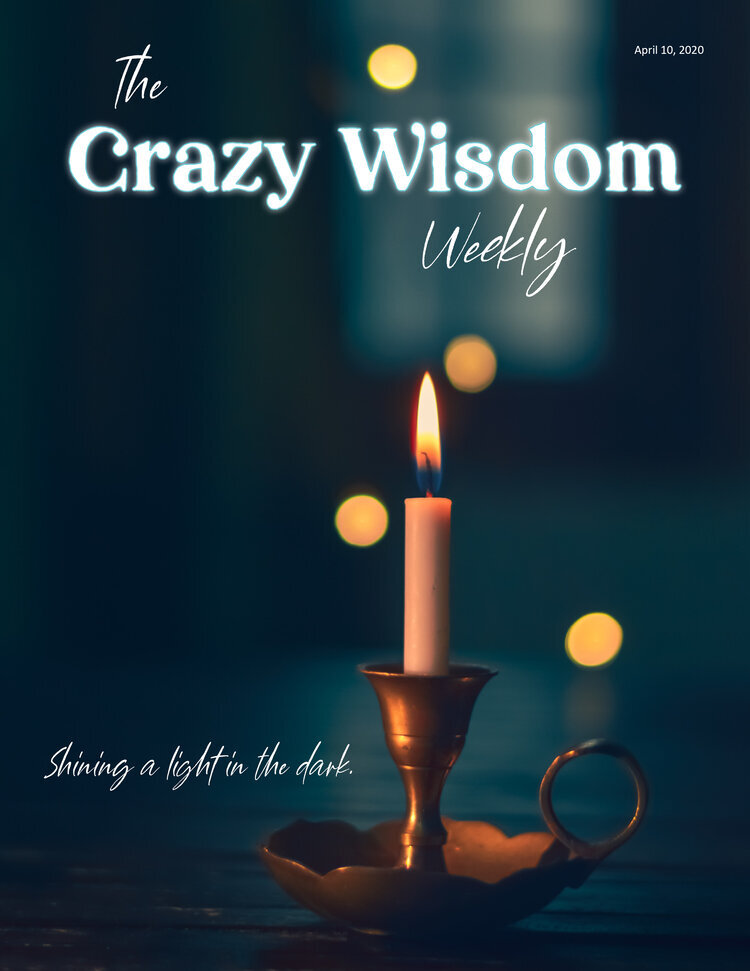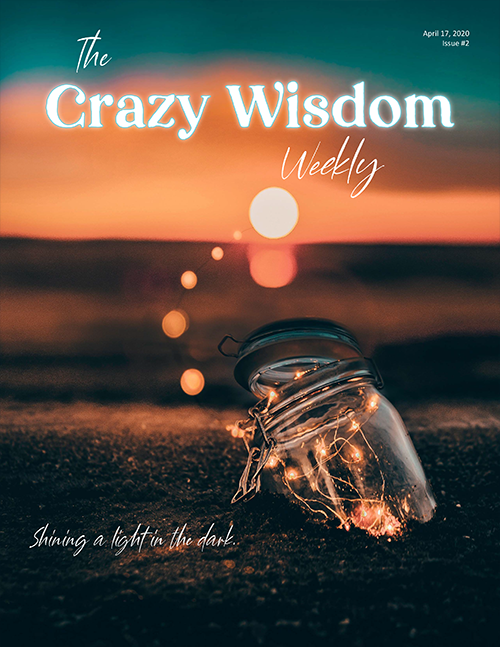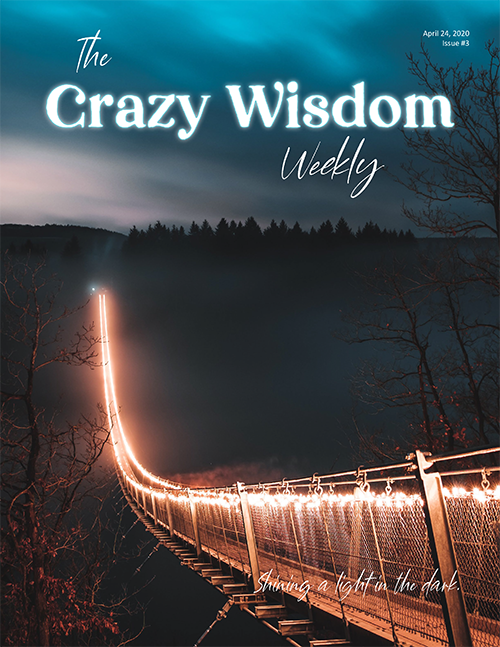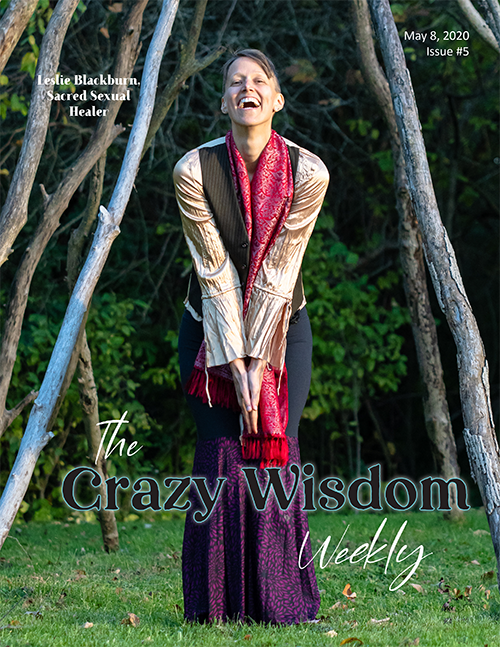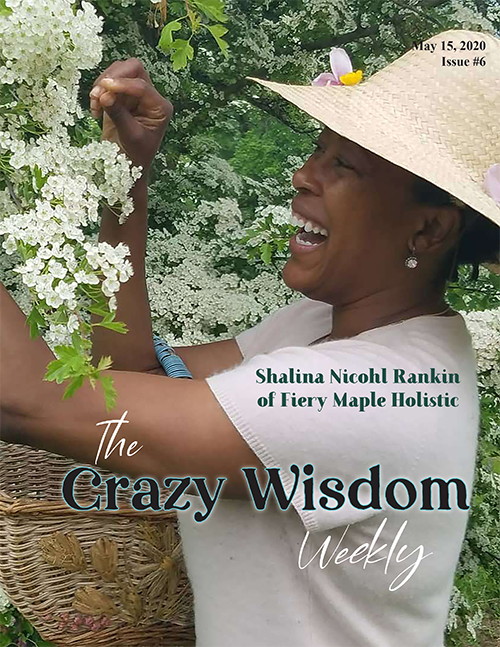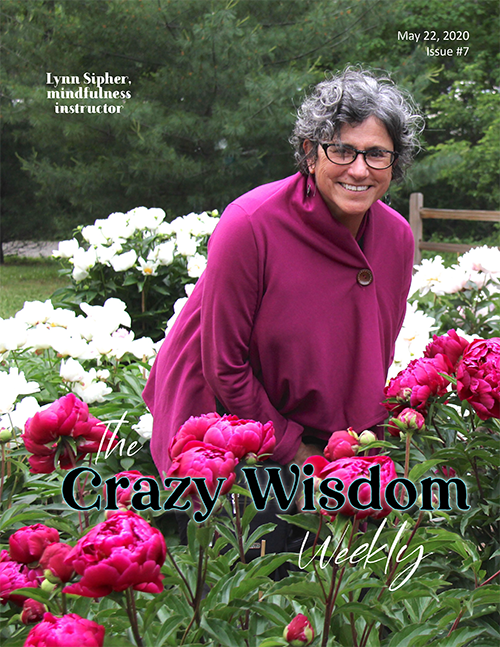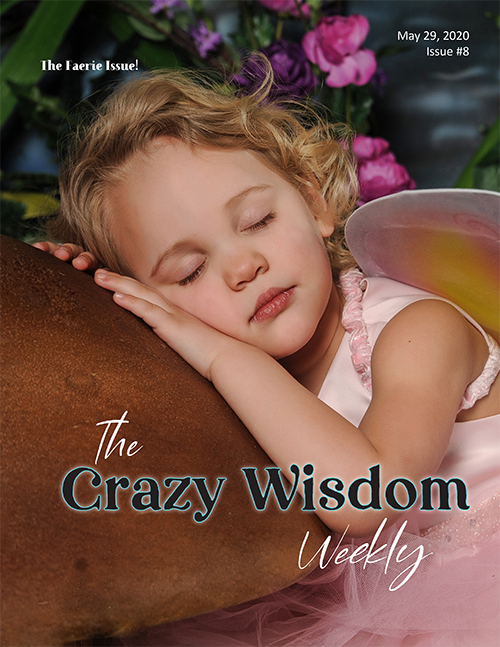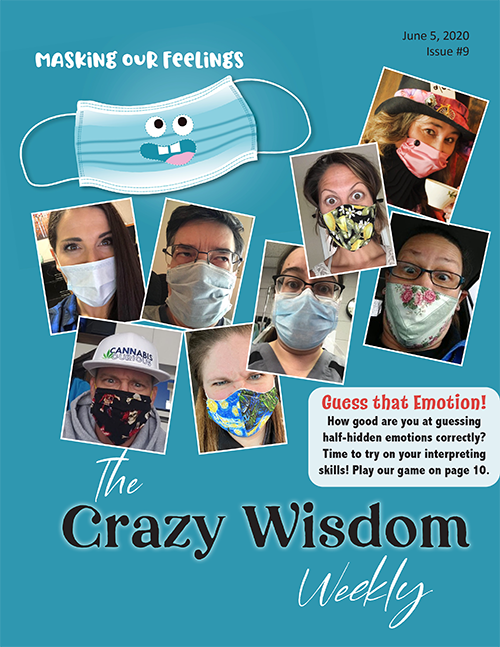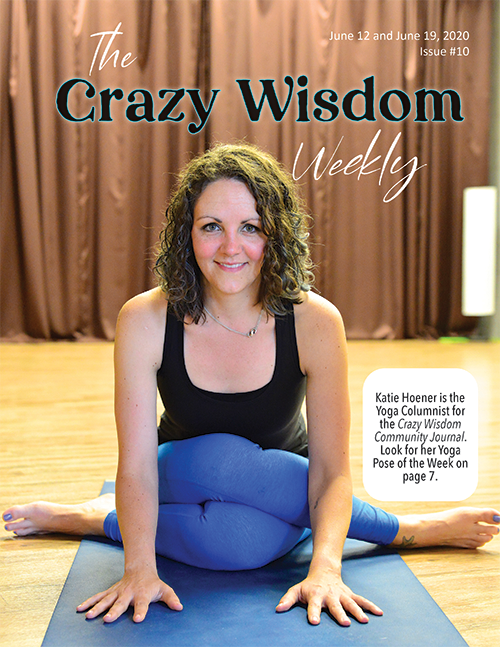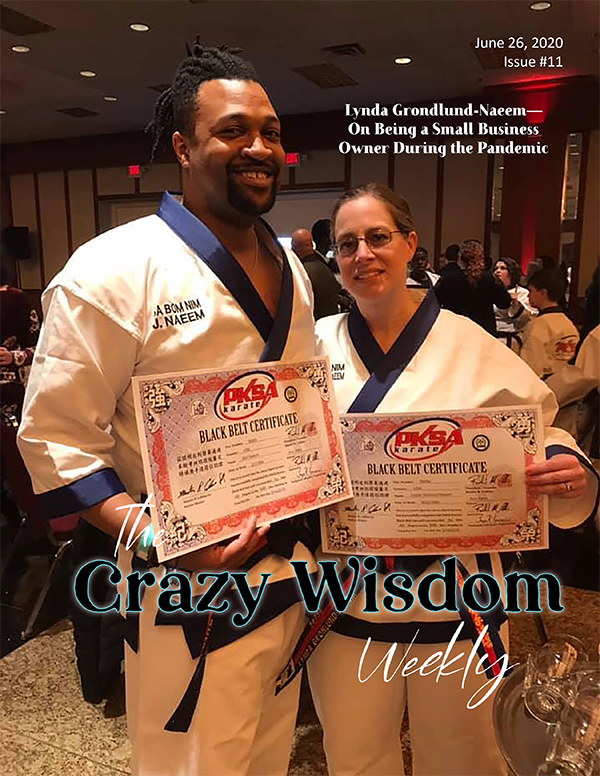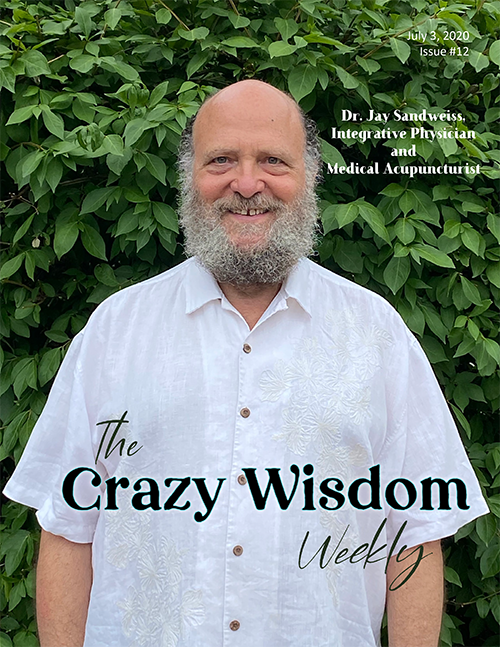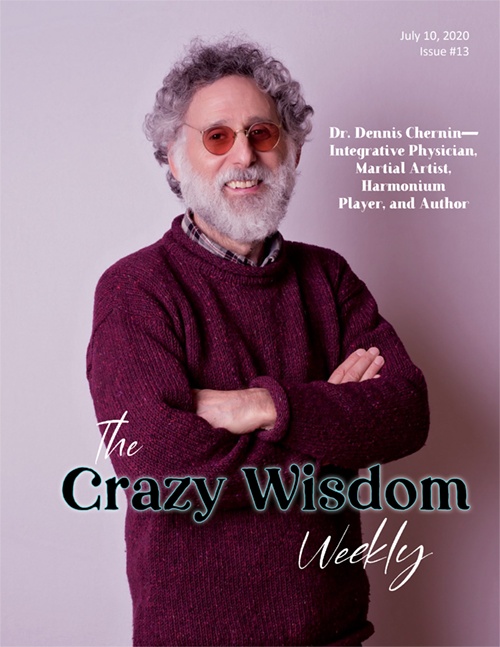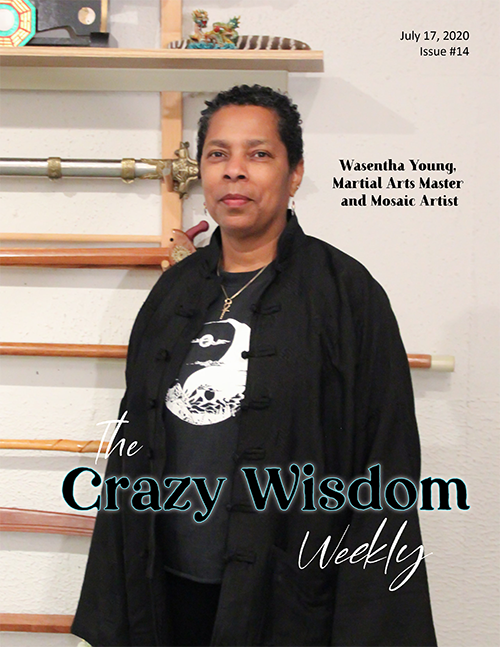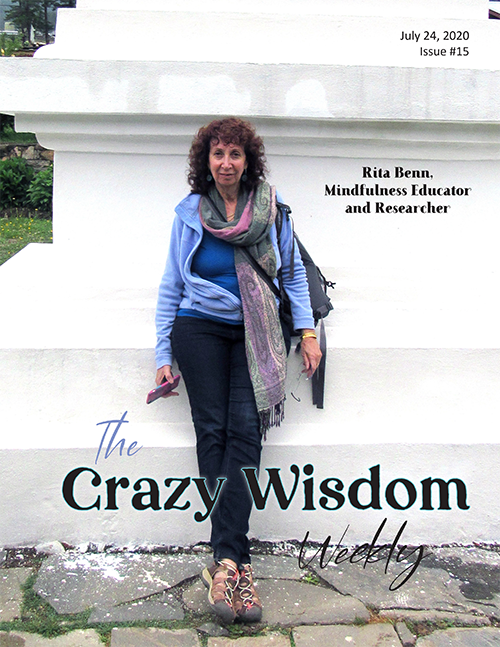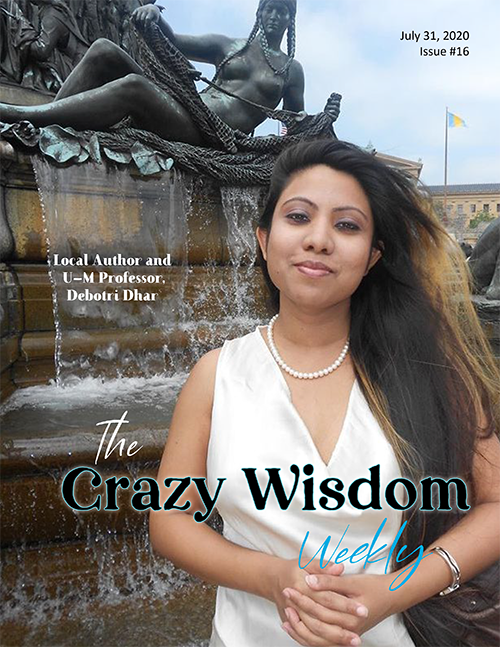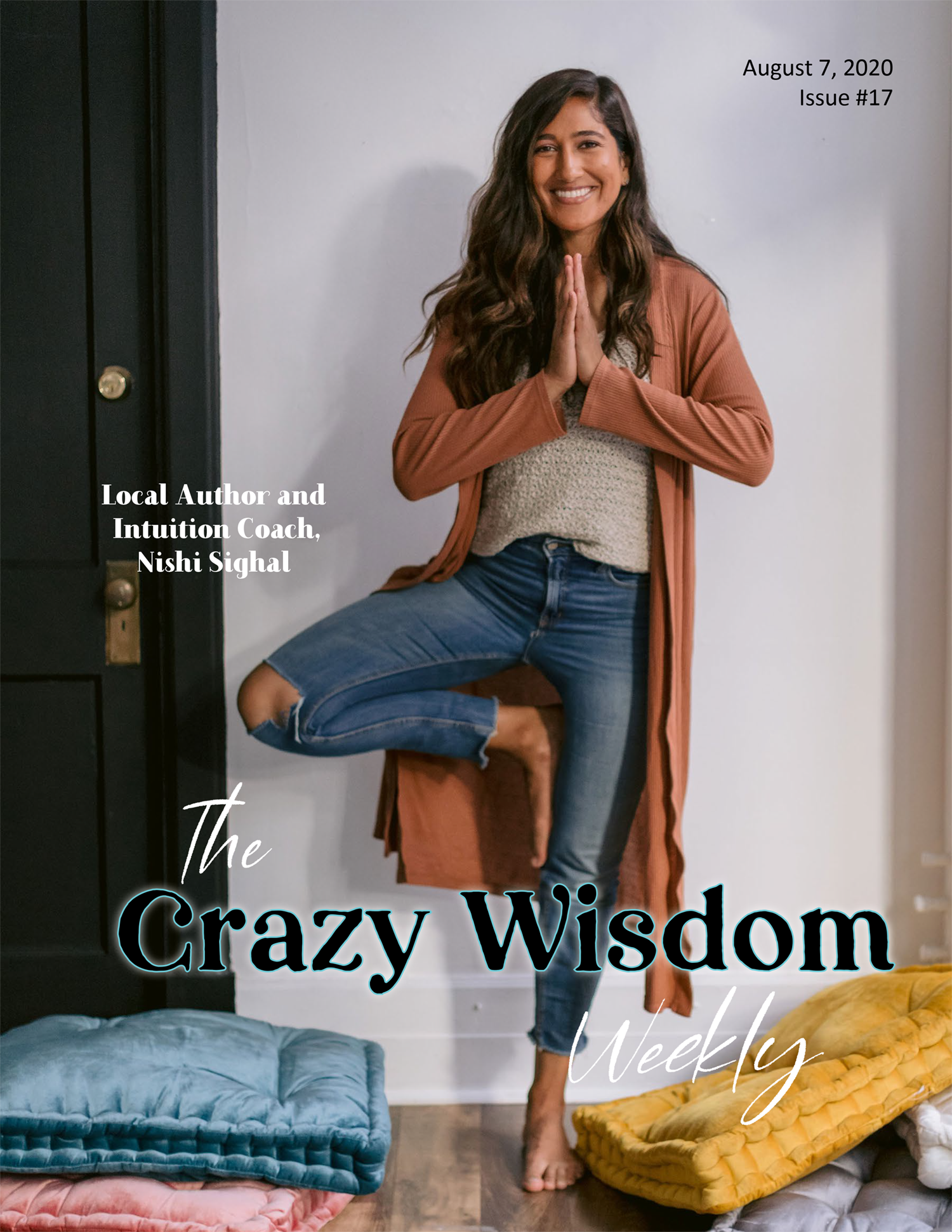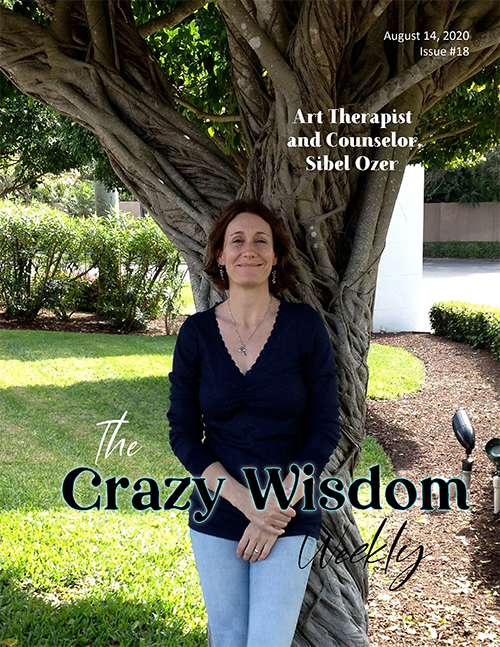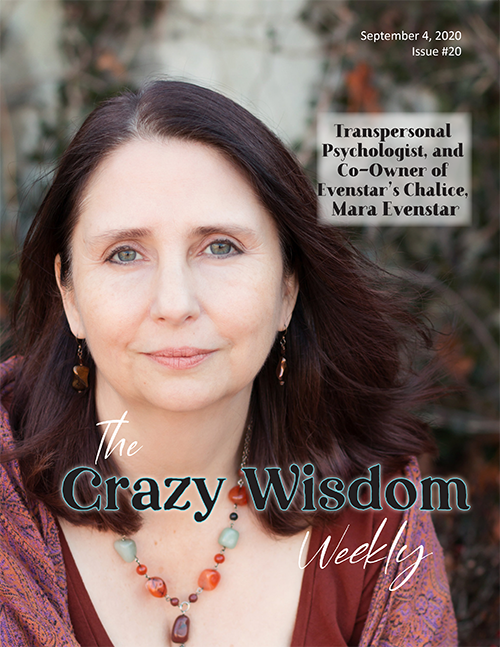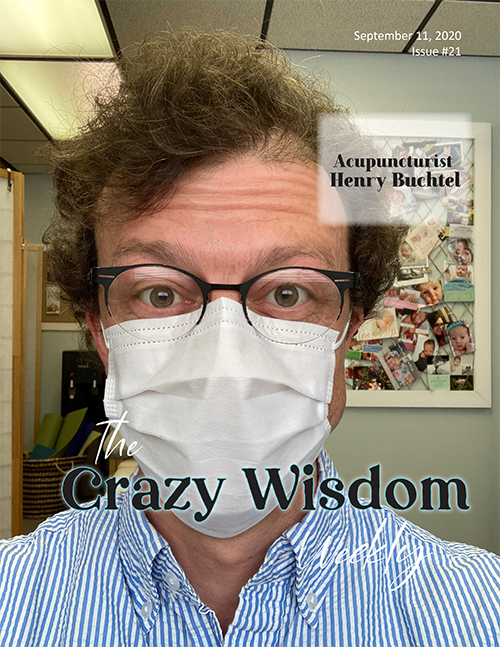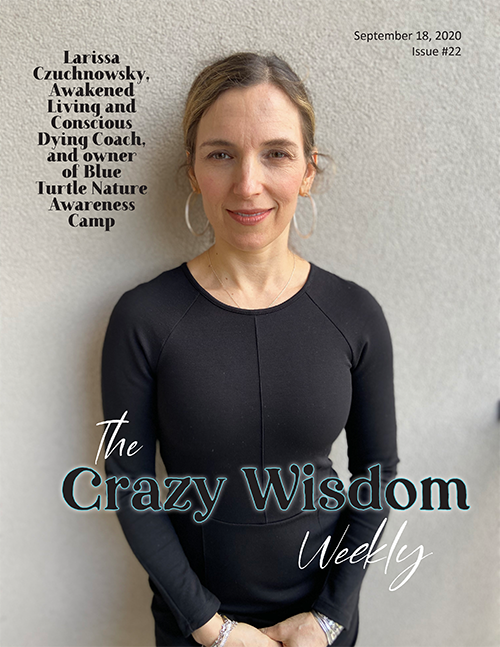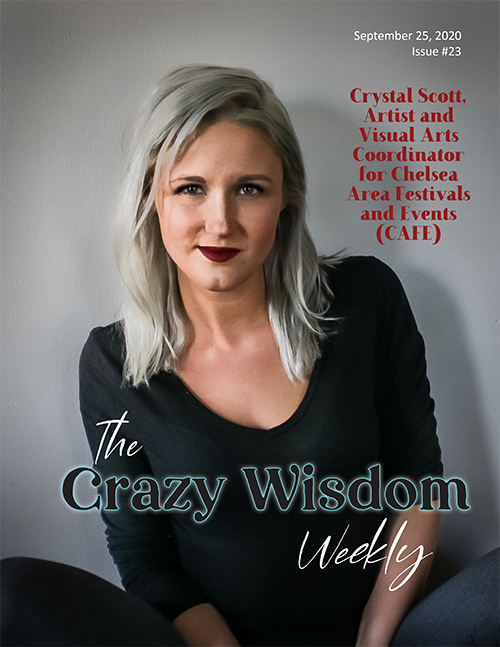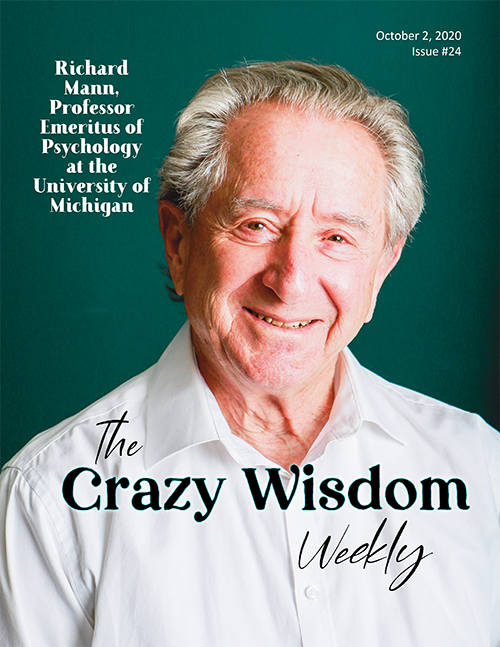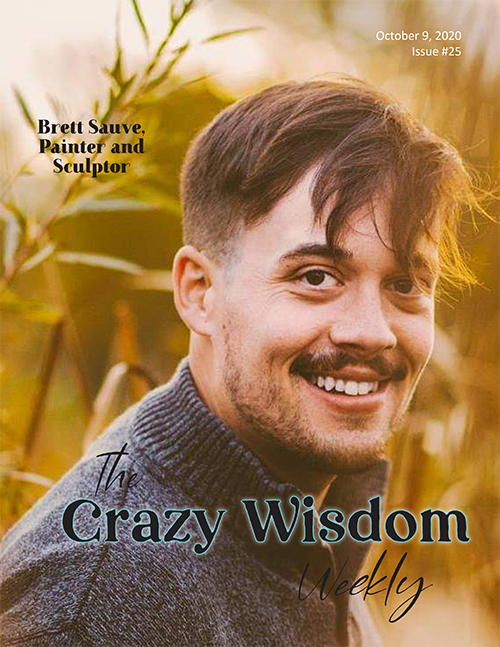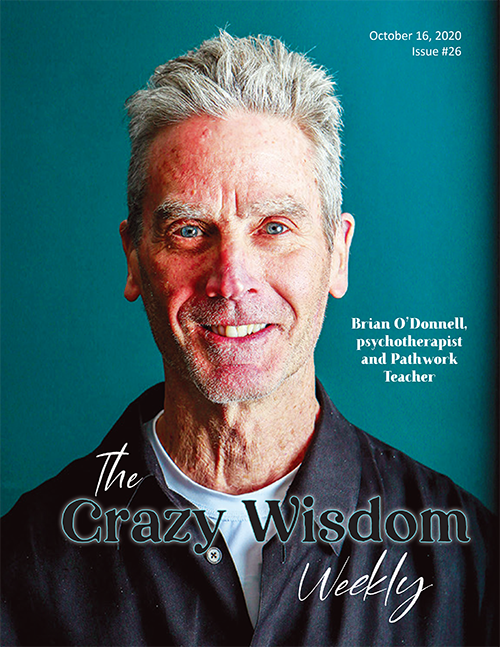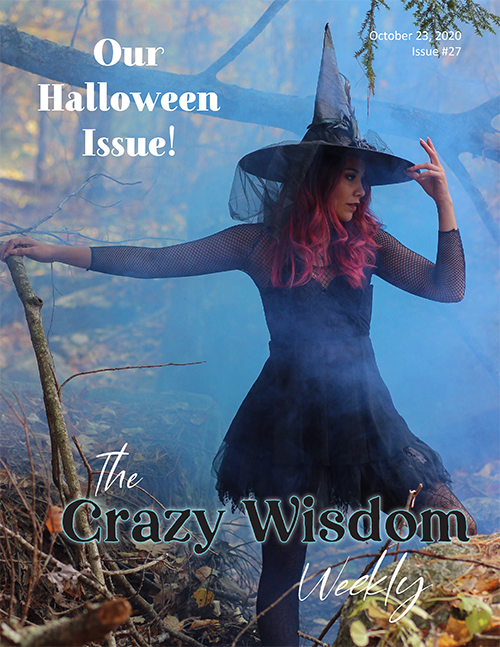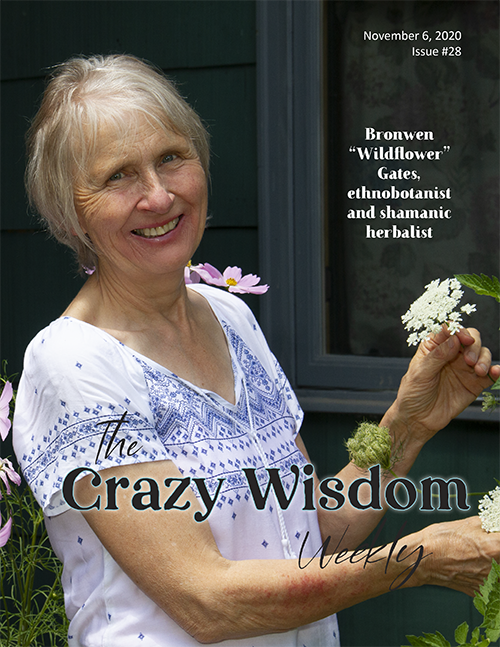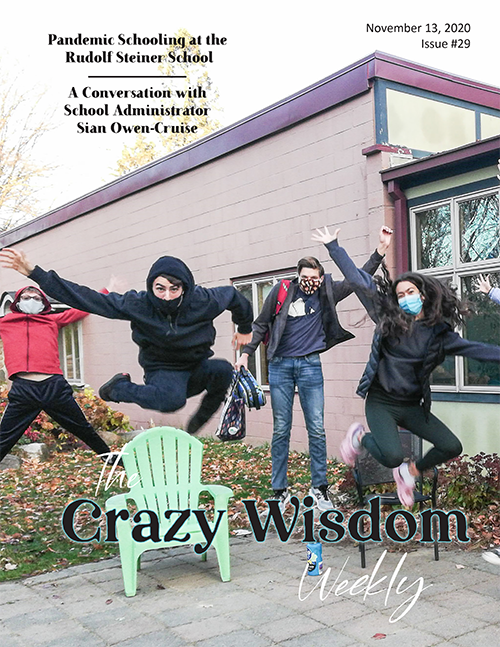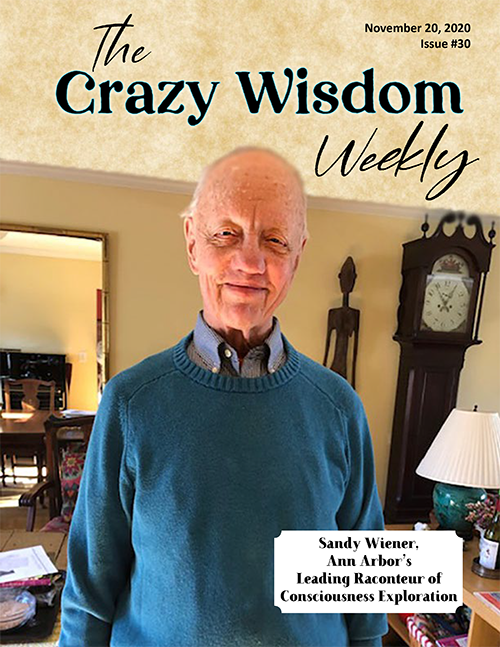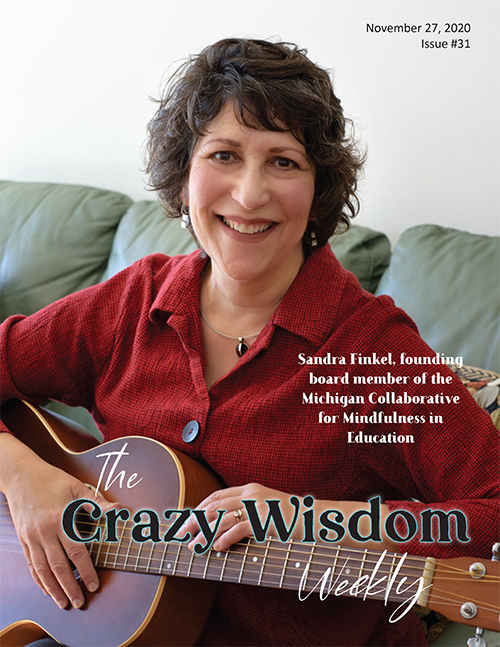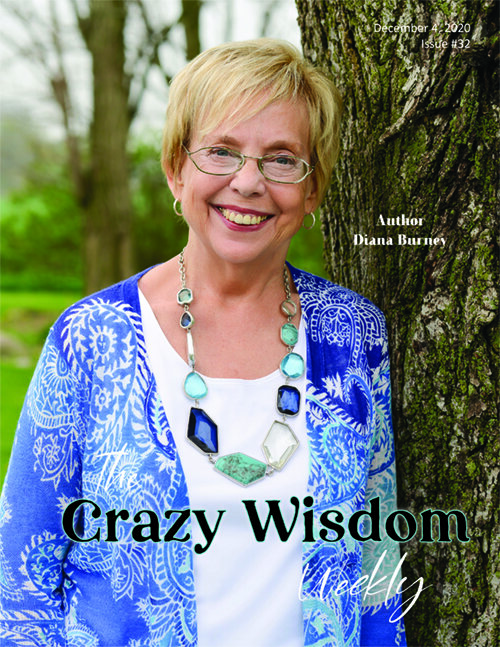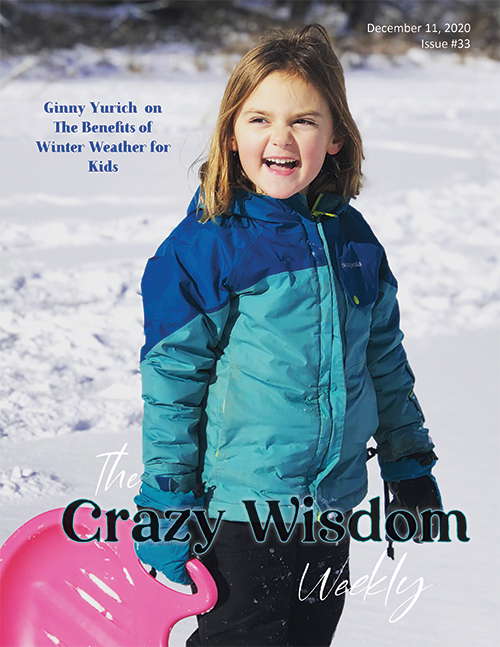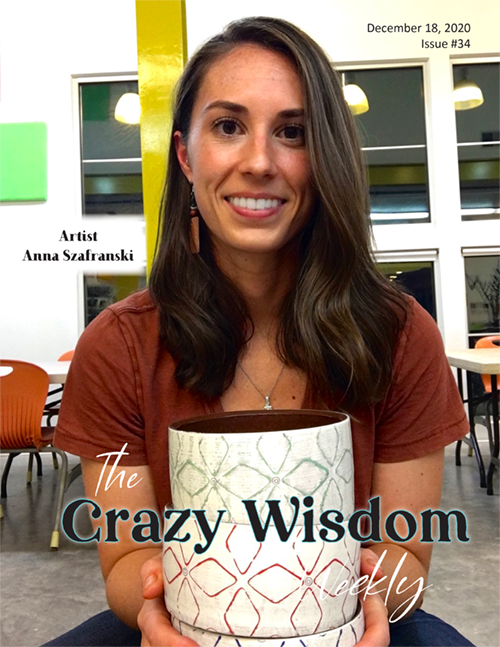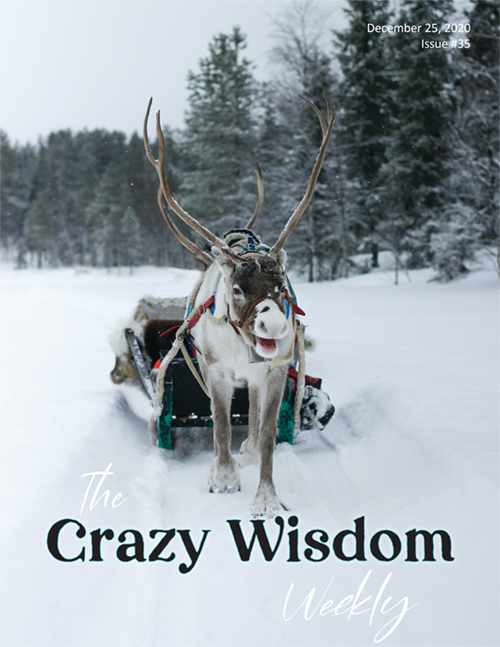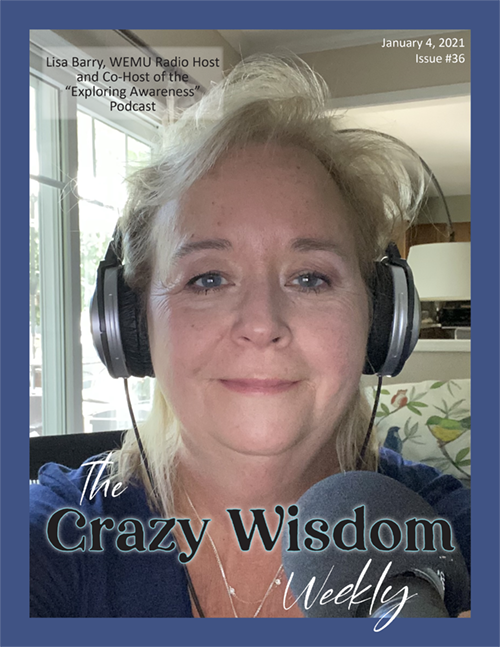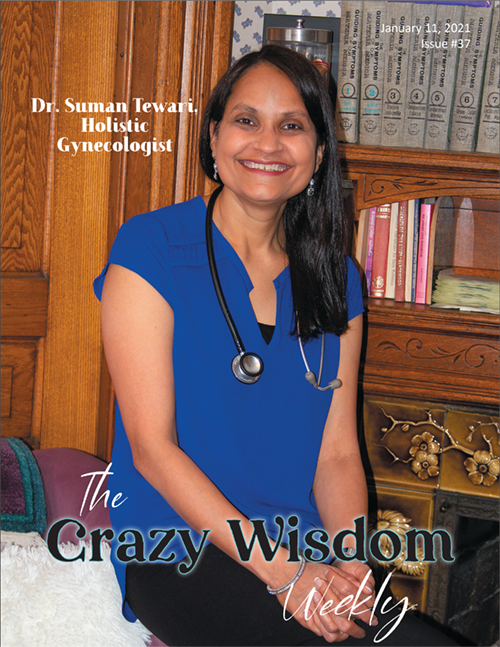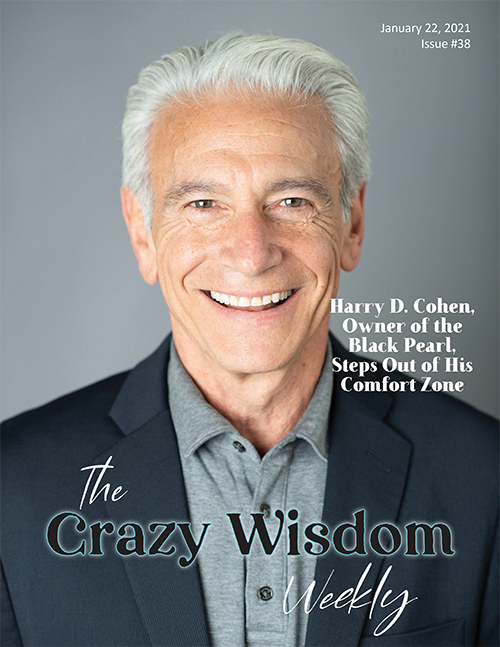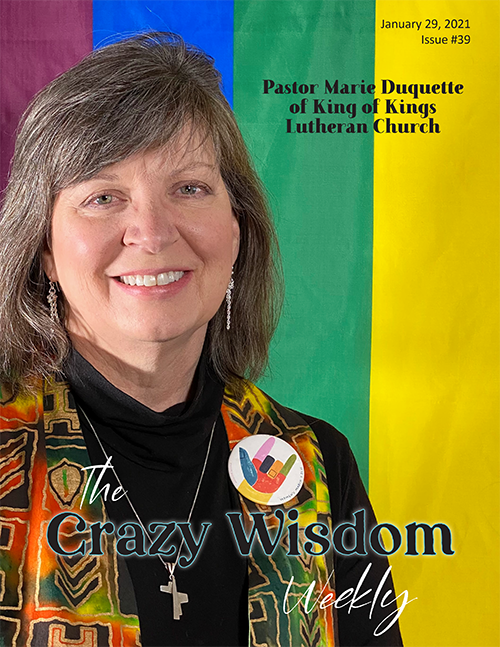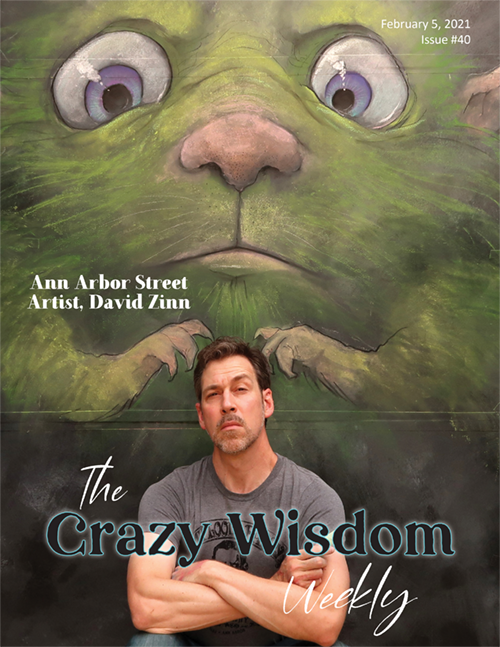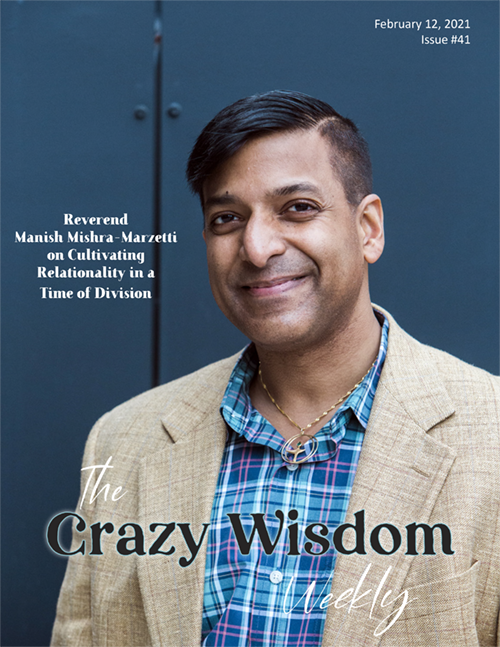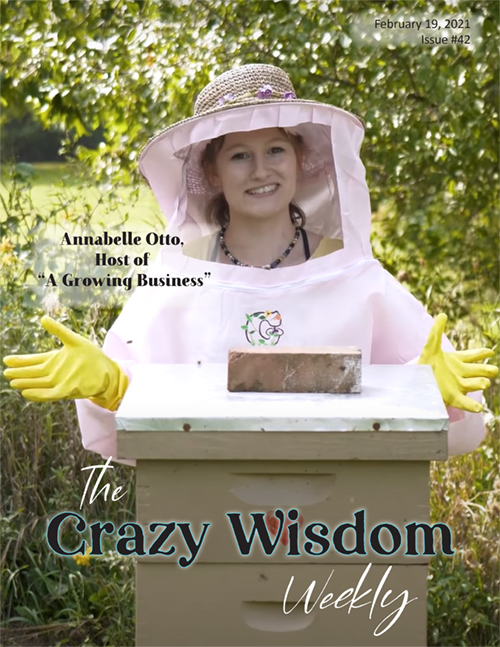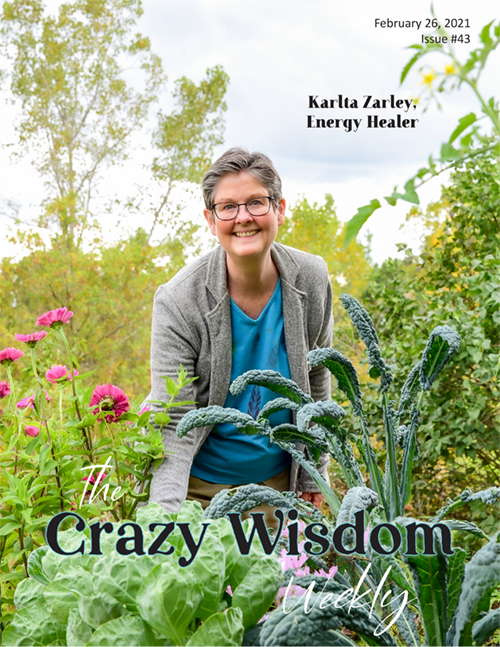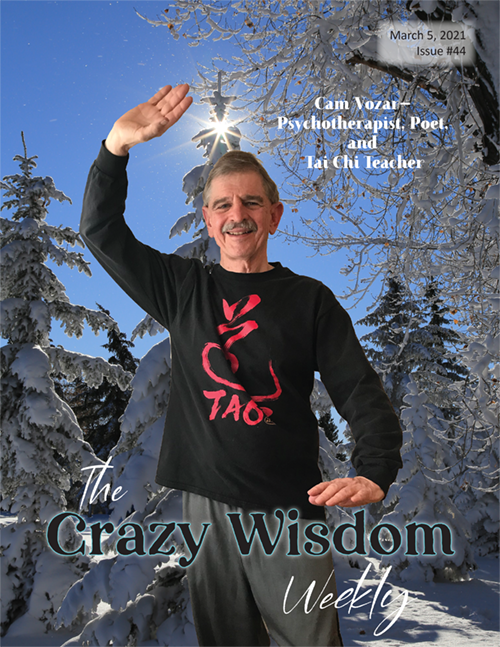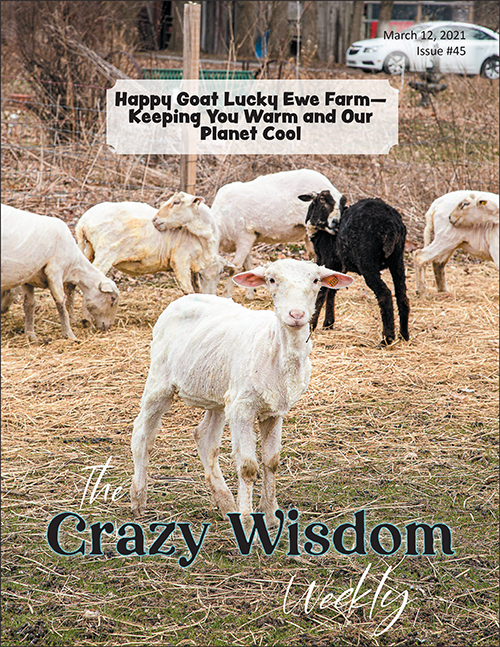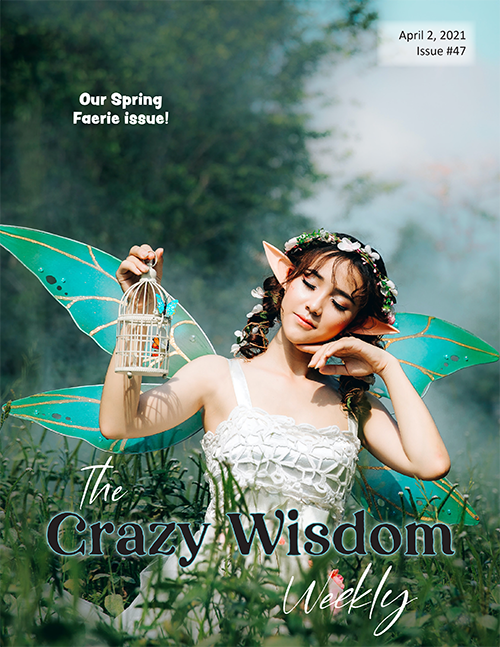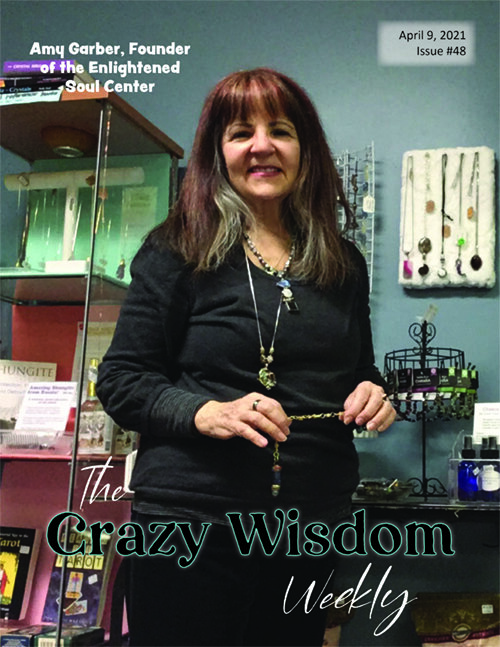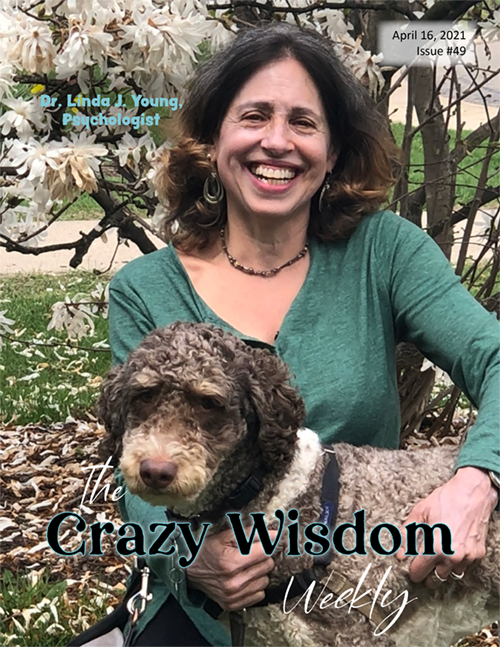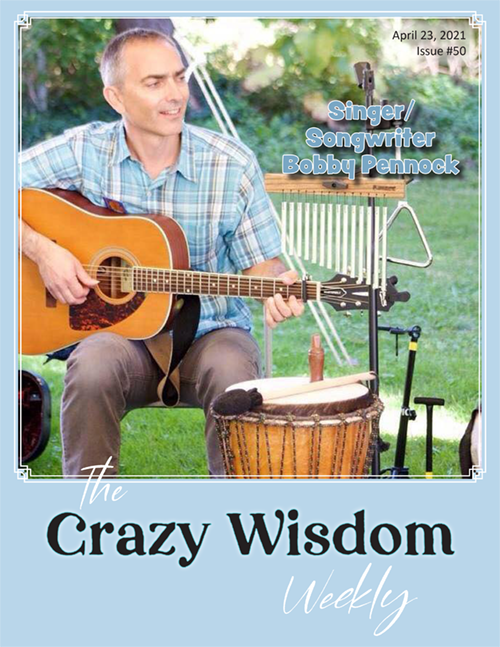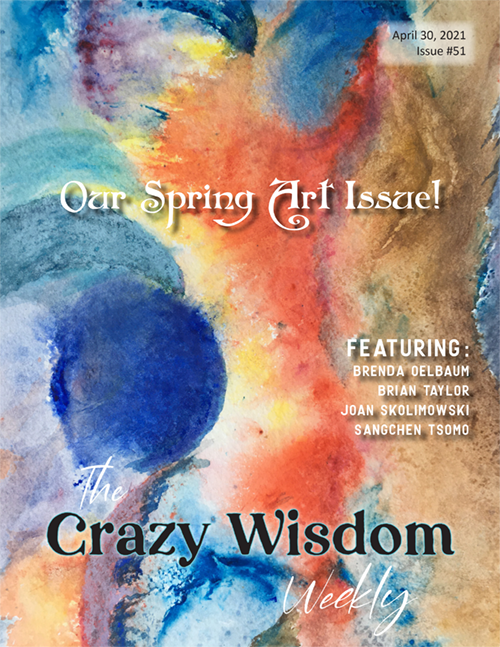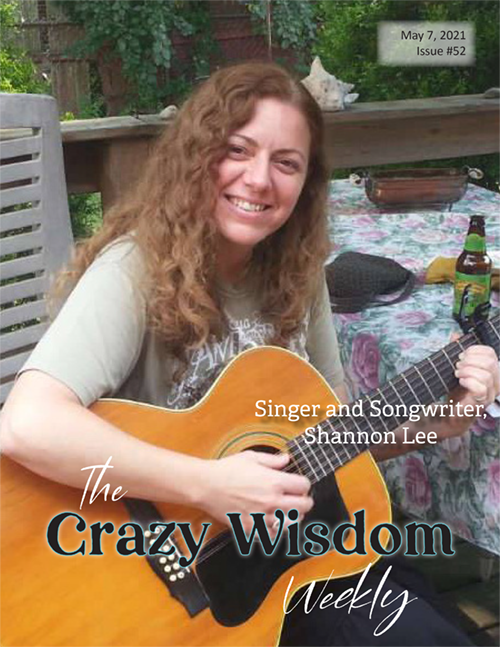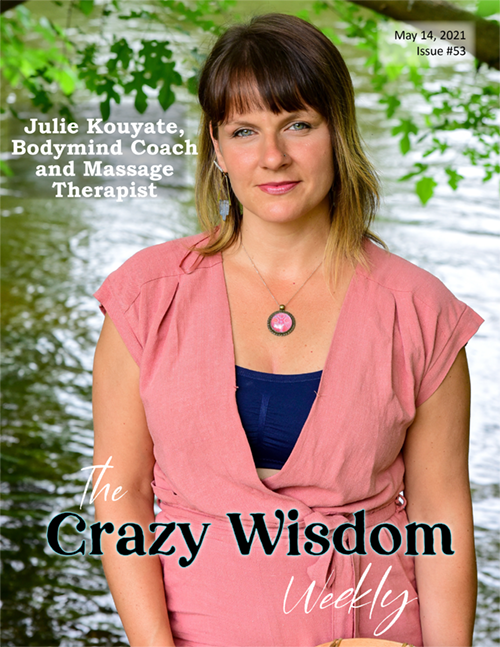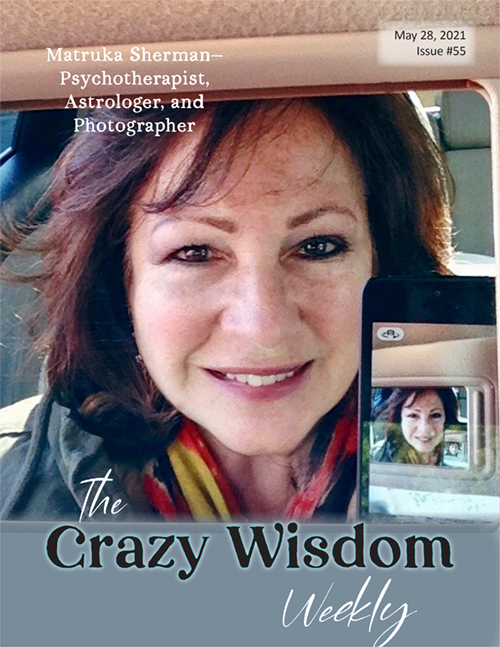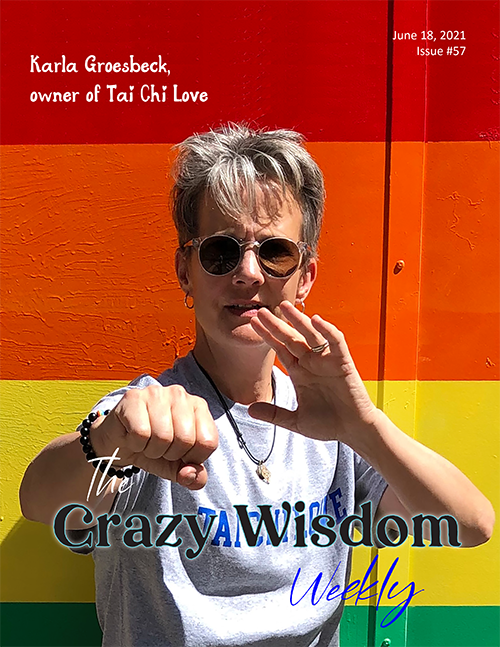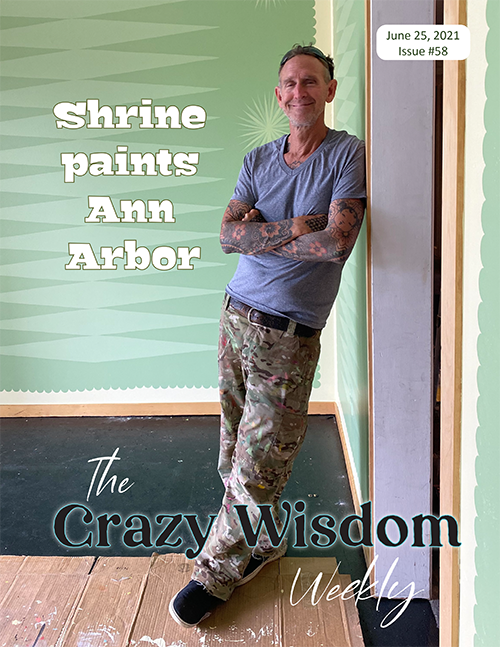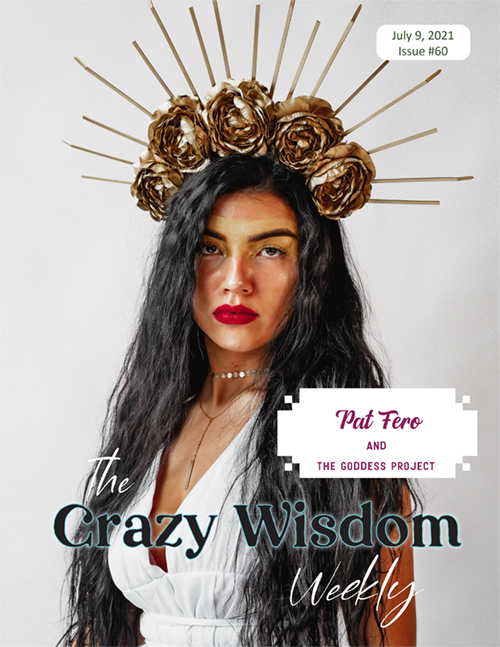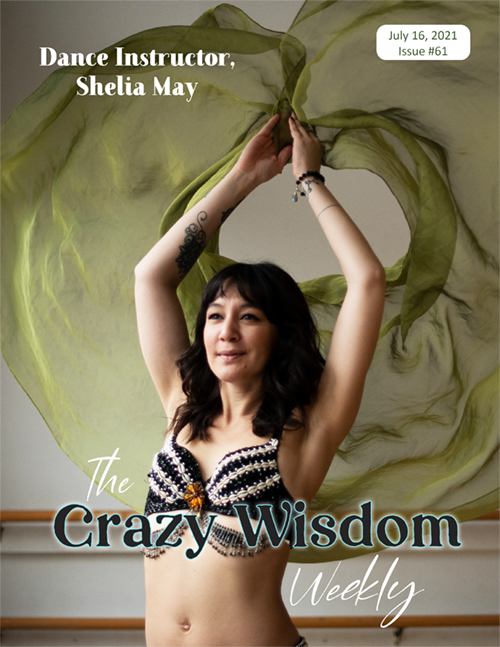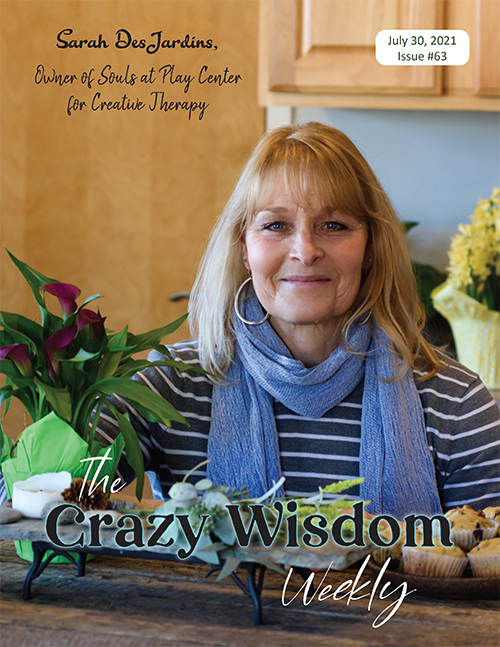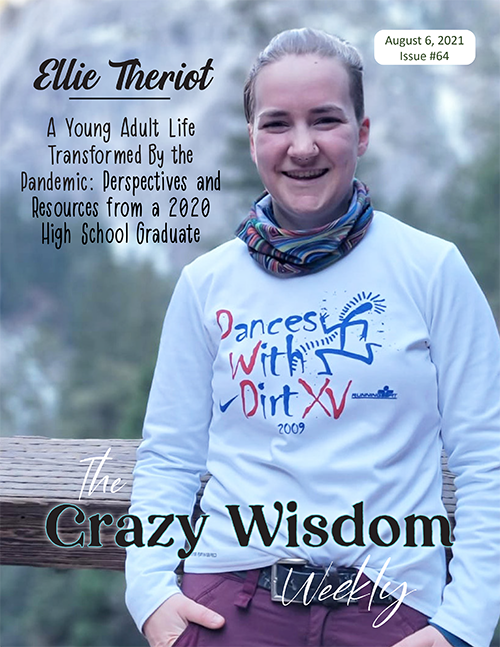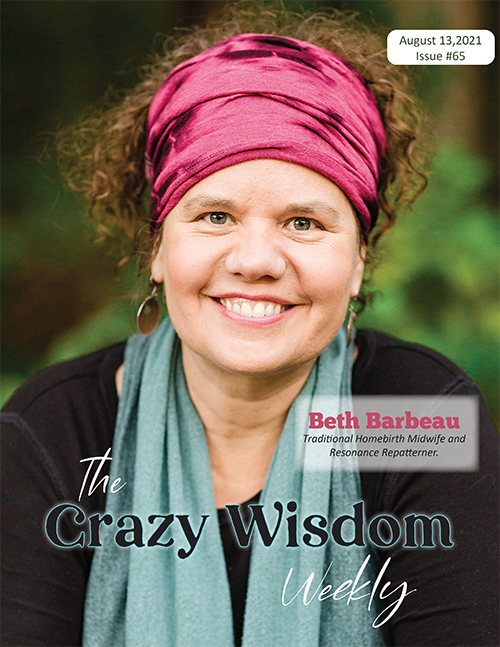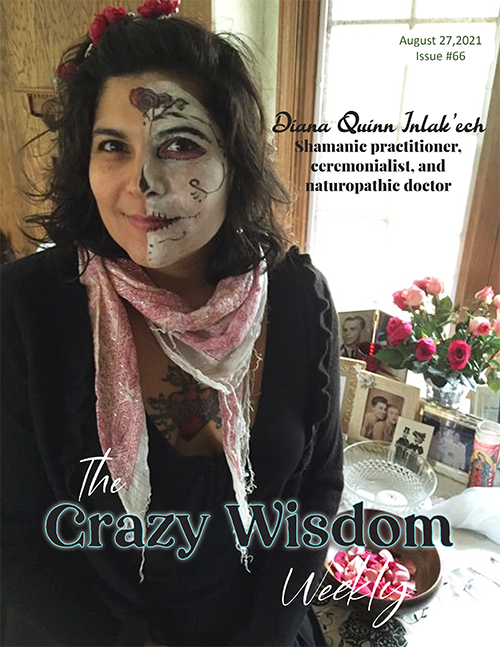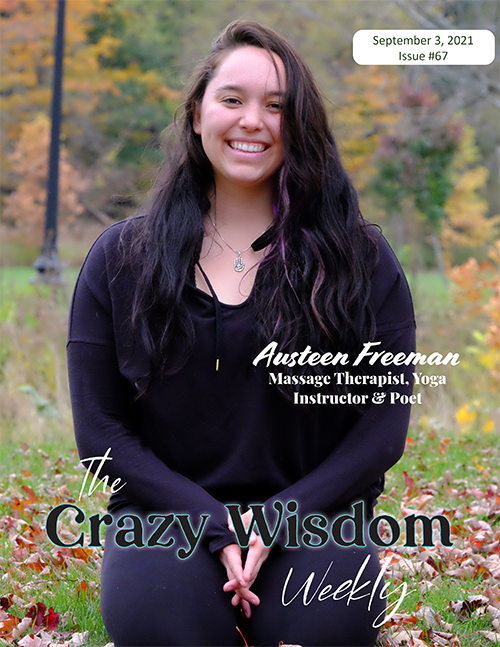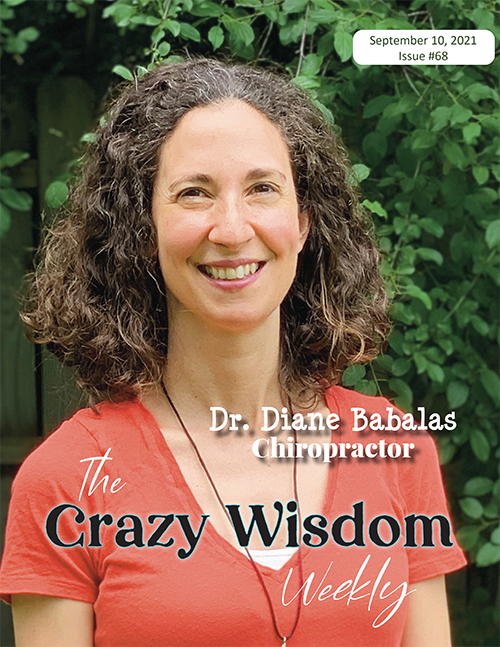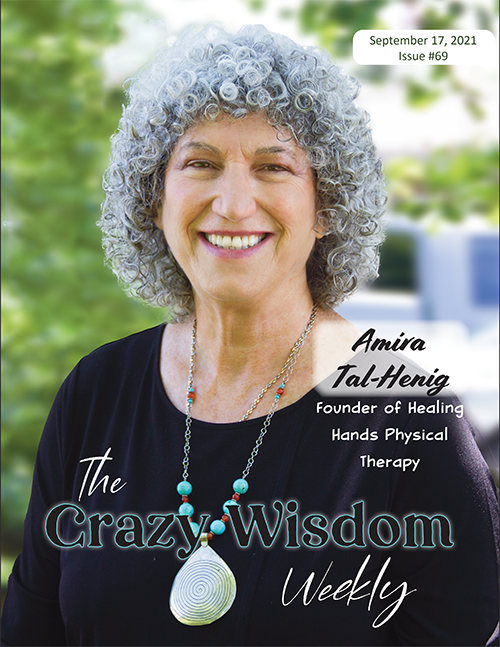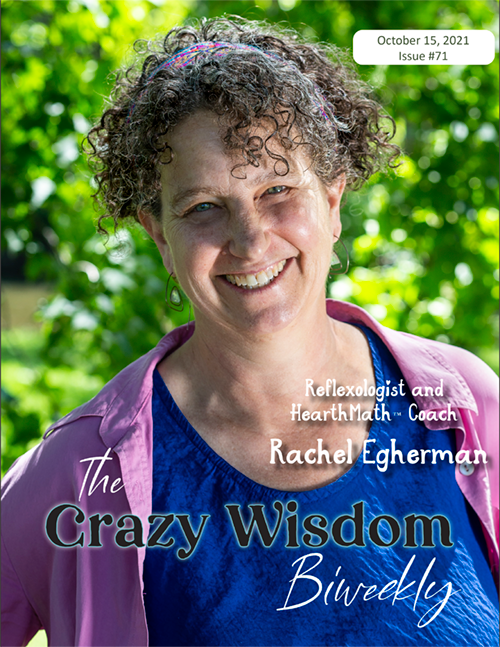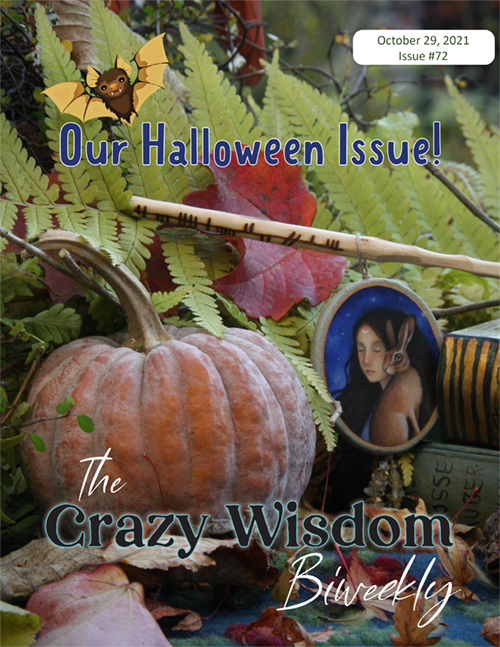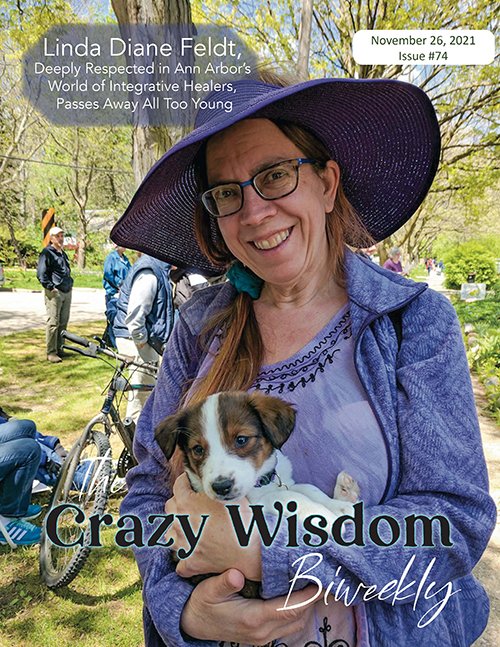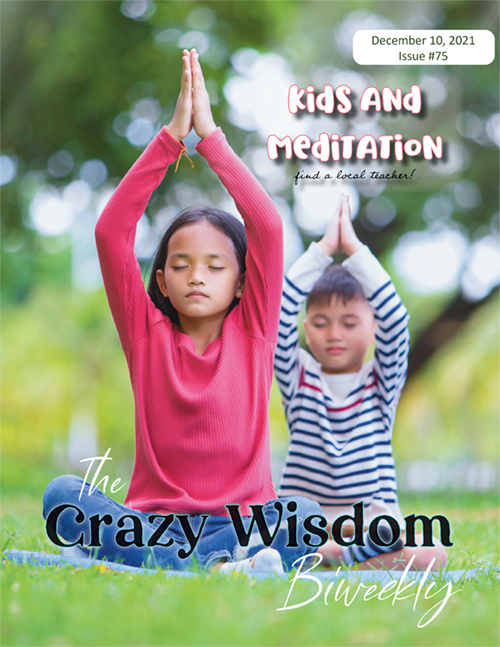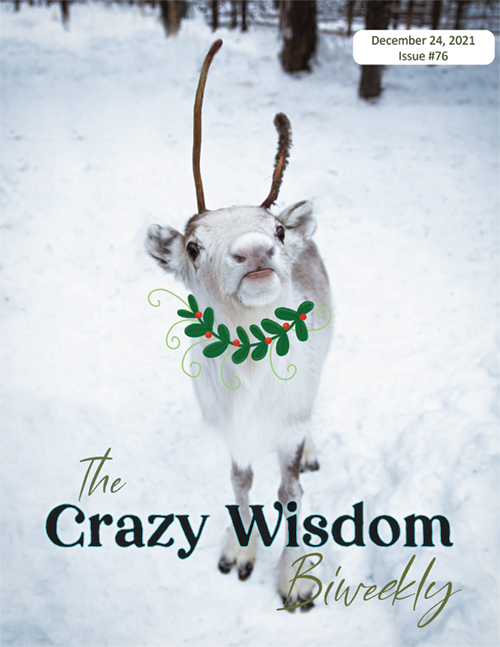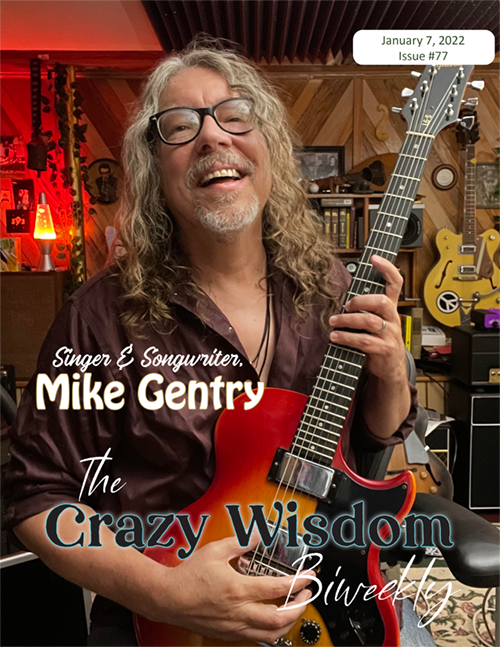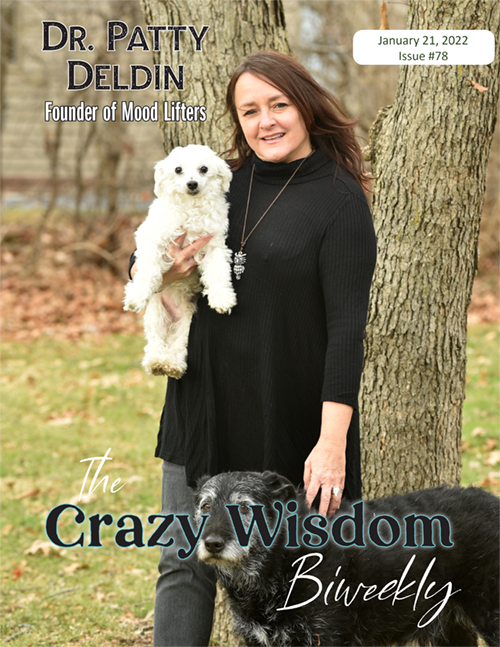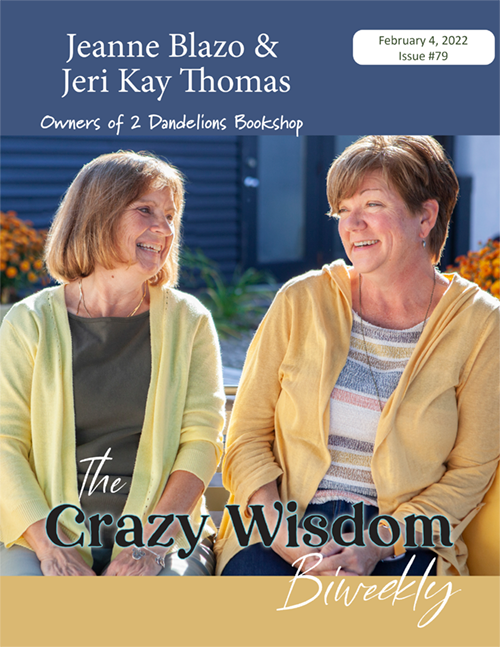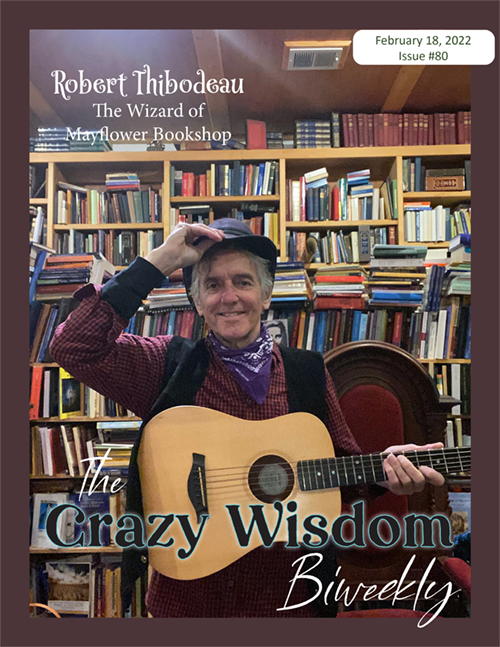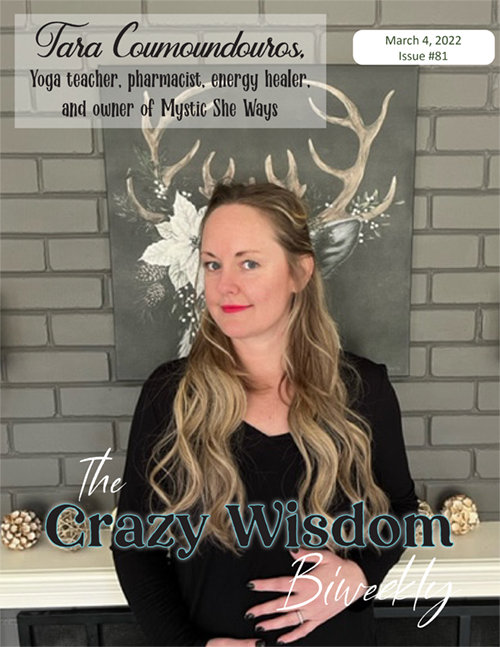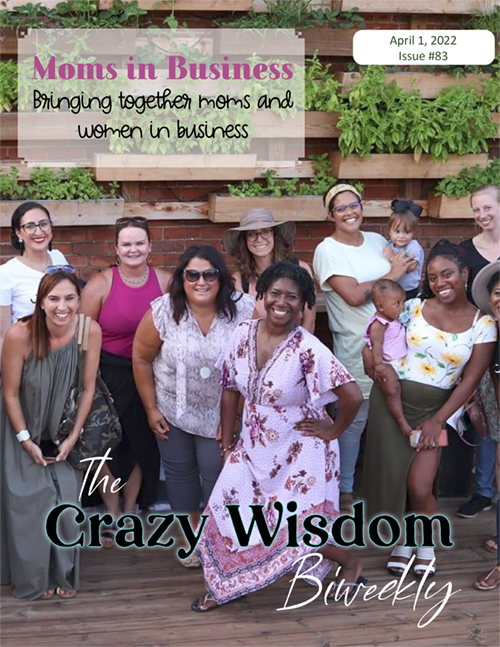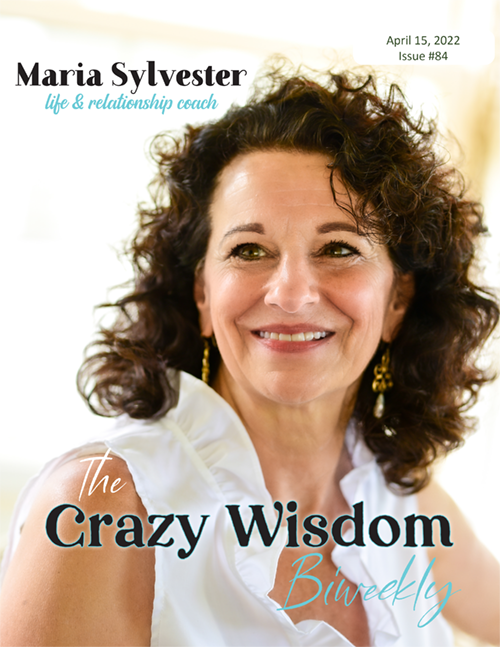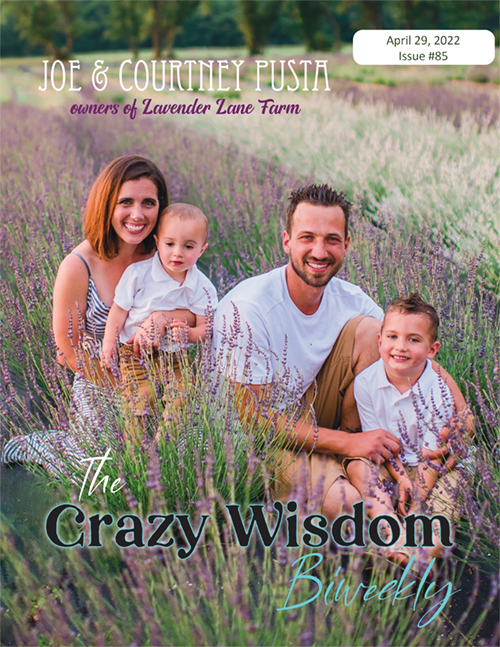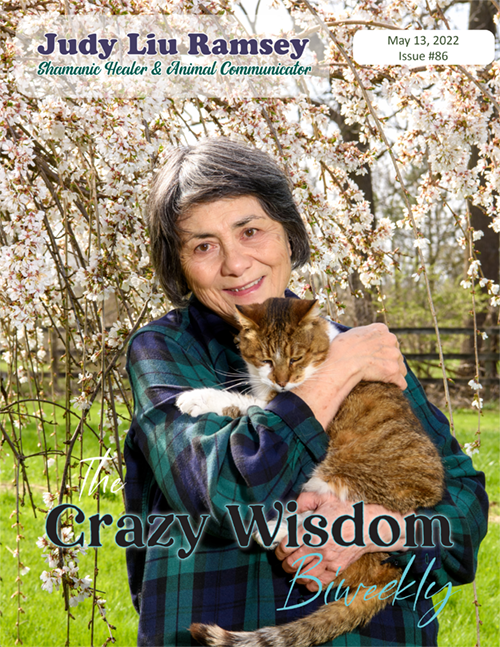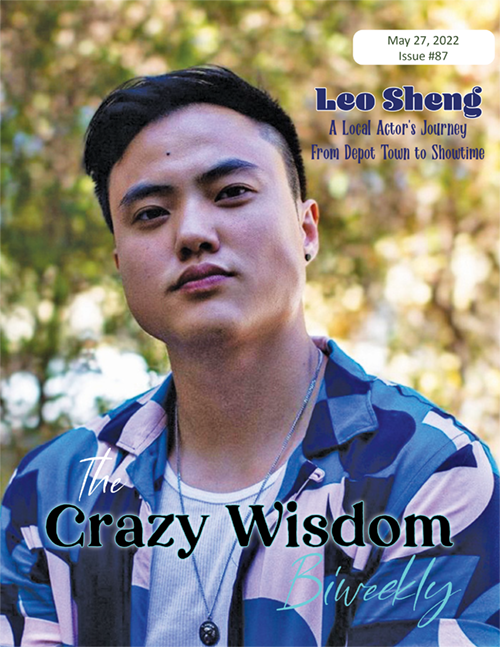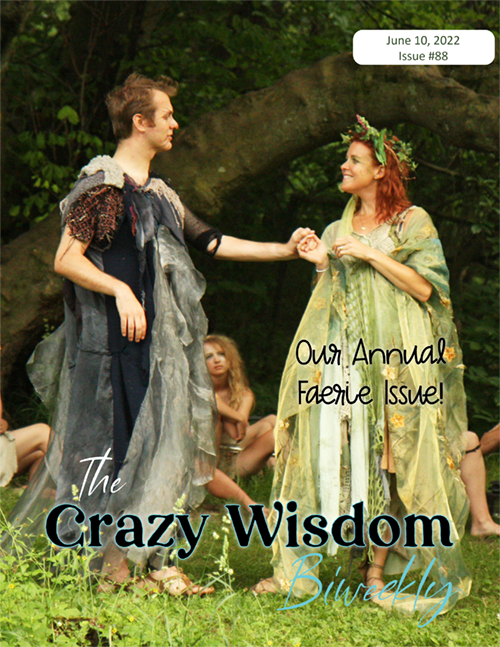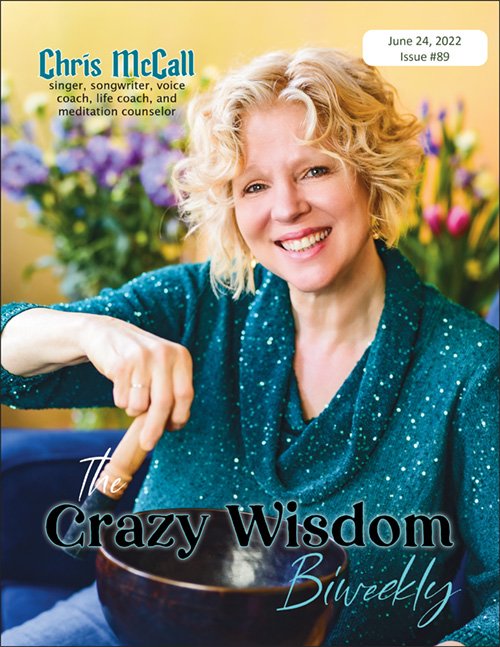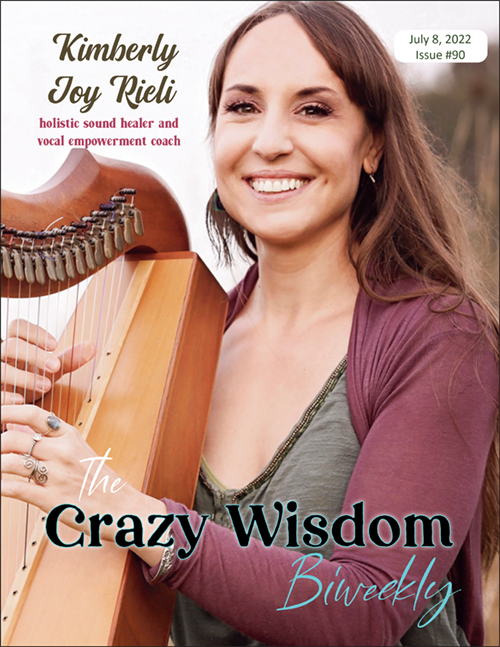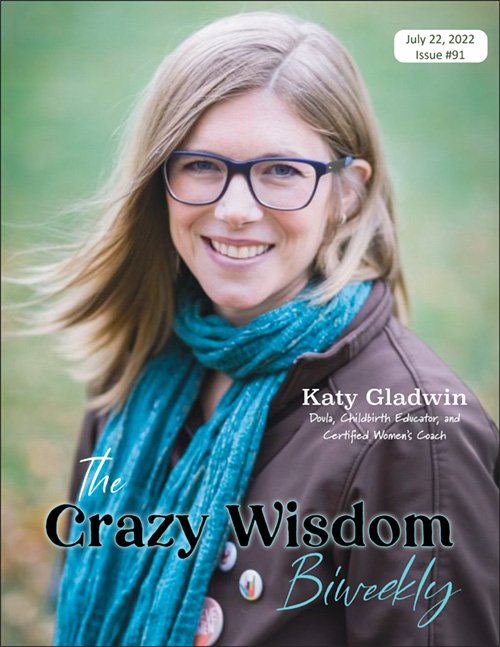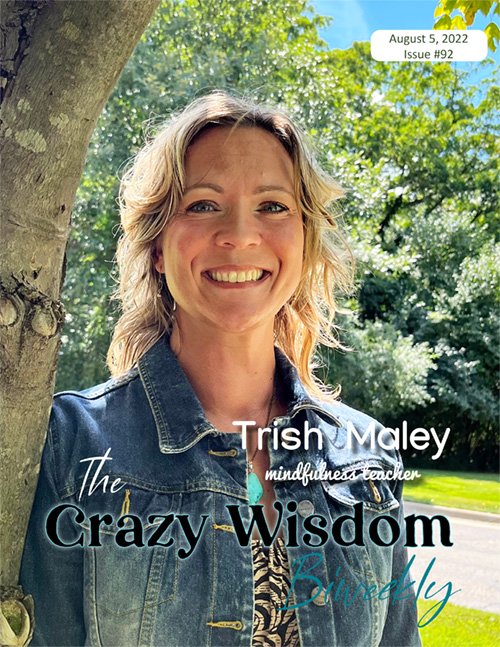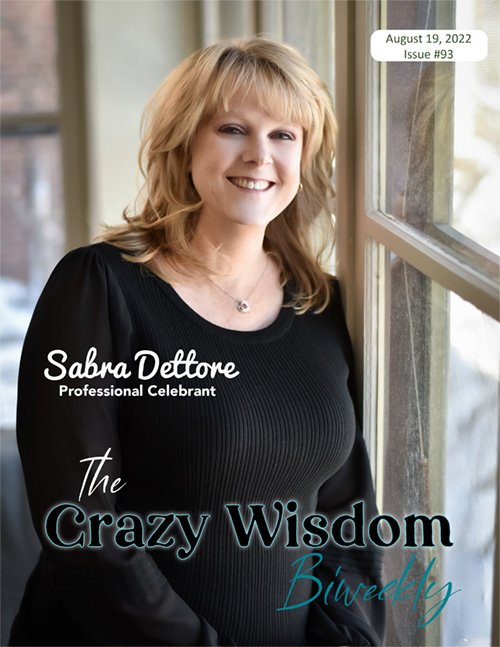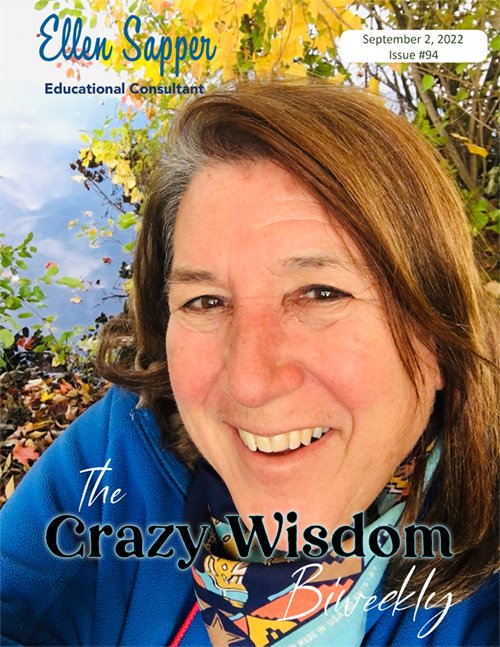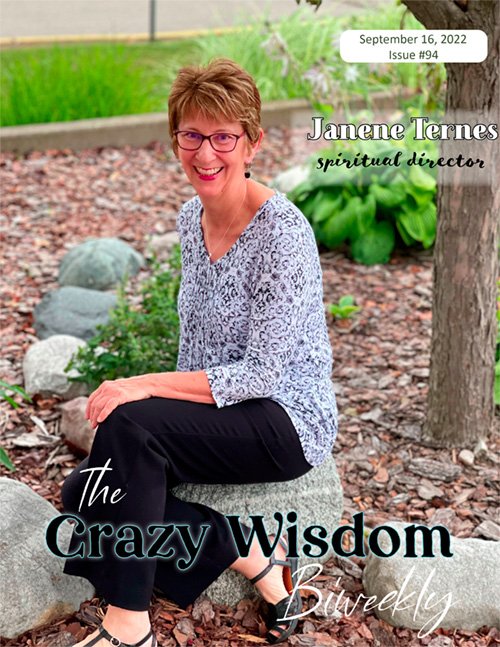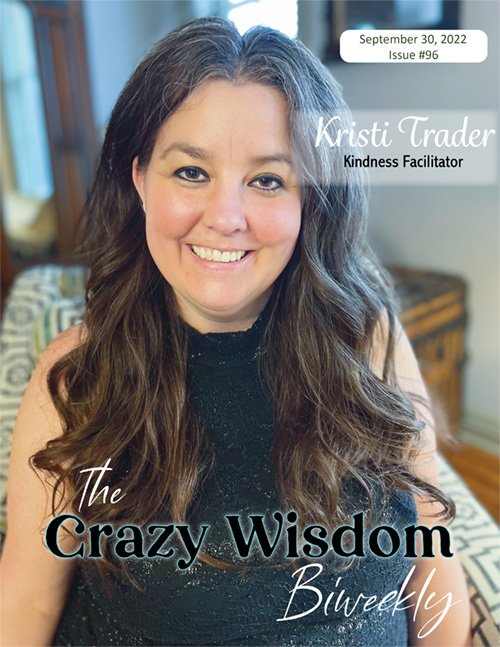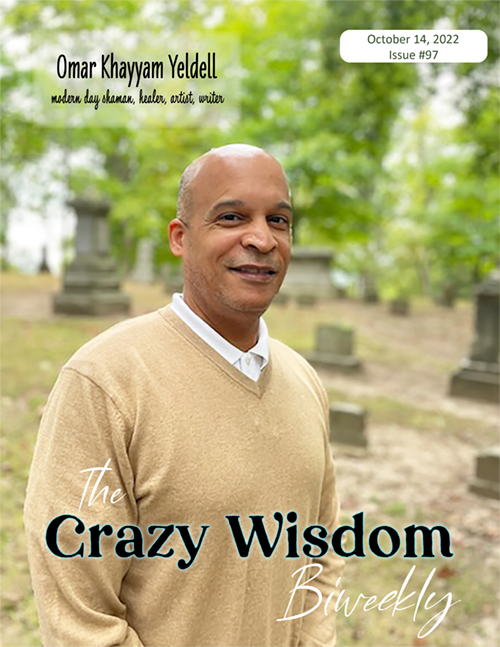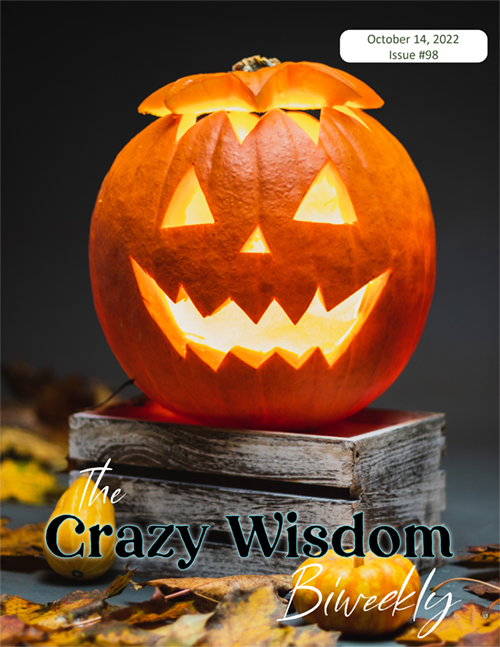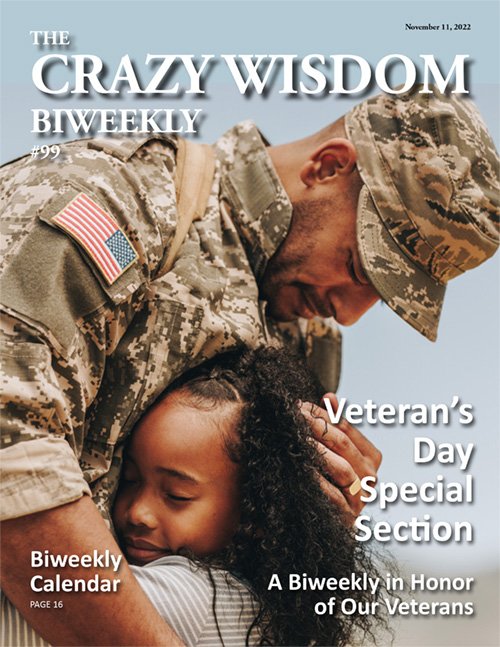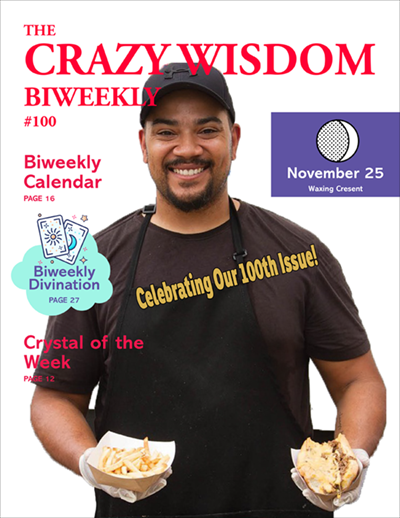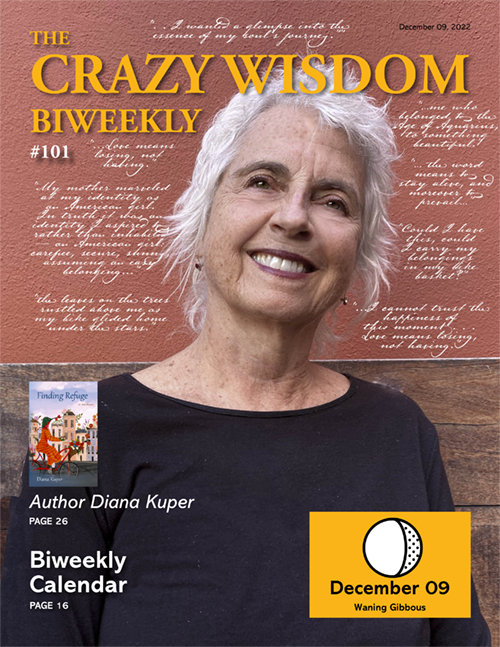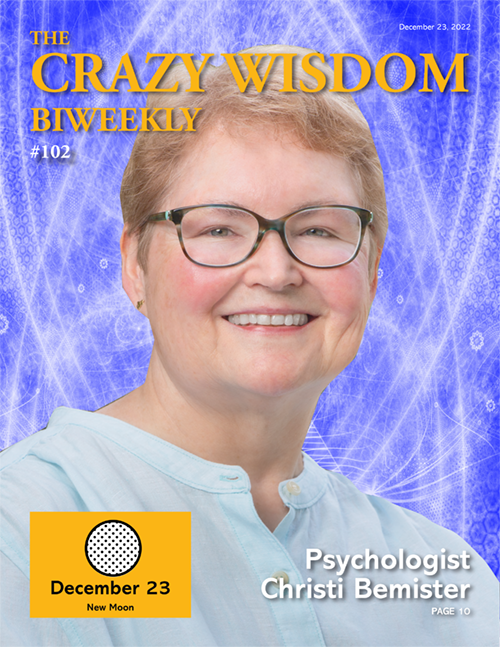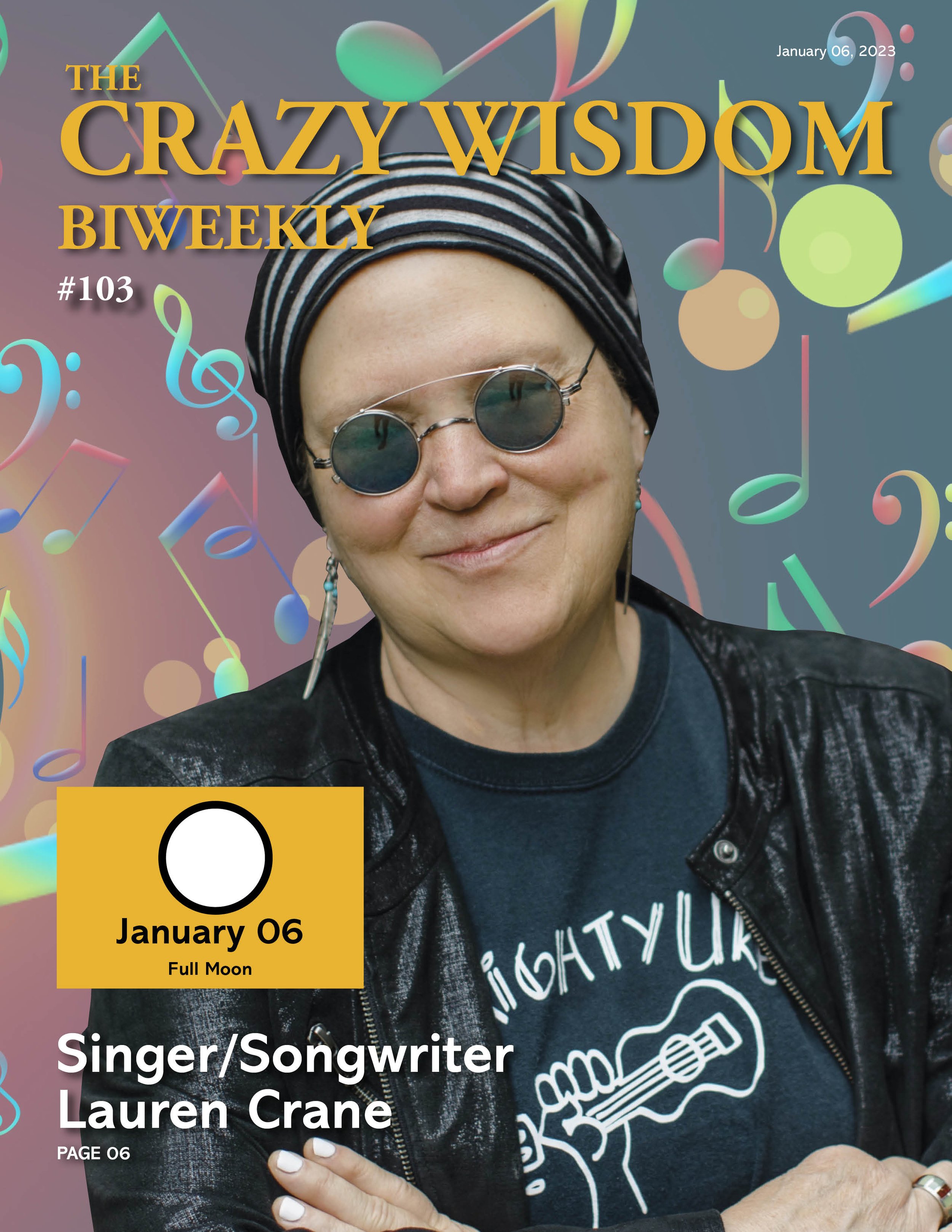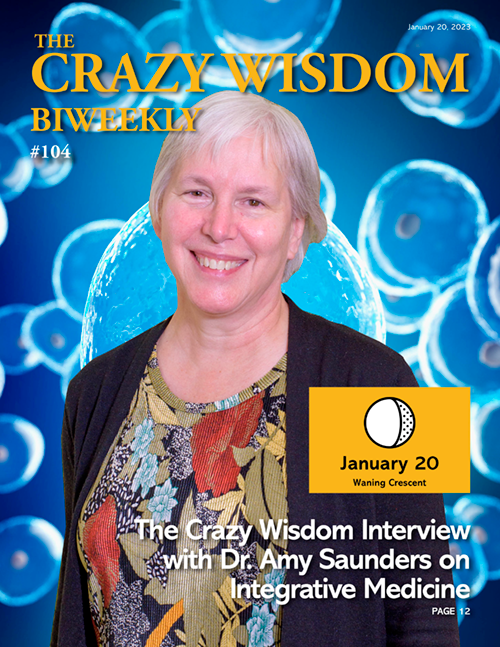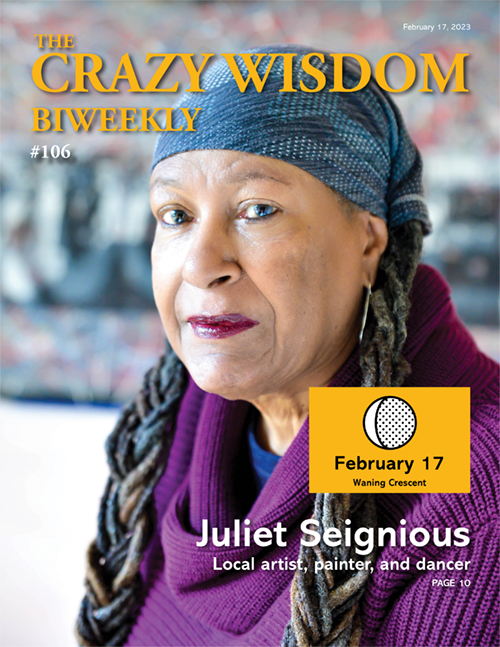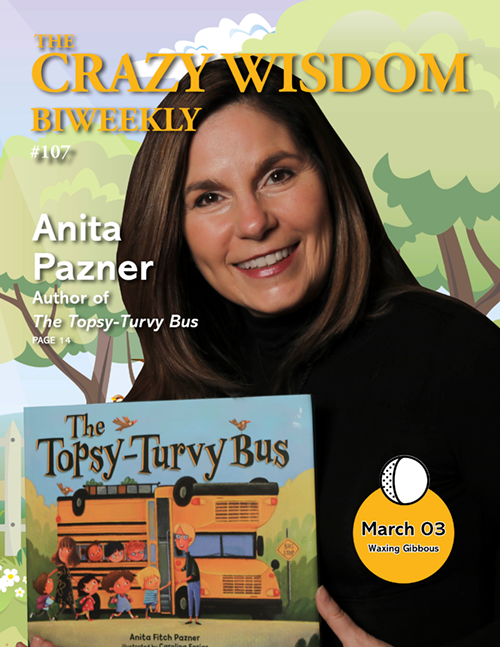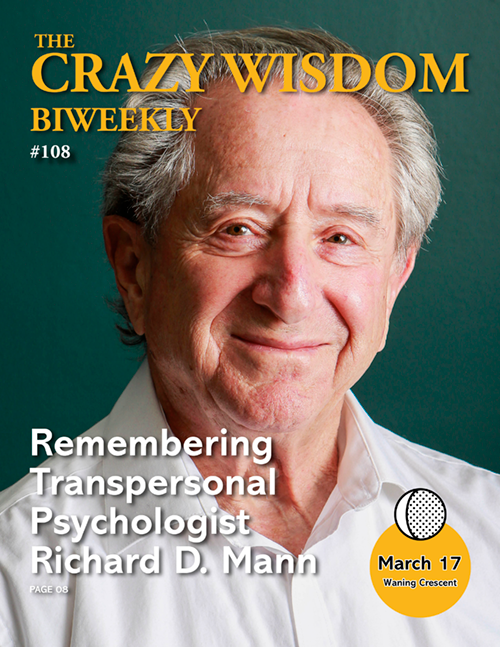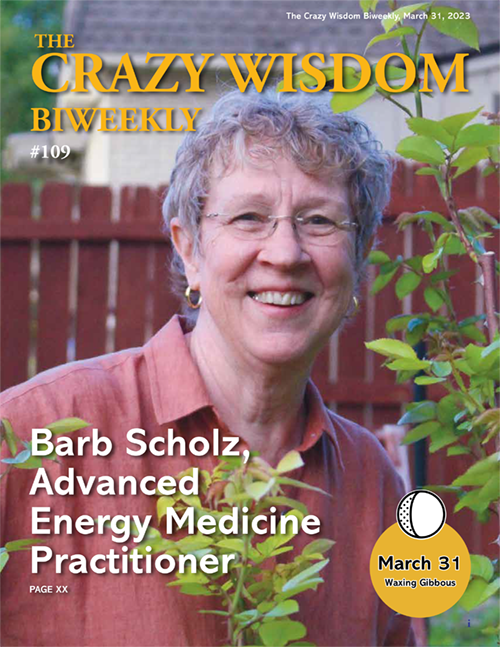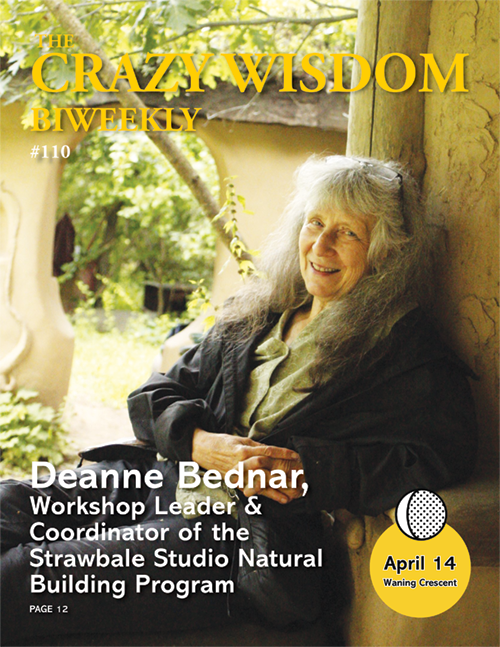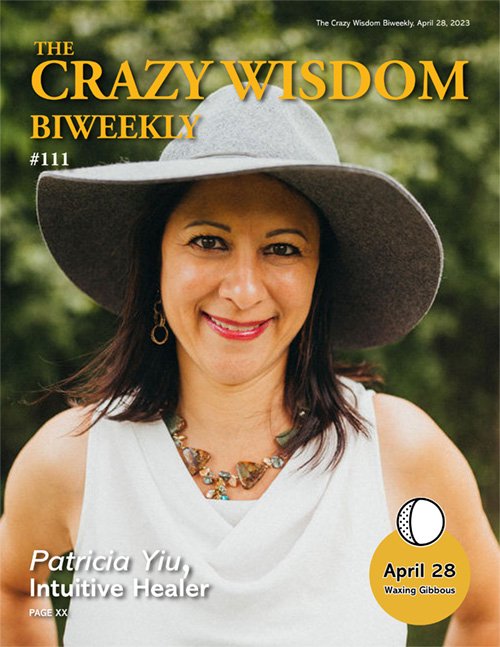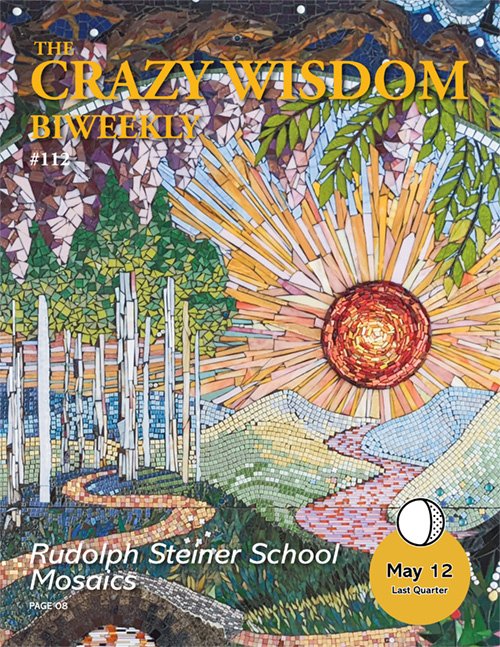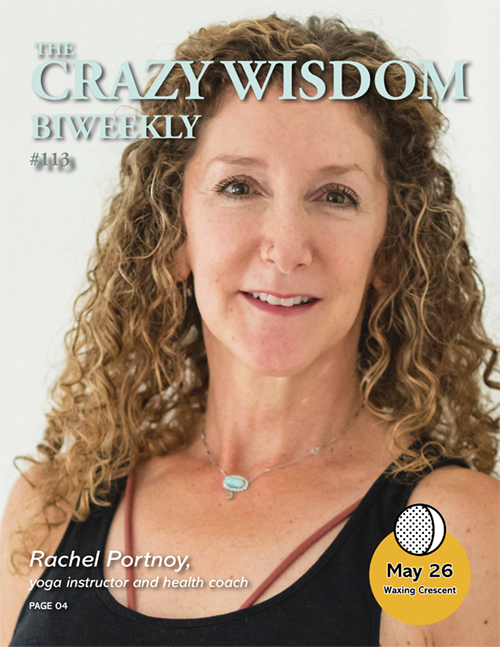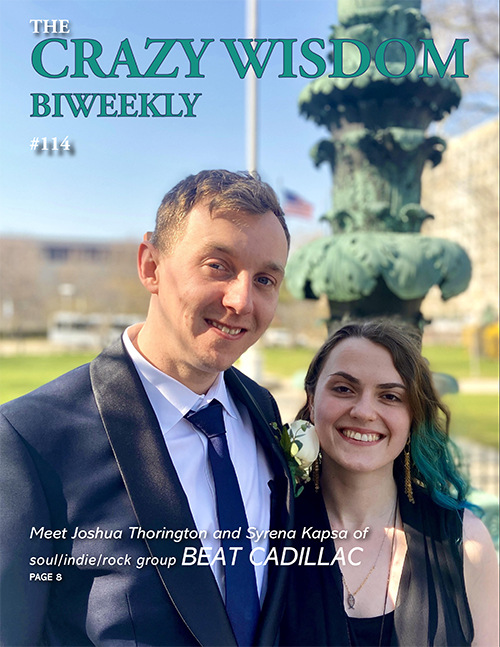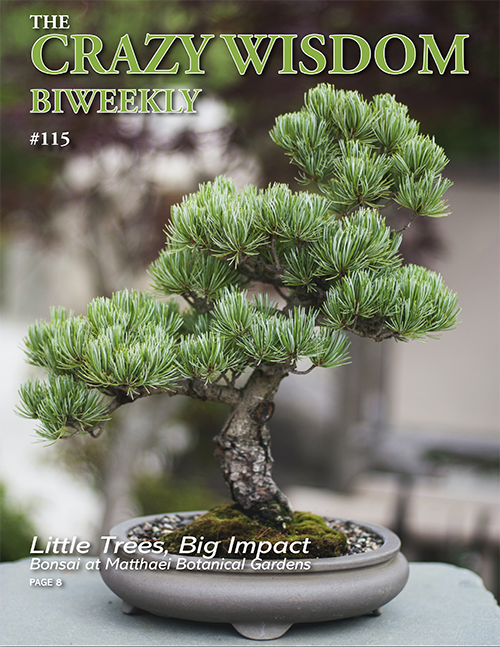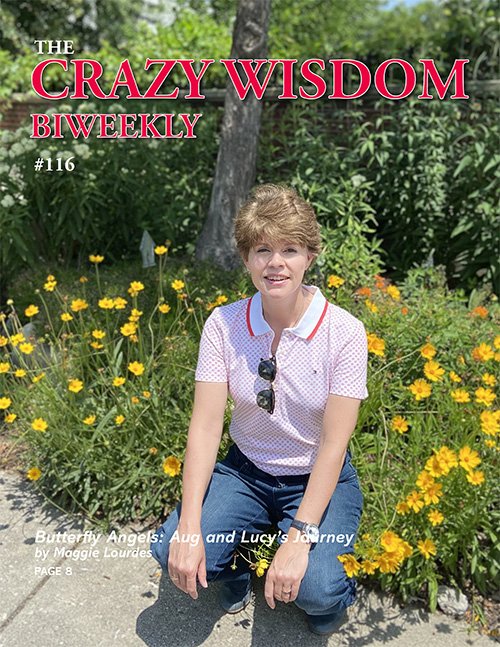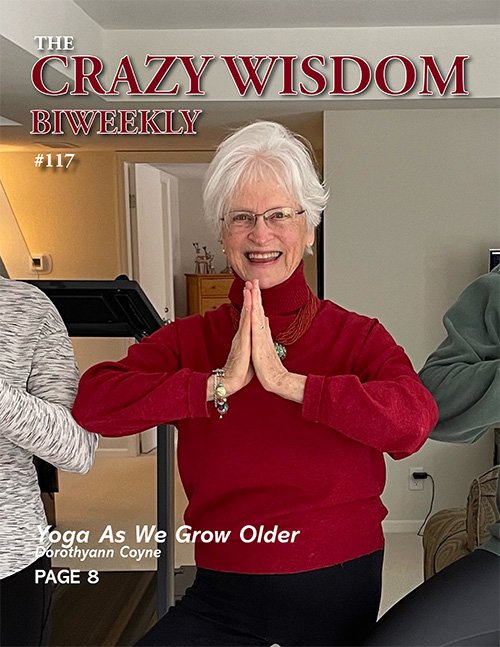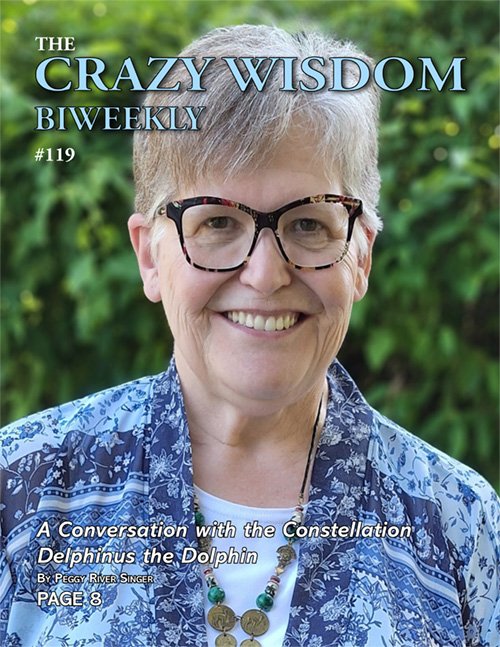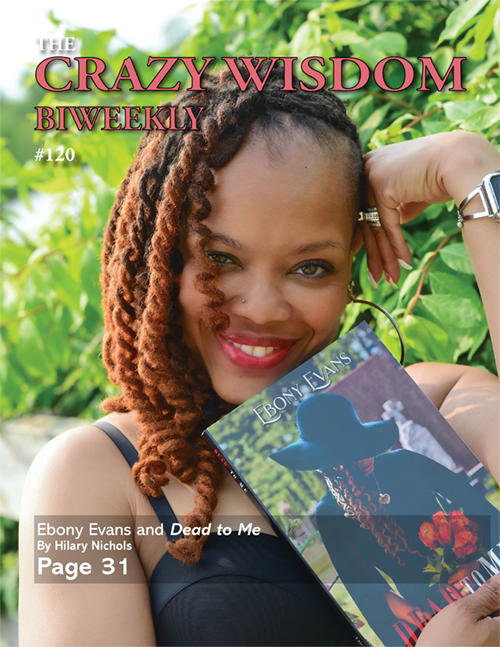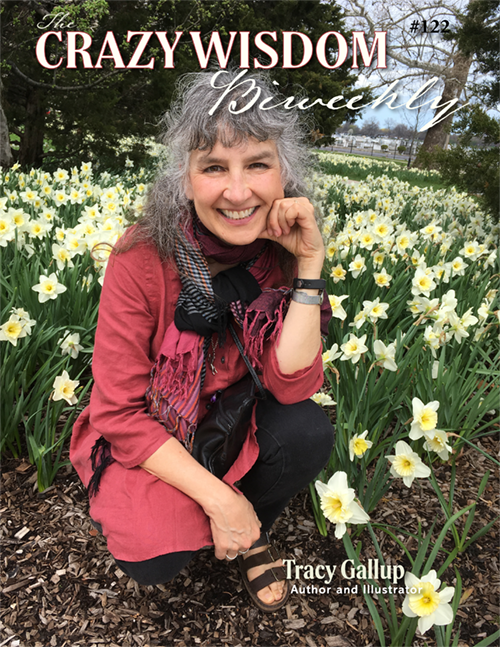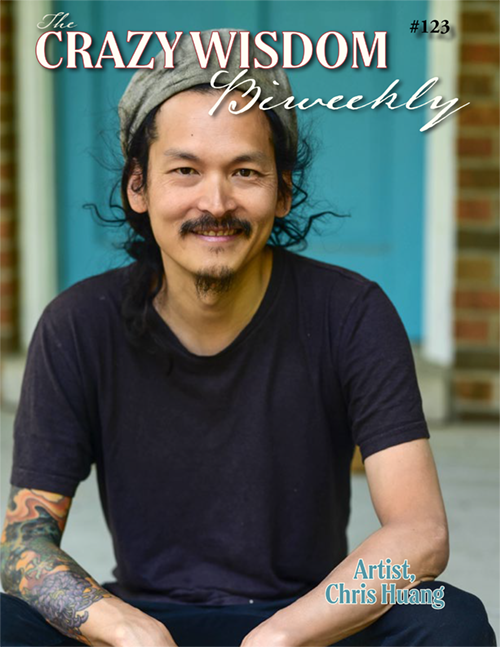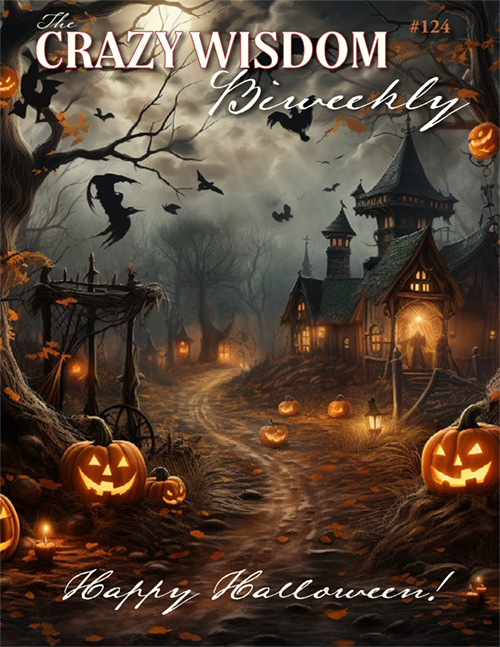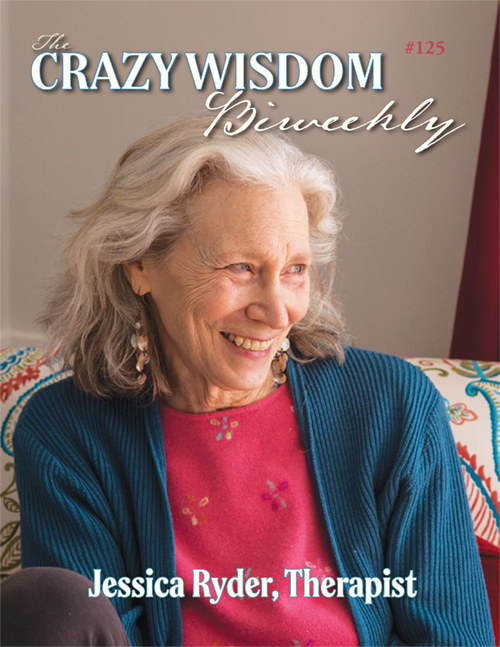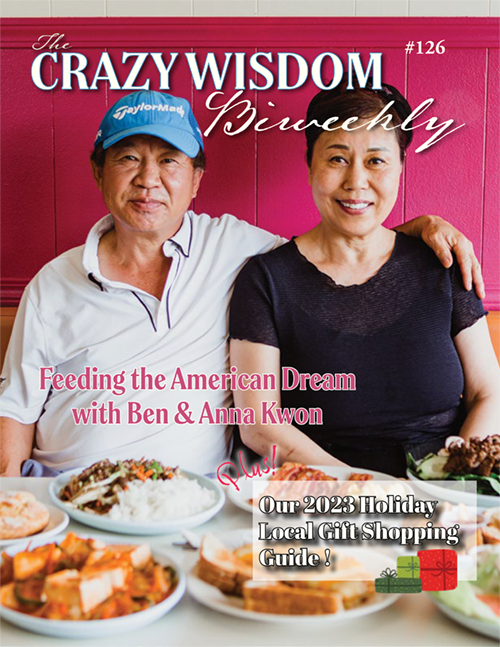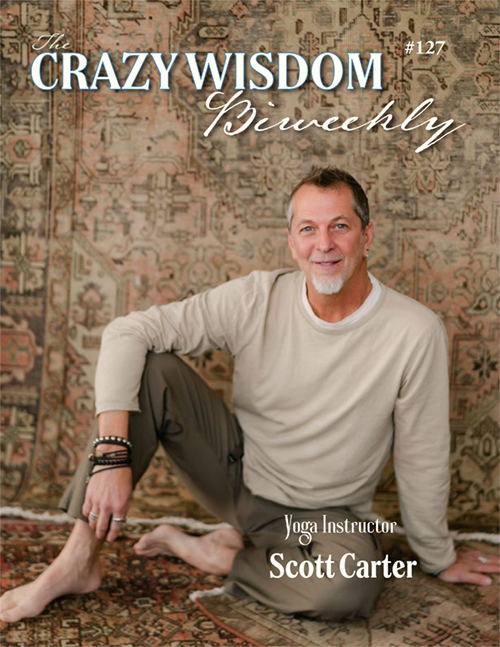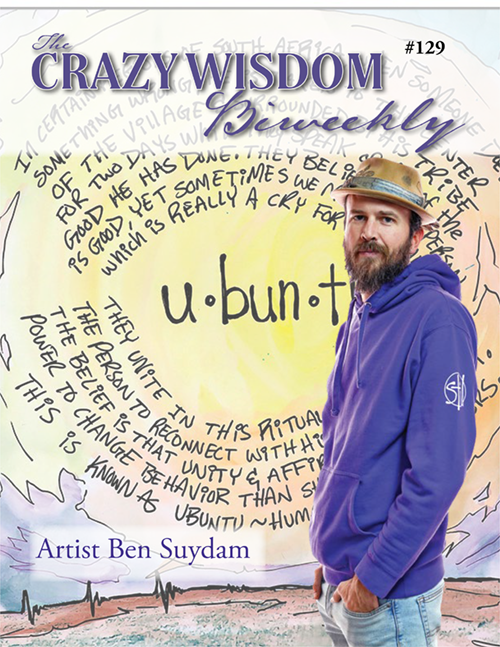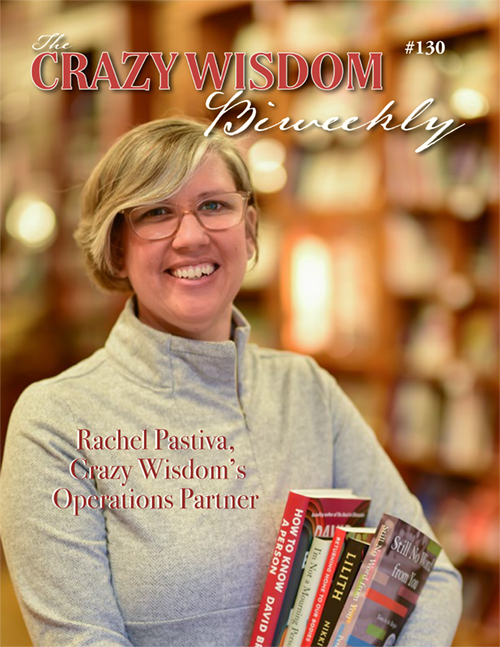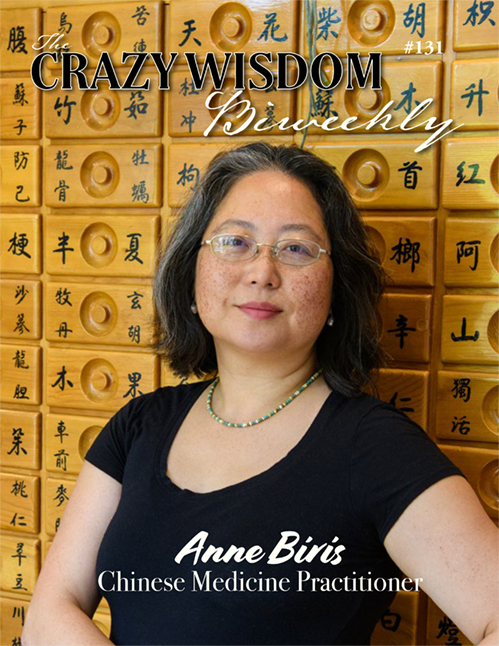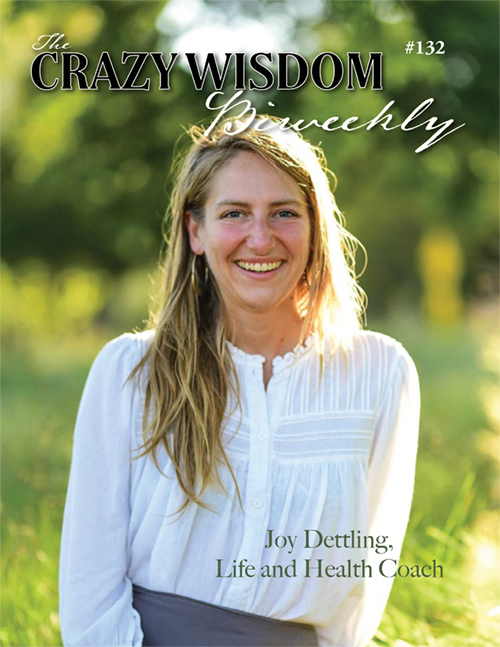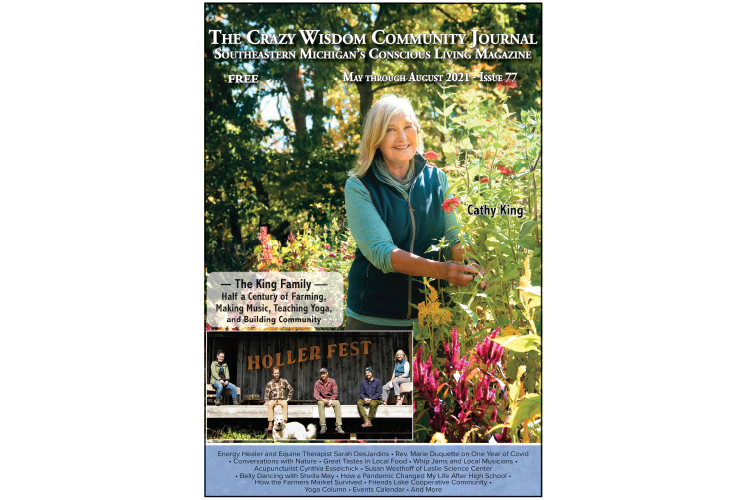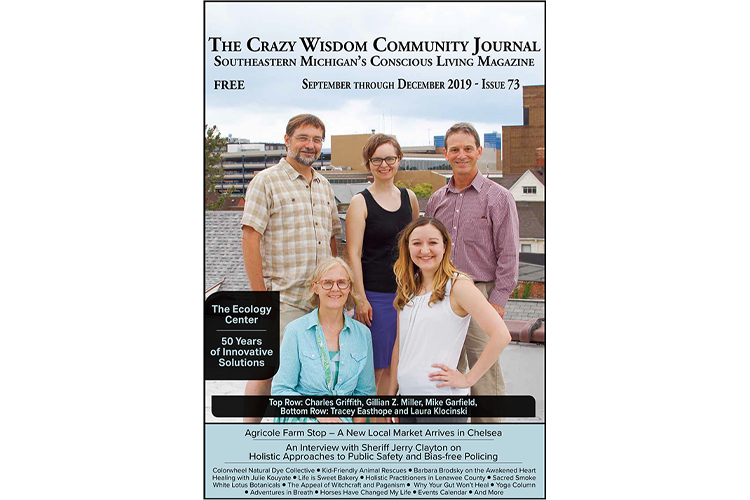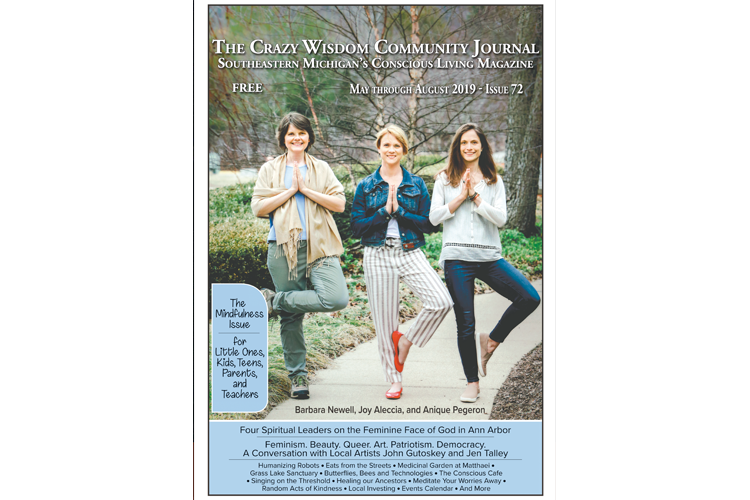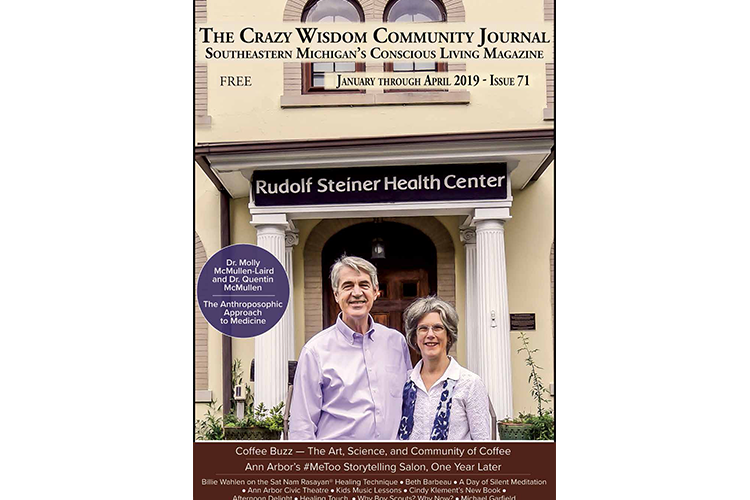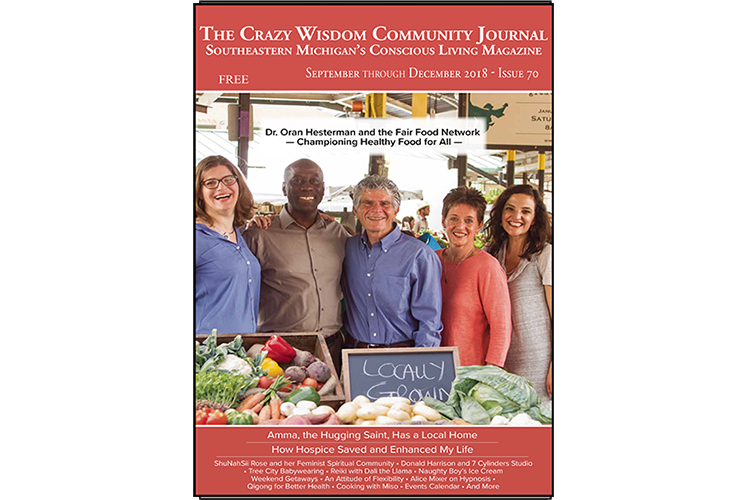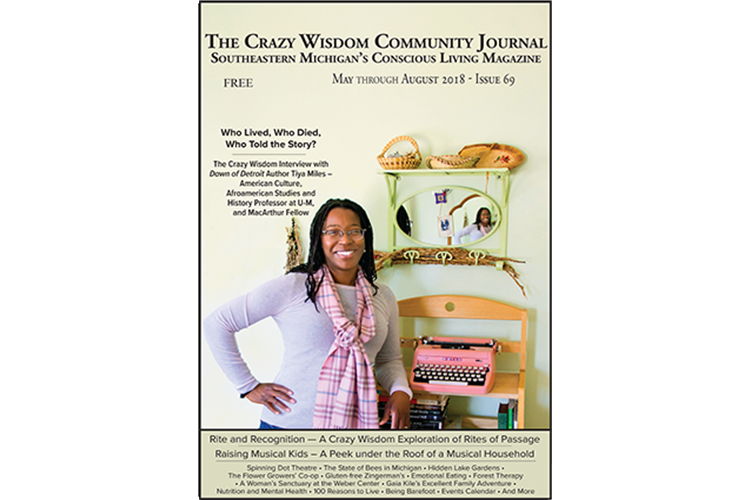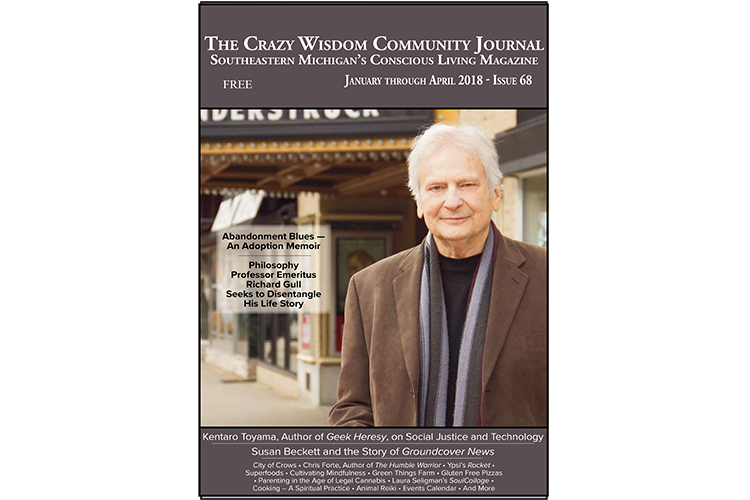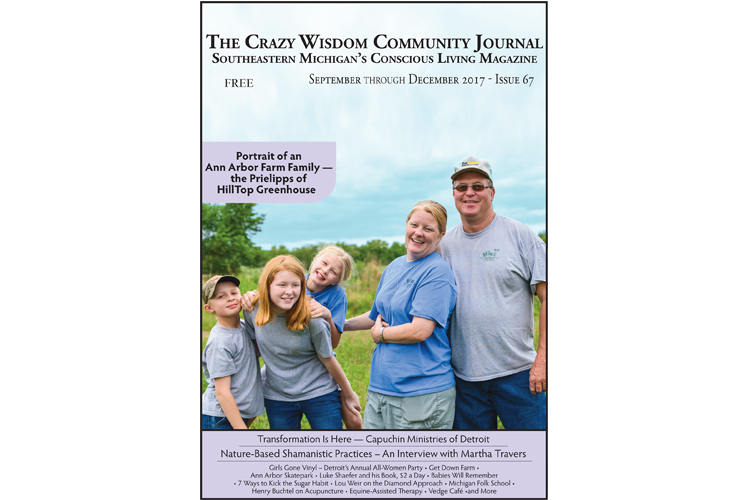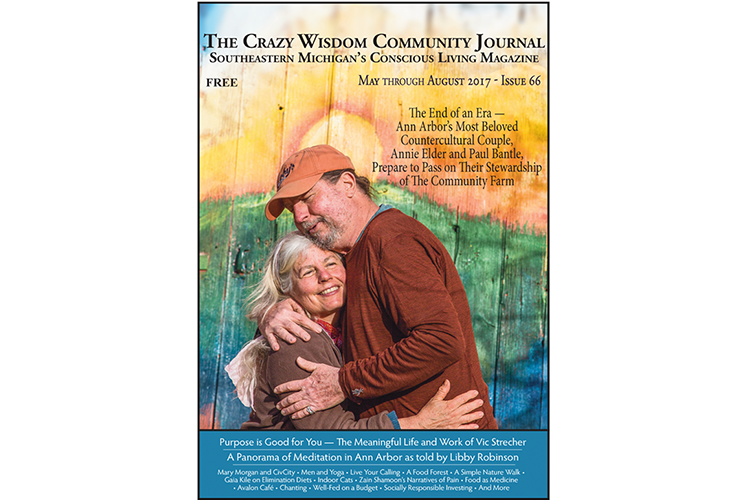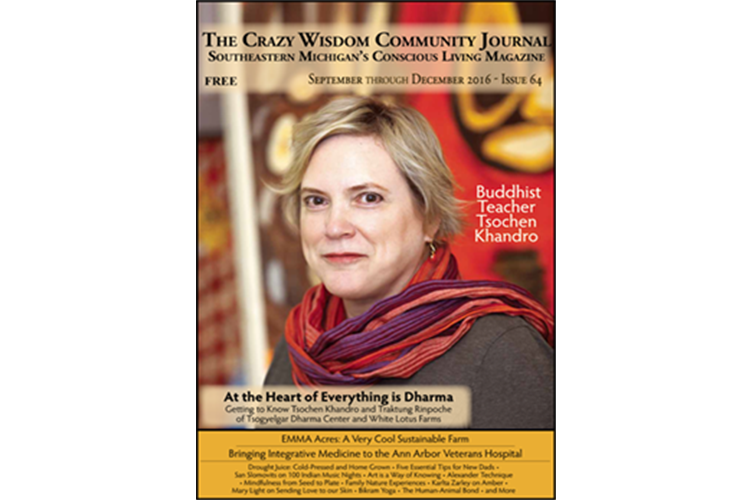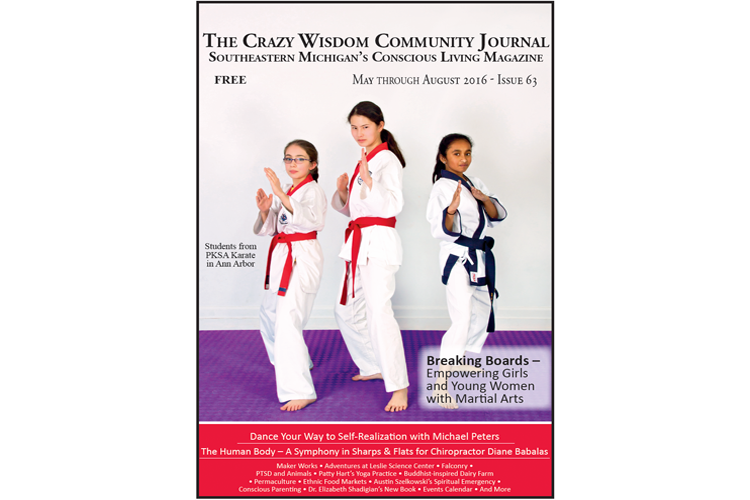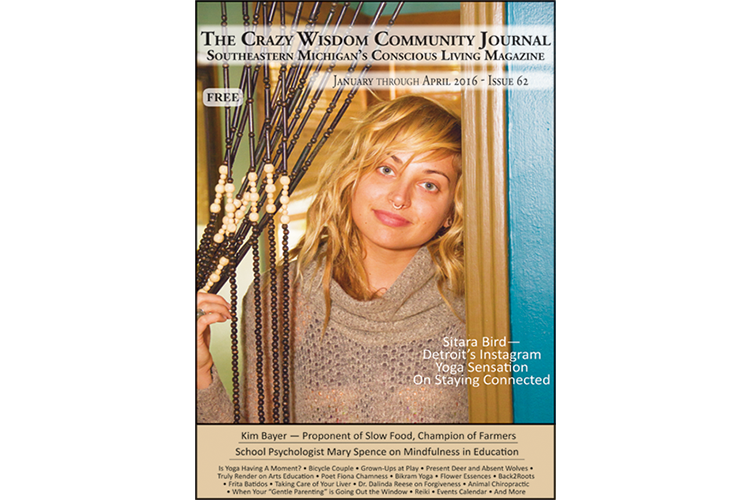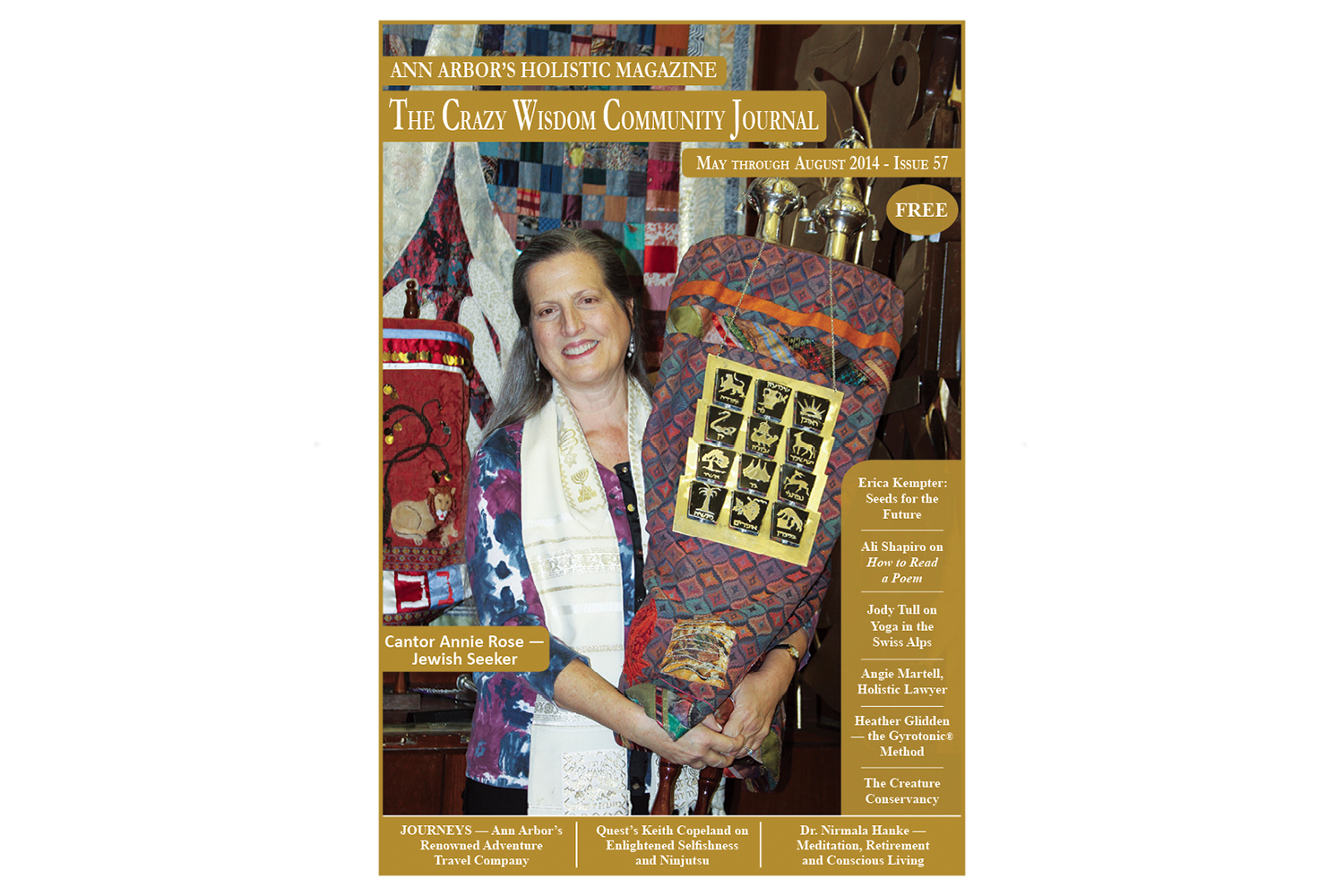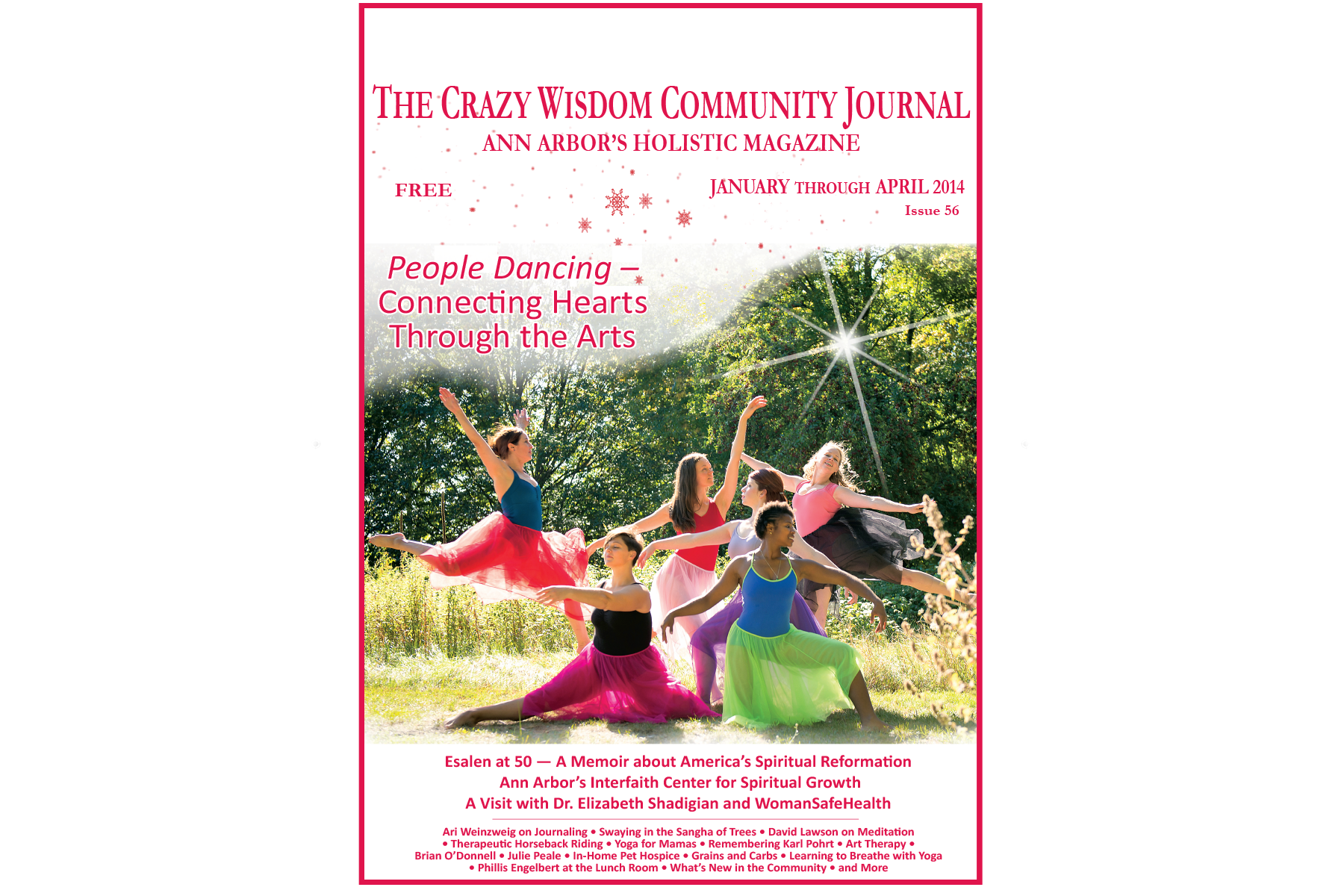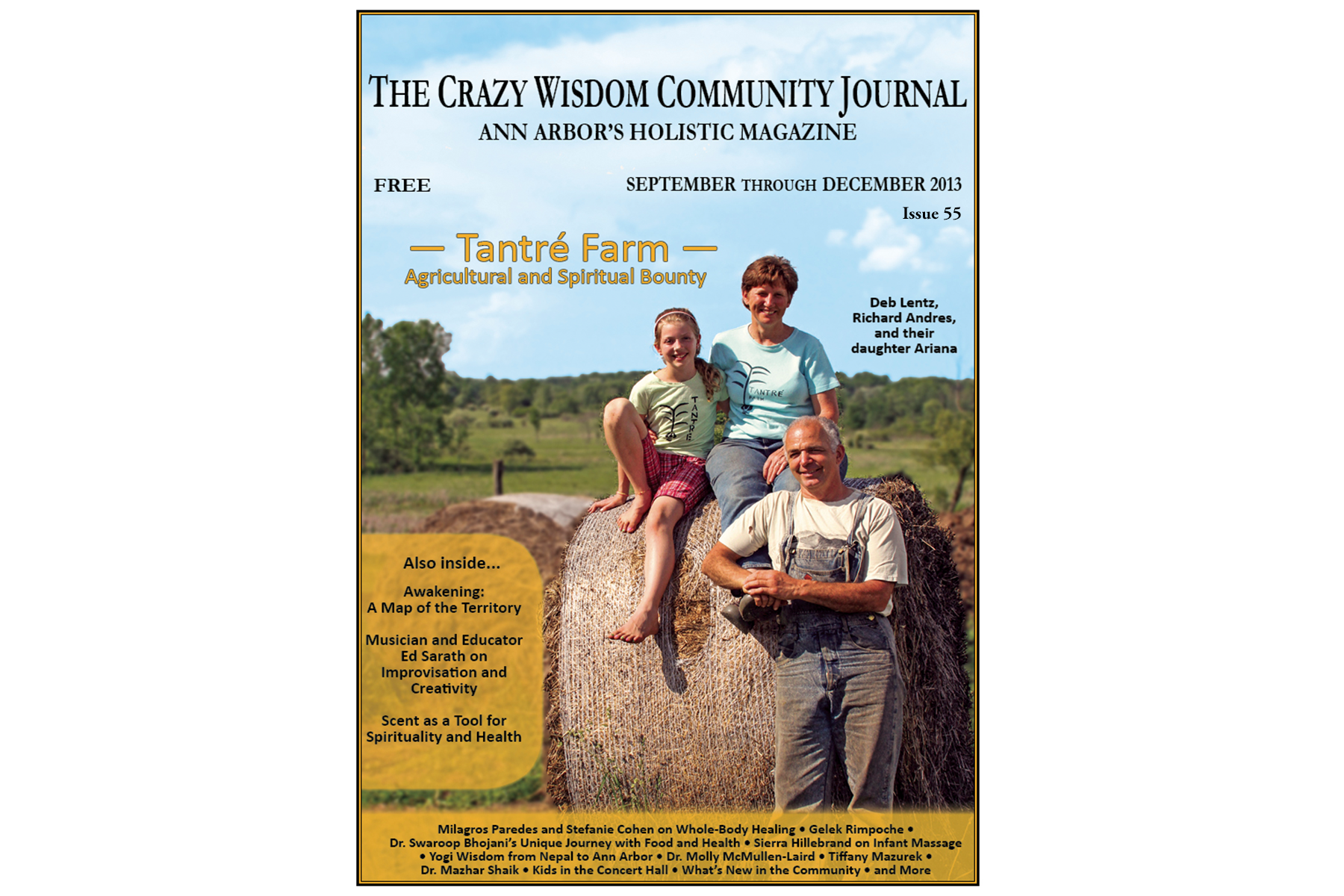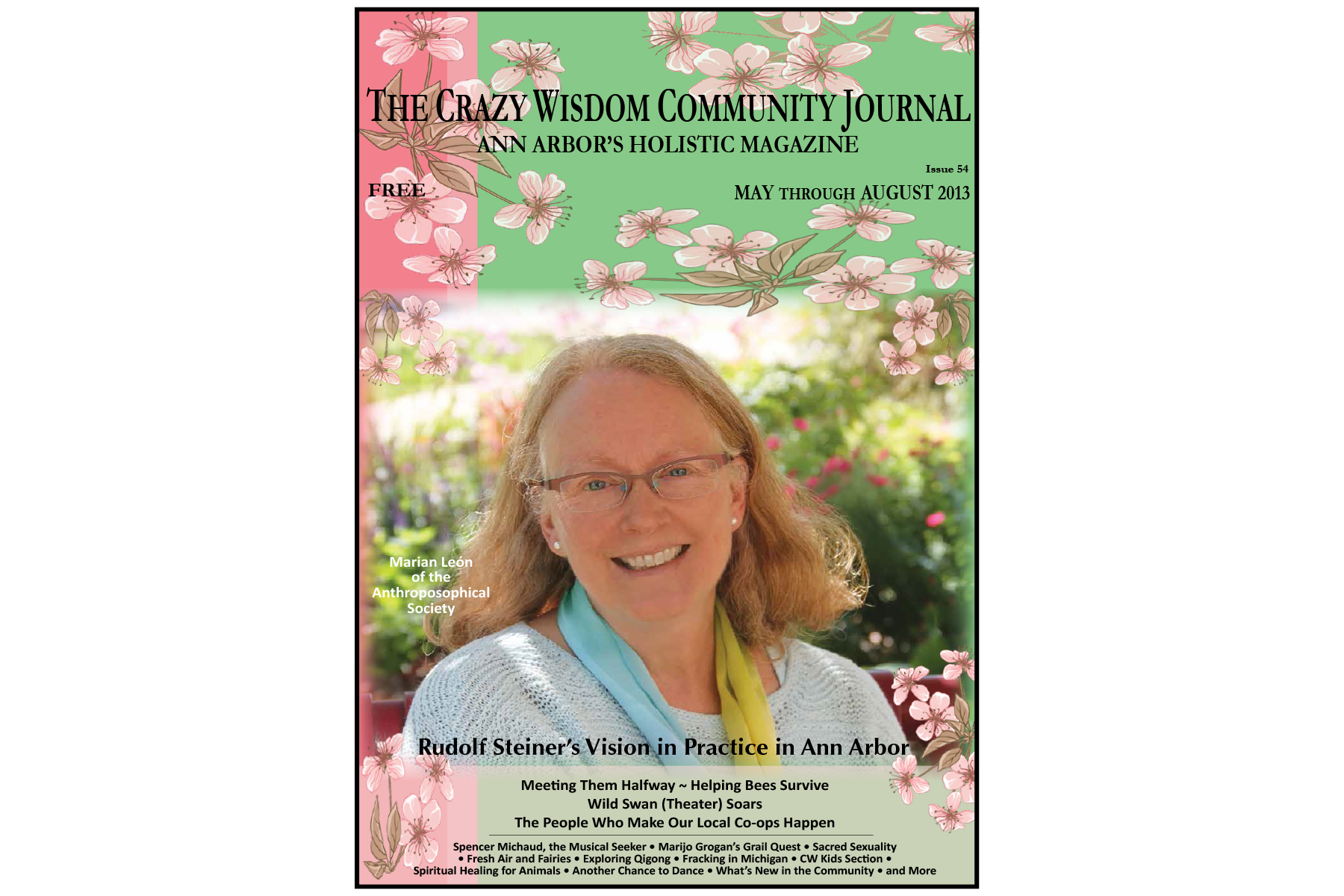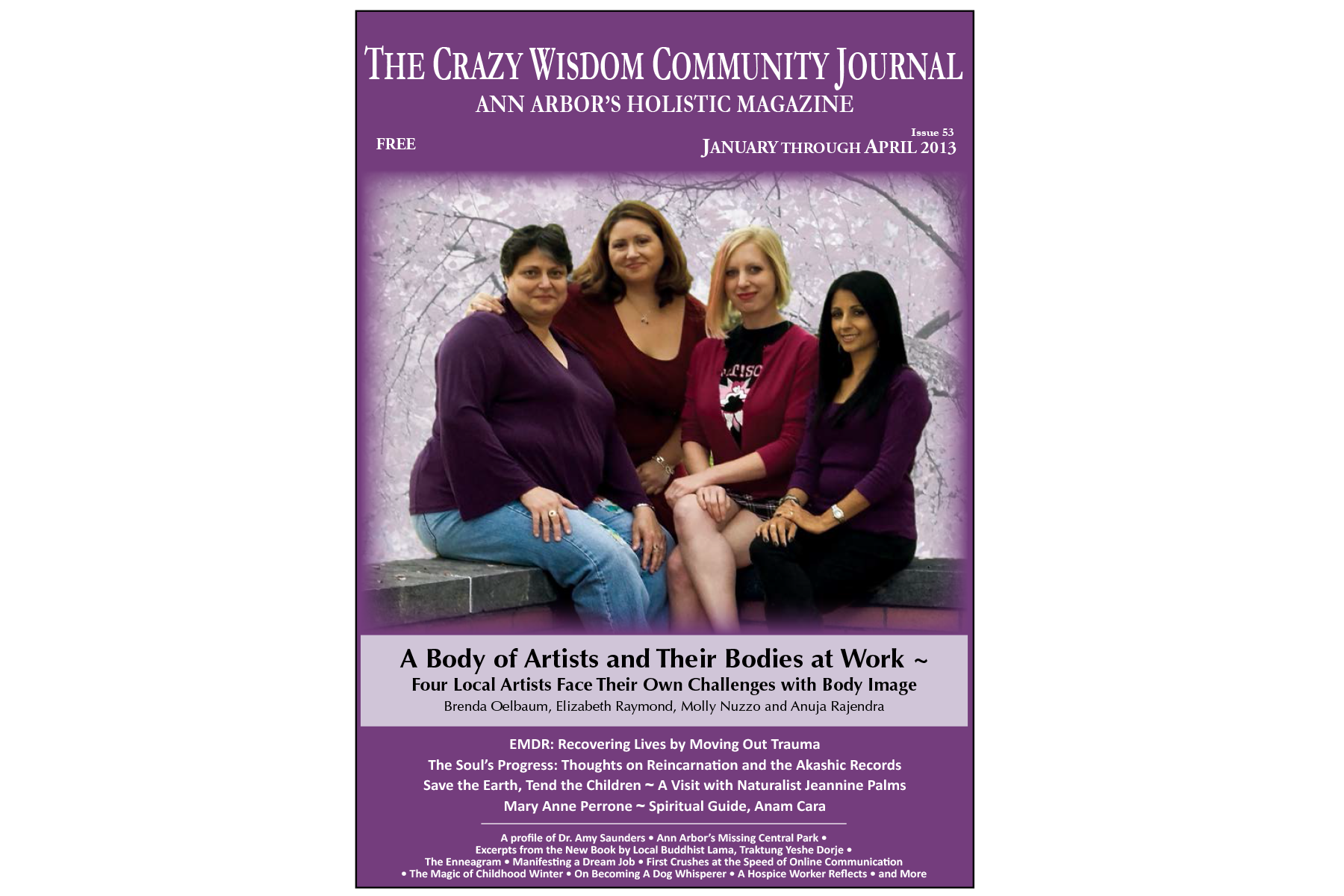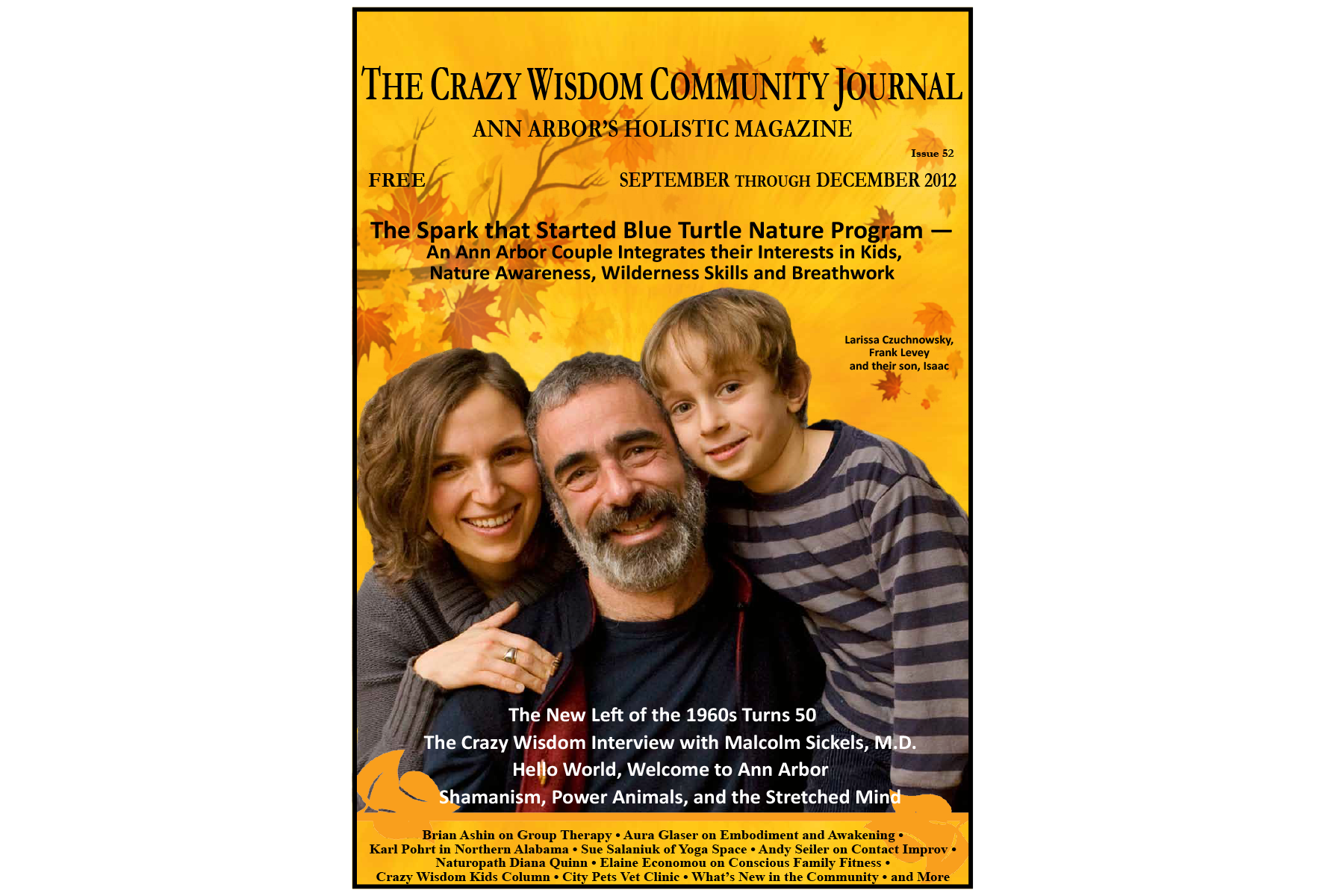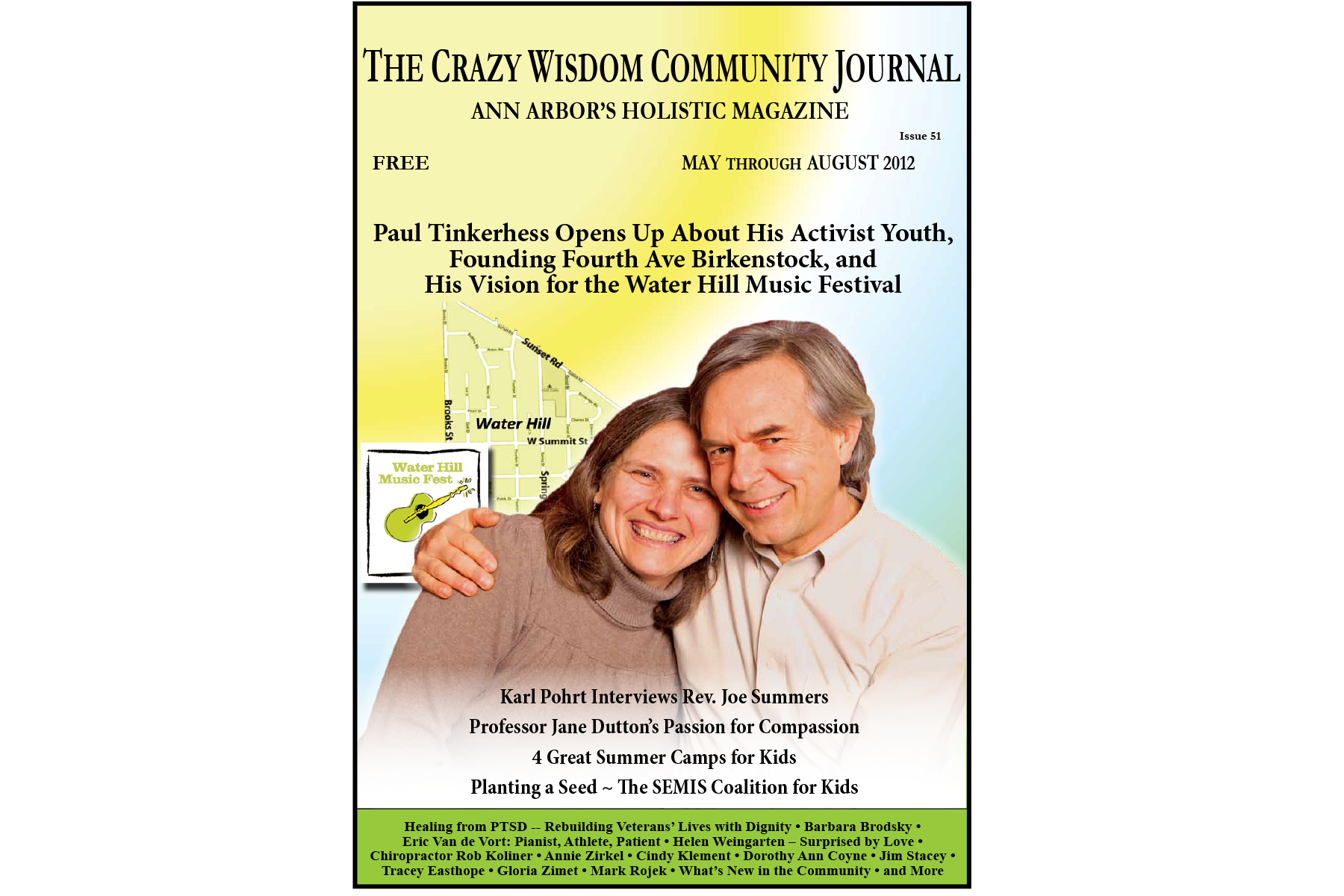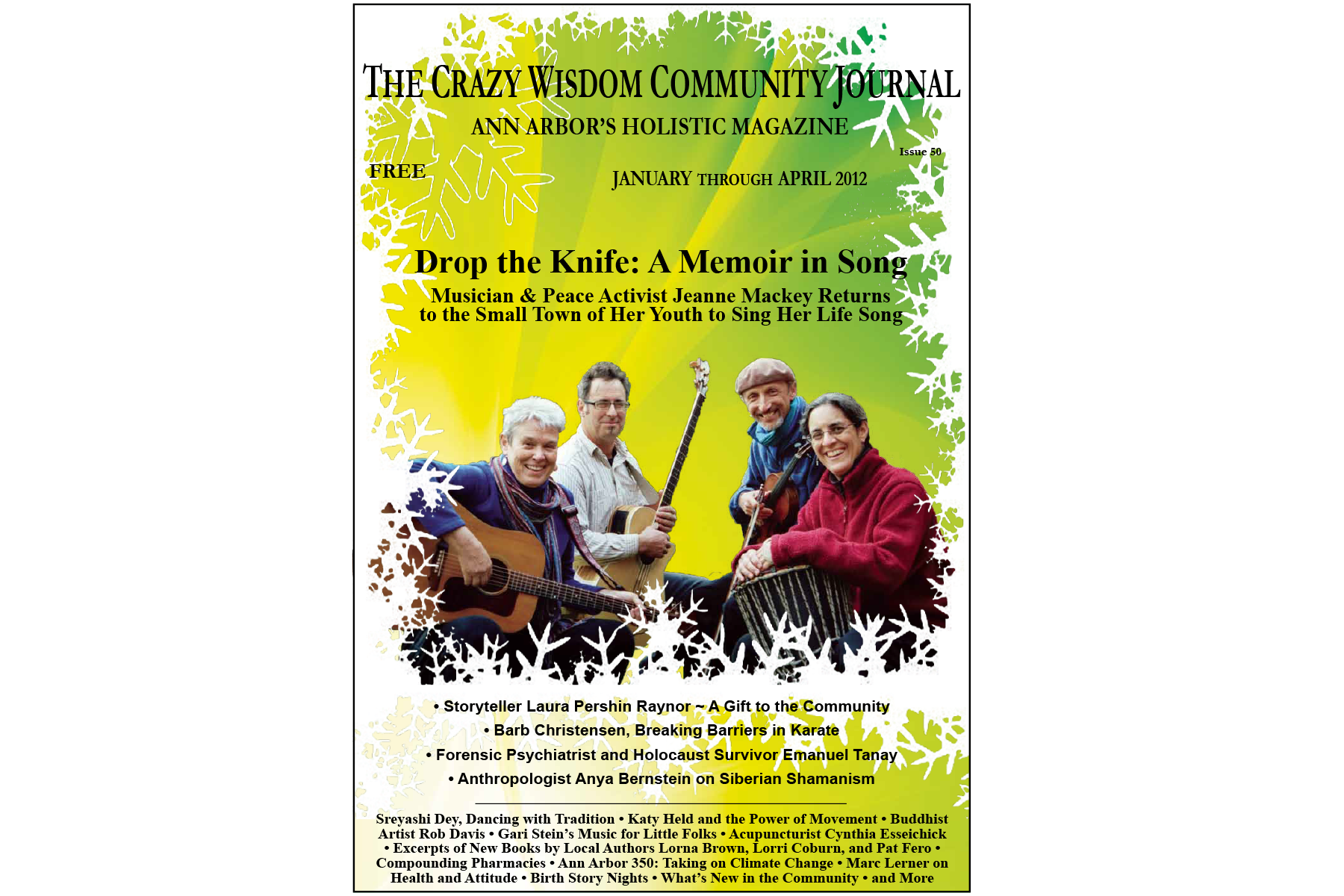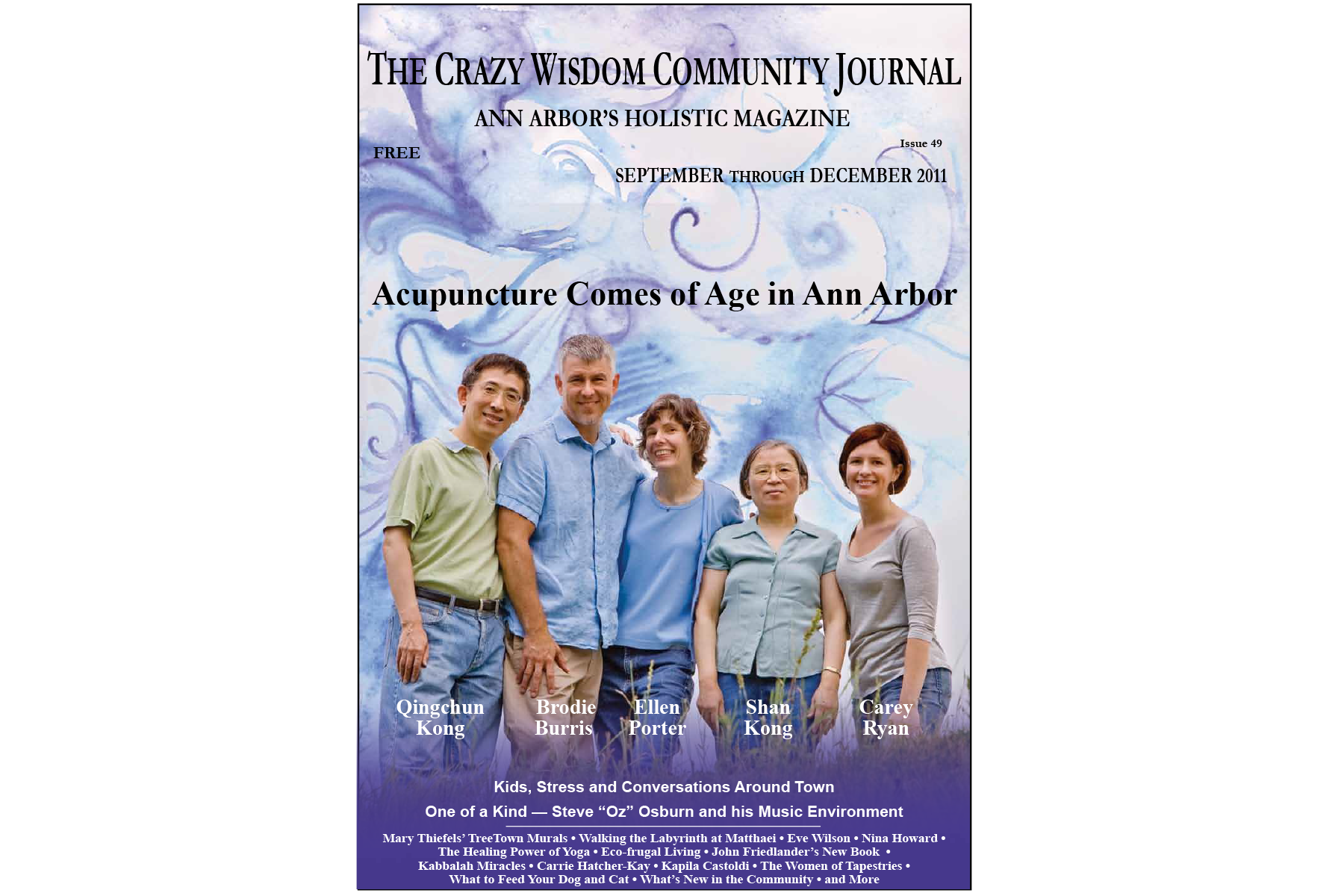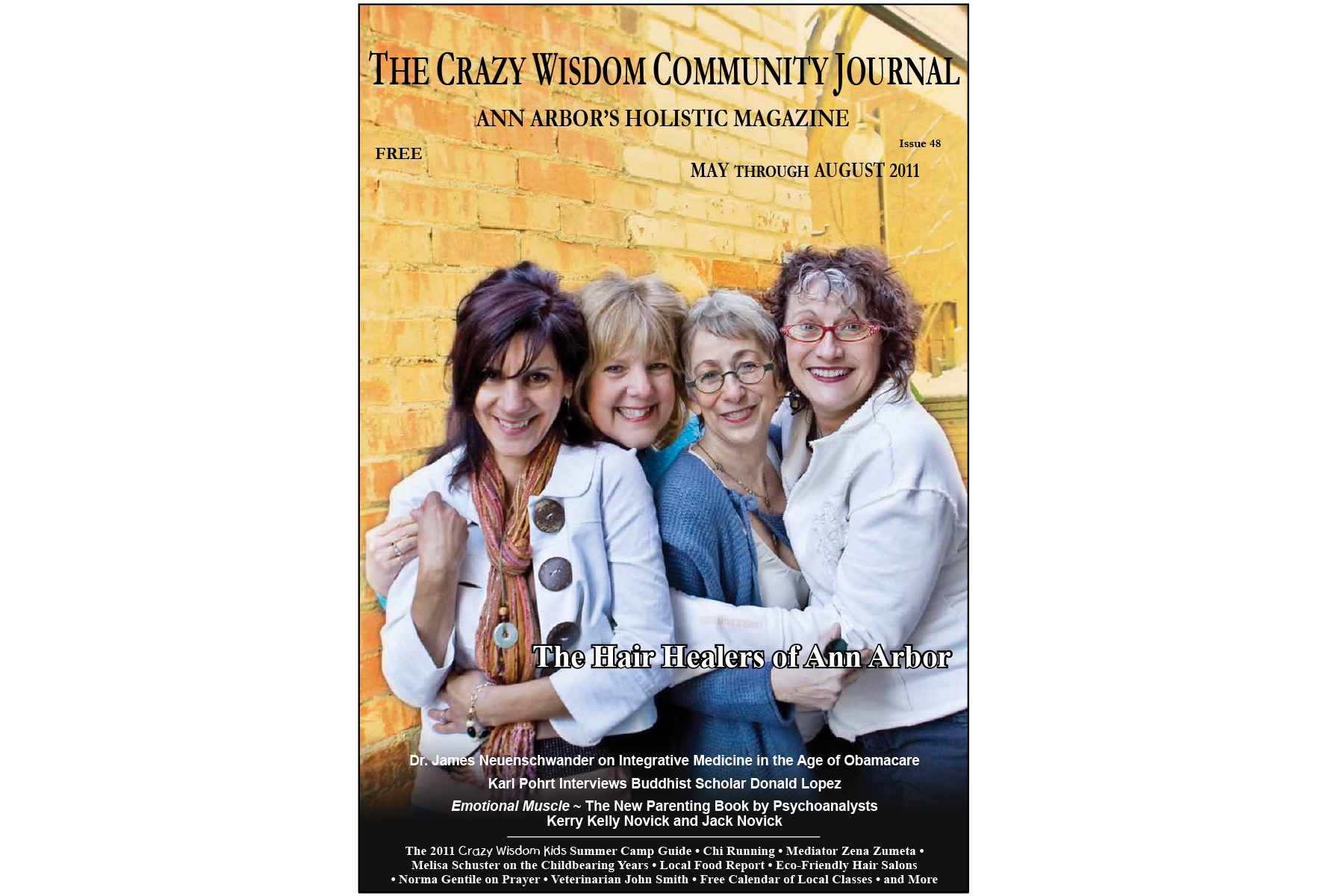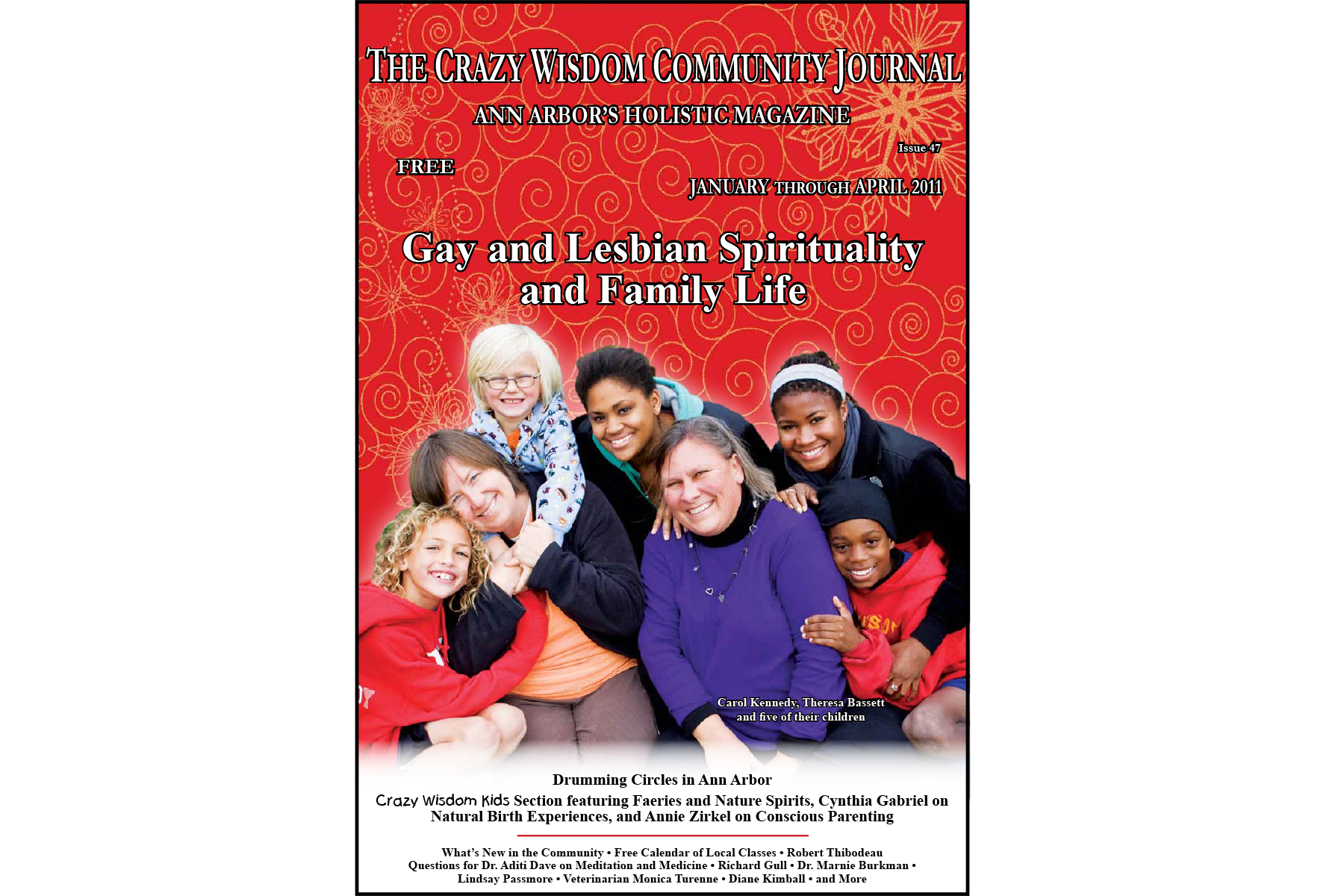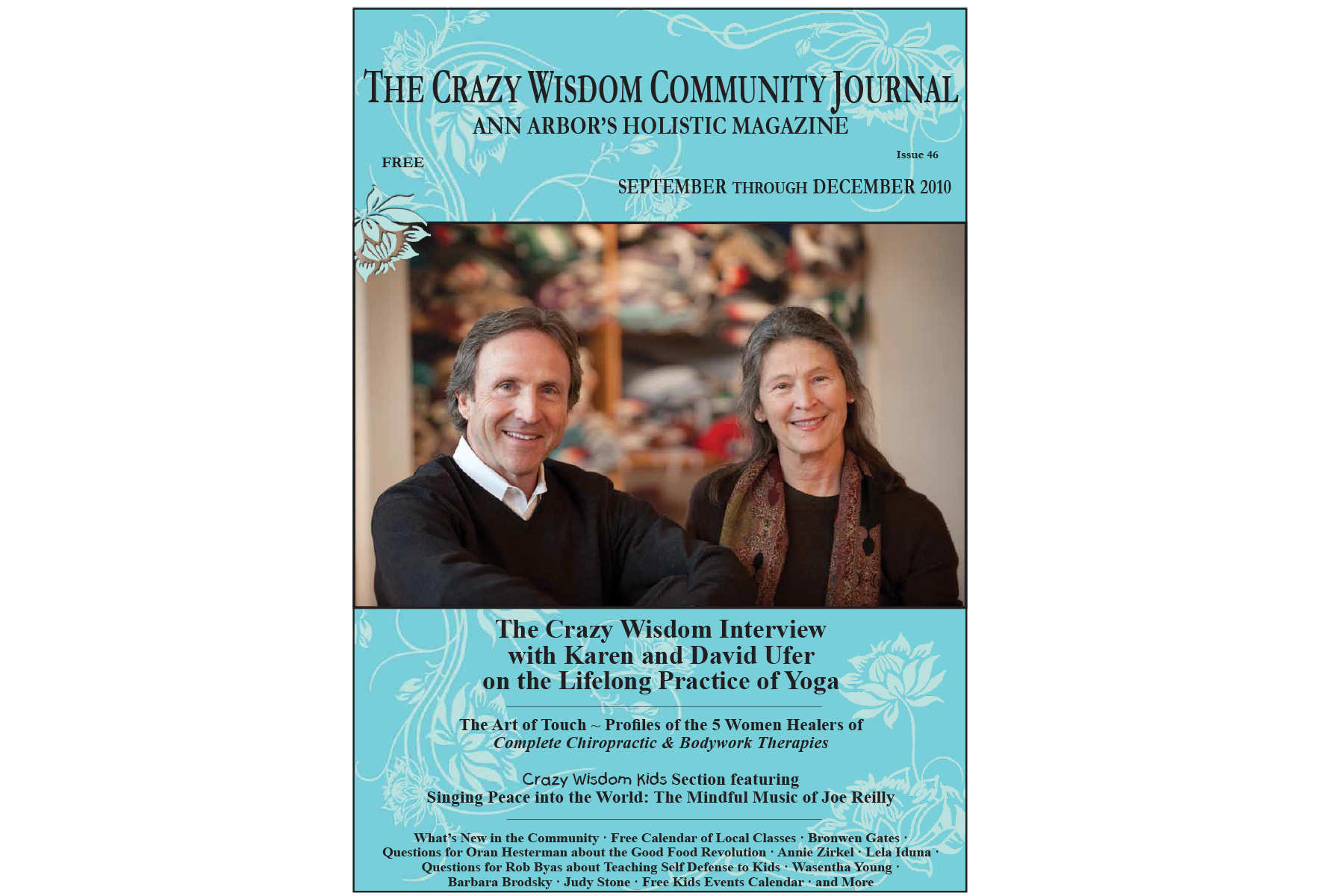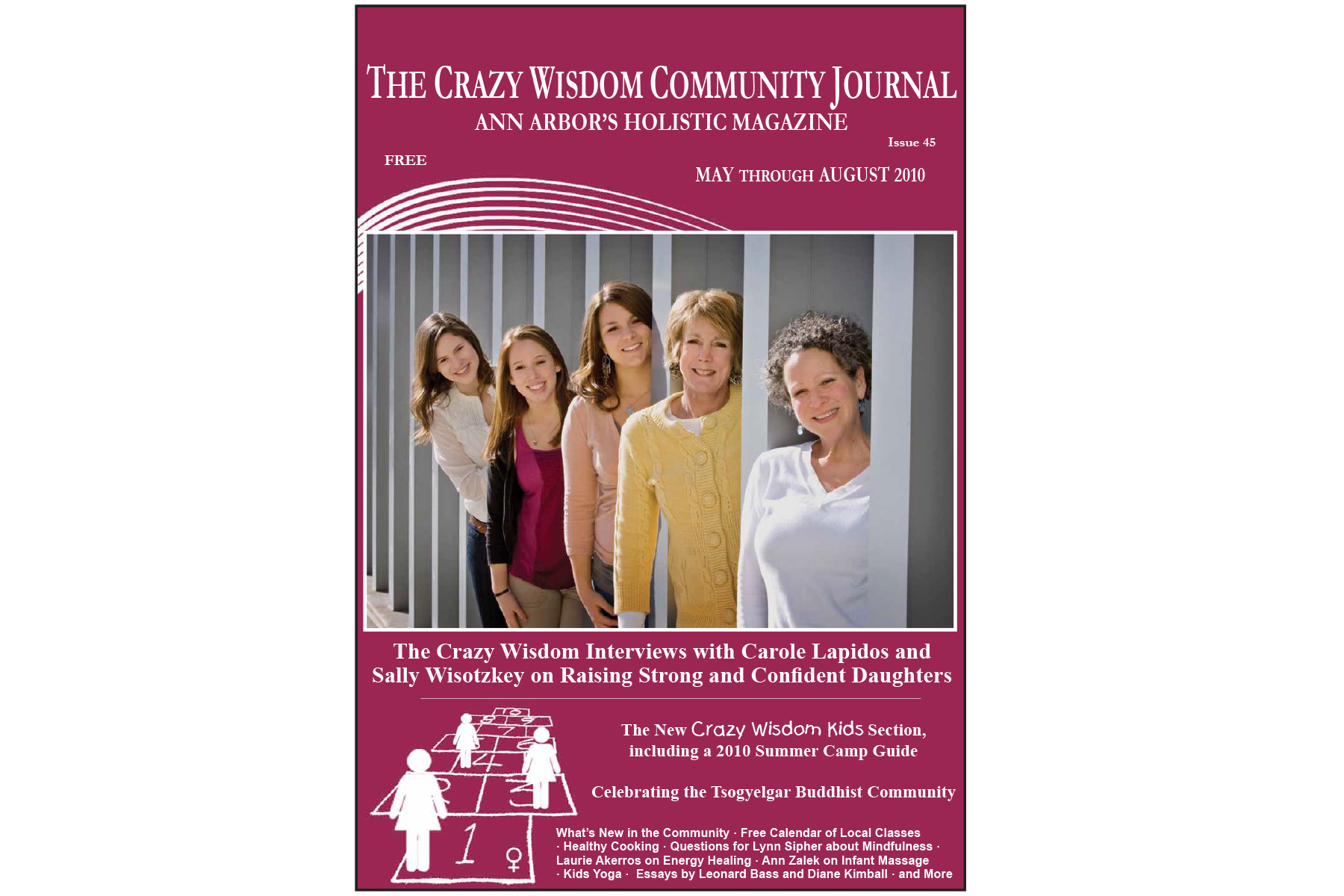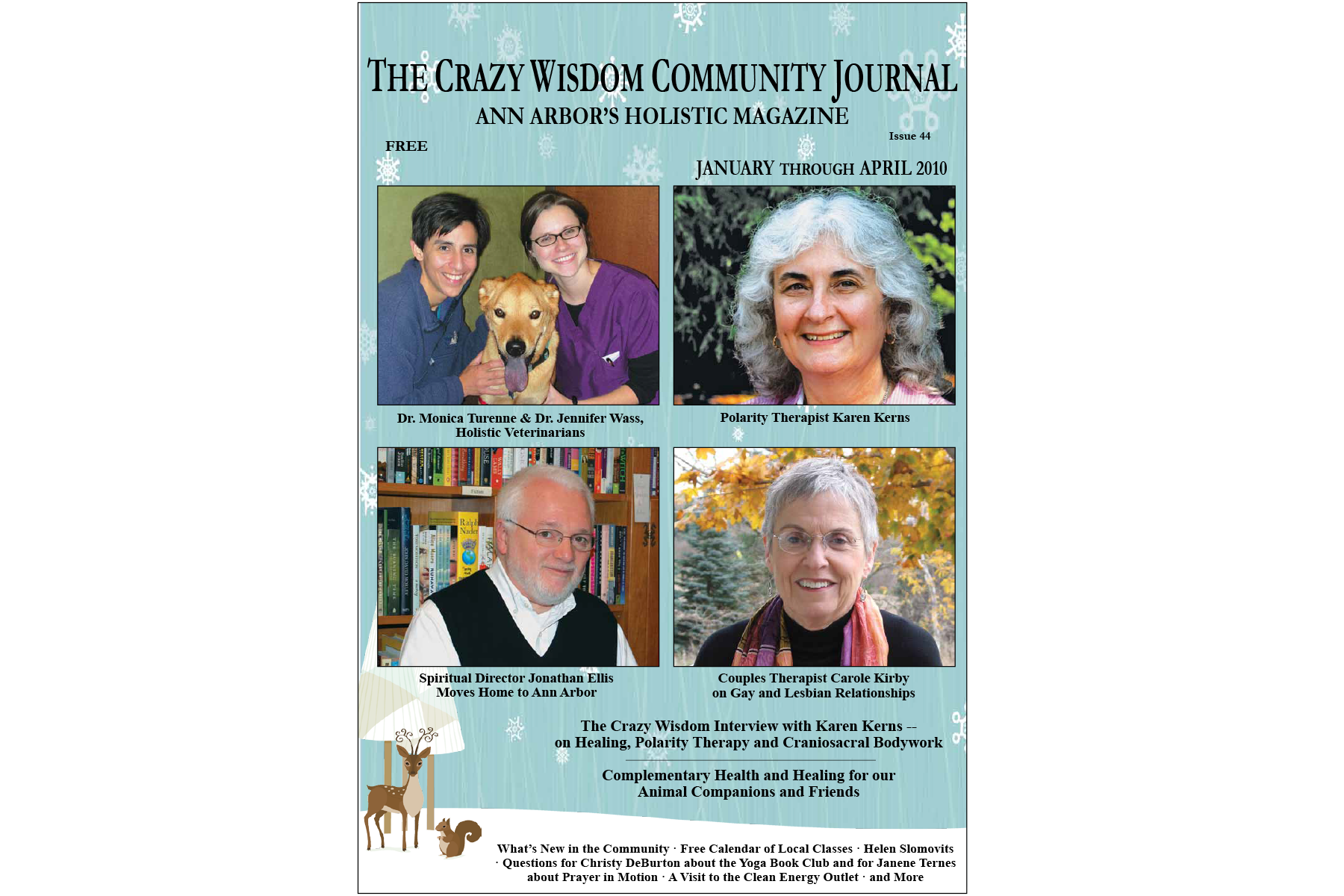I am writing this on the one-year anniversary of the first case of Covid-19 being diagnosed in Michigan. It is also the one-year anniversary of my mother’s memorial service. It was held here in Ann Arbor, at the church where I serve as a pastor. Her service was live cast on Facebook, a first for our little congregation. Family and friends tuned in from Hawaii, California, South Dakota, Arizona, Texas, Ohio, Maryland, and Florida. It was the first time in my 18 years as a pastor that I fully understood the value of live casting worship, an experience I and many of my colleagues have often considered too personal and intimate…too sacred maybe…for livestreaming on social media. It seemed so…televangelistic.
Crazy Wisdom Kids in the Community: Socially Conscious (And Distant) Kids’ Art & Personal Development Programs After the Toughest Parenting Year Yet
It has been a challenging year for group events, to say the least, as many kids’ programs around Ann Arbor went virtual or were suspended. The situation dragged on so long, I decided to create my own after-school program for half-grown kidlet—a mashup of virtual art programming and trying to get her out of the house and off her screen. Surprisingly, she adapted quite well to being home, so the biggest challenge was getting her moving again. I started thinking: what about all the other parents out there who are sick of researching which programs are still running or don’t have the brain space to plan enriching activities anymore? What if we came up with a plan for this year that didn’t depend on virus numbers to succeed? Here’s what I came up with. It’s pretty simple, though I think you’ll be pleasantly surprised, as I was, with some unique programs out there right now to choose from.
Local Food, Safety Precautions, and Friendly Faces: How the Ann Arbor Farmers Market Survived (and Continues to Thrive) During the Year of Covid
I first met Stefanie Stauffer, Manager for the Ann Arbor Farmers Market, while picking up food at Argus Farm Stop. I had seen her at local food events, but this was our first “hello.” I asked her if she was interested in talking about the virus and how the market has handled the challenges. Luckily, she agreed. We later had a Zoom meeting and began carving out slices of topics the public seemed curious to know. Both of us have similar backgrounds. We run small farms as well as have a vested interest in serving all people in our area with healthy, reasonably-priced food grown and produced in our own communities.
Mutual Aid in Washtenaw County--Can the Pandemic Have a Silver Lining?
It’s likely that most Americans will remember the year 2020 as one of the worst in their lifetimes. But if we take a step back, we might find that the year also brought many inspiring reminders of the capacity of the human spirit to overcome adversity and lend comfort to strangers.
Ann Arbor's Little Free Libraries: The Book Sharing Movement Goes Big-Time
When Kathleen Wright, a beloved Ann Arbor elementary school teacher and self-confessed “bookaholic,” first heard about Little Free Libraries (LFLs) in 2014, she and her husband knew immediately that they wanted to install one outside their home on the Old West Side. “I thought it was one of the most marvelous ideas I had ever heard of,” said Kathleen.
iZōsh: Ann Arbor’s Own Microfinance Organization Lifts Women Up Globally
iZōsh is an emotive and powerful Ethiopian word with no English equivalent. It is said to a woman specifically, and it connotes compassionately coming alongside her. The closest translation means: “I’m there for you; you can do this, and I won’t let you fail.” iZōsh is also the name of an Ann Arbor micro-lending organization that funds third-world women who live in extreme poverty.
Cashiering As A Spiritual Practice: Working the Front Lines at a Grocery Store During Covid
I am pretty sure I coined the phrase “cashiering as a spiritual practice.” I don’t know any other job where I could get this much practice to be my best self with scores of unique people every day. Of course, it’s easy and rewarding to serve someone who is competent, friendly, and polite. The actual spiritual practice happens when someone is not blessed with these qualities. How do I feel when a customer is on her cell phone during the entire transaction, never making eye contact, and barely a thank you? What are my thoughts when someone is overtly rude, demanding, or both? What if someone is looking down on me, as they perceive my “station in life” beneath theirs? How about the customer whose eyes are burning a hole in me because she is in a hurry and thinks the long line is my fault? With humility, I realize I’ve been “that impatient customer” before, too. See how many opportunities I have to practice every day?
Learning the Culture and Heritage of Washtenaw County through Food and Architecture
Prior to Covid-life, the Local Food Summit event took place with food diversity and food justice being the main focus. I had the pleasure of sitting with speaker, Melissa Milton-Pung, who represented a program she created in conjunction with the county’s Heritage Tourism department. The tour is called the Foodways Heritage Tour and there is a recipe guide online for those interested in our counties rich and bountiful cultural heritage.
A Page from the Crazy Wisdom Journal — A Look at Our First 25 Years
By Kirsten Mowrey and CWJ Editorial Staff
(Editor’s Note: Kirsten Mowrey has been a steady journalistic presence on the Crazy Wisdom Journal staff for close to ten years. She has contributed numerous feature stories and interviews for us, including cover stories on Tiya Miles, professor of American Culture, Afroamerican Studies, and History at U-M, and Functional Nutritionist Coco Newton).
Think back in time to twenty-five years ago. The year was 1995. You may have had kids, just out of school and starting your first career, or maybe you weren’t even born yet. People communicated by calling each other on landlines, though cell phones were beginning to appear. Magazines came with discs offering you a new service: America Online. When you turned on your computer (if you even owned one!), you watched it warm up, startup icon blinking for ten minutes before it was able to slowly process your requests.
However, this article isn’t a nostalgic trip about the good old days. I’m setting the scene, reminding us of how things used to be before technology made our lives so fast and full. Before we could access information as fast as we could think of it. It's a reminder of the world that existed when the Crazy Wisdom Community Journal was born and introducing you to some of the reasons why it was ushered into this world.
The local community connected in those early days via word of mouth, bulletin board, or flyer. Finding a holistic practitioner was a time-consuming business of searching, questioning like-minded friends, and visiting events to learn more about nutrition, bodywork, energy healing, midwifery, or anything that constituted the mystery traditions: astrology, herbalism, tarot, Kabbalah, numerology, Neopaganism, and Gnosticism, to name a few. These often denigrated disciplines had spent centuries living on the edges of western culture—never part of the mainstream, yet never fading. The counterculture of the 1960s, its interest in leftist politics and consciousness, brought awareness to these practices, along with the religions and practices of Asia: Buddhism, Hinduism, yoga, Feng shui, Zen, and meditation. All of these interests found a home at Crazy Wisdom Bookstore, founded in 1982. The store bridged, as U-M Philosophy Professor Emeritus Richard Gull said, “the connection between the New Left and the New Age.”
Deep Spring Founder Barbara Brodsky recalled, “When I moved to Ann Arbor in 1968, and sought people with whom to meditate, there was nothing! I was delighted to see Crazy Wisdom open its doors in 1982 and meet a few people with similar interests while browsing for books. So many of us longed for connection and dialogue. Later in the 1980s, I began to open my home to people interested in meditation instruction and to talk with Aaron (a channeled entity). It was hard to reach people in those days. Word of mouth worked best, and flyers left in the bookstore. So many of us desperately longed for a forum, a way to exchange ideas, offerings, and to get to know each other.”
Lori Fithian
drummer and community builder
How is it possible that 25 years have gone by so fast!? It really does seem like yesterday, when I first approached Bill about offering an open drum circle in the store. It has actually been so long ago, that I can’t remember when we first started doing it—I will have to go back to the archives of the CW Journal to find out. I am glad to know that they have a hard-bound archive in the store—such a rich history of activity in our special community!
I want to say a huge public thank you to Bill and Ruth for their support, in my own path of drumming—in the store and out in the community—but mostly for offering such an important resource to Ann Arbor. The journal is like an encyclopedia of information—so many treasures to discover—nutrition, wellness, spirituality, music, people, places, events and more. And I always enjoy the interviews—I love reading the stories of how people get to where they are now. The Journal has certainly helped me maintain my ‘business’ presence in the community, listing my events and monthly drum circle dates at the store, and sometimes a feature photo—which is always a bit embarrassing! If I ever need to find a practitioner of any sort, I head to my latest copy of the Journal first, even before an internet search!
I send huge gratitude and congratulations to everyone who puts together this lovely Ann Arbor treasure, to all that support it by advertising their amazing services and products, and to all the special people who read and love it like I do! May it (and the store!) live on for many more years to come!
Nutritionist Cindy Klement remembers going to Crazy Wisdom in the very early 1990s. “In the back of the store was an 8-1/2” x 11” four-page Crazy Wisdom flyer with the names of about 80 individuals in Ann Arbor who were practicing some form of holistic healing in town. (It was called the Health and Healing Resource Guide, and had been created and produced by Jonathan Ellis.) I was honored to be one of the people on that list as an herbalist, nutritionist, and health educator.” Having a physical location was the first, and sometimes only connection, point for many in Ann Arbor in those days. Mainstream publications, newspapers, and television did not cover these areas. Sound shaman Norma Gentile said, “As a student at the University (and of all things metaphysical) I scanned the mounds of flyers on the billboard and picked out many events to attend. As I became a performer and energy healer myself, I found few resources to widely publicize events that were classified by mainstream magazines and newspapers as being within this brave new world.”
Into this brave new world, the world of the dreams of the baby boomers, hippies, spiritual seekers, and political wonks was born the Crazy Wisdom Bookstore. Over time, the store needed a voice. Flyers are good, but collecting them, merging them, and creating a chorus from the individual components—that was the needed next step. So, in the fall of 1995 those flyers on the bulletin board became a publication: the first Crazy Wisdom Calendar, put together by bookstore staffer Rachel McKee. It featured yoga, Reiki, Polarity Therapy, and a vegetarian Thanksgiving cooking class, because meatless meals were an anomaly in the Midwest. Within a year the Calendar was multiple pages and had begun featuring interviews with local practitioners. As publisher Bill Zirinsky wrote in September 1996, “This is not northern California, but Ann Arbor’s alternative community has matured and thrived over the last twenty-five years. A new generation has arrived and added to the richness and diversity of what is being offered here. This fourth edition contains 150 listings; it's exciting to take note of just how alive this community is!”
Photography appeared in 1997, adding faces to those featured interviews, as well as quotes, book reviews, and staff biographies. Like any young being, the Journal found its legs and took off running. By 1998, the community had grown enough that advertising debuted, listing practitioners as full-blown businesses, not merely people offering an occasional lecture or class. Psychologist Cam Vozar wrote, “As a practitioner, the Journal was supportive in starting my private practice business. Twenty-five years ago EMDR and transpersonal therapies were not accepted as alternatives to more traditional psychotherapy. I could advertise a lecture for free and a business card listing for a modest price. I always felt it was a good return on my energetic investment.”
As the “alternative” community became mainstream, nationally known speakers were promoted in the Calendar: Clarissa Pinkola Estes, Marianne Williamson, Susun Weed. Williamson was even interviewed in the Calendar while she was at the Church of Today, but only because she was local. Zirinsky said, “My aspirations were to make this an intelligent magazine about these subjects, but locally focused. That's really been key. We all get to read Tricycle or SageWoman or any of the others that are national magazines about our related content. But to say [that] there’s enough interesting material in Ann Arbor and in the southeastern Michigan region that we're not going to do any sort of syndicated articles—what we're doing is pretty cool. We’re not going to have Deepak Chopra in the Crazy Wisdom Journal. Even if he comes to town. We might put his event in our Calendar section, but we're not going to feature an article about it.”
Crazy Wisdom Bookstore moved in 1999 as if readying itself for the new millennium. Writing about the move in one of his very occasional notes in the January 1999 Crazy Wisdom Calendar, Zirinsky wrote, “We want to create a more permanent home (in a world of impermanence) for a countercultural haven.” Reflecting on the arrival of Whole Foods and the growth of the Calendar, he wrote, “In this town, the counterculture has become part of the culture, and we don’t even stop to think about it much.” Psychotherapist Brian O’Donnell agrees. He said, “I’m proud to be a member of a community that has such a well-crafted and comprehensive journal that covers the domains of consciousness, healing, and engaged civic life. This journal continues to grow and flower sprouting new branches that showcase the wide array of opportunities for well-being and contribution in our area. I often marvel at the incredible variety of offerings and practitioners that occurs here in my back yard.”
Zirinsky published sporadic personal essays, as well as comments on community and world events, until about 2010.But his voice was mostly to be found as the questioner in lengthy and in-depth interviews with local community figures. He conducted deeply engaging interviews with herbalist Brownen Gates; Jewel Heart founder and Tibetan Buddhist teacher Gehlek Rimpoche; integrative physician Dr. James Neuenschwander of BioEnergy Medical Center; Author and Psychic John Friedlander; Traktung Rinpoche and Tsochen Khandro, husband-and-wife founders of Flaming Jewel Dharma Center; legendary U-M Psychology-and-Religion Professor Richard Mann; Carole Lapidos and Sally Wisotzkey on Raising Strong and Confident Daughters; Zen Buddhist Priestess Haju Sunim; and Dr. Tariq Bel-Bahar of the U-M Center for Consciousness Science, among other notable interviews. Meanwhile, Linda Diane Feldt and Jonathan Ellis also contributed in-depth interviews with the likes of Barbara Brodsky, founder of Deep Spring Center; Dancer/Choreographer Jesse Richards; and Dr. Sara Warber, key player in the founding of the U-M Complementary and Integrative Medicine Program.
Cindy Klement
holistic health educator and author
I am not sure if Bill wants memories from before he owned the store, but I recall going to Crazy Wisdom in the very late 1980s. At the time Aura Glaser owned the store and it was located on 4th Avenue close to People's Food Co Op.
In the back of the store she had an 8 1/2” x 11” piece of paper with the names of about 8 to 10 individuals in Ann Arbor who were practicing some form of holistic healing in town. I was honored to be one of the people on that list as an herbalist, nutritionist, and health educator.
Because of the work and passion of Bill Zirinsky, that single sheet of paper is now a robust and well-known journal across the state of Michigan and beyond. Bill has continuously featured health practitioners in the Ann Arbor area over the decades and has been a strong advocate for those of us in the healing arts. I have been extremely fortunate to have my work featured in CW twice over the past 28 years, and I remain quite grateful for those opportunities.
Please congratulate Bill for me and offer my sincere thanks to everyone who has contributed to this work!
The Journal continued to expand. Back in 2001, 4,500 copies were distributed. For the last ten years, 11,000 copies have been distributed all over southeastern Michigan. Tarot reader and sage woman Jeanne Adwani said, “Through its informative pages you can find pretty much anyone and anything that is resonant with health and well-being, to crafting the magical, and so much more in the in-between. Events, interviews, advertisements, new faces, old faces, all invite us to know our community better, and know whom to find when we are in need for alternative expertise. And also, to simply sit with a cuppa and read through the informative pages of the many incredible people and opportunities that surround us.”
In 2004 the Calendar officially became the Crazy Wisdom Community Journal. Color—the ultraviolet kind—adorned the cover as well as photographs, so artists’ work could be seen in all its original glory, though color didn’t make its way throughout the Journal until 2010. By the mid-2000s, the Journal was regularly reaching fifty pages, a ten-fold growth from its inception. Also, in 2010, the Journal came full circle with the addition of a Kids Section, giving the next generation a chance to look into a broader world. Now multi-generational and mainstream, the community publication sustained itself financially, and offered all the dreams and aspirations of the sixties to anyone receptive. Haju Sunim of the Zen Buddhist Center said, “We are so much more a community in this part of our state because of the Crazy Wisdom Journal. Our hearts and minds have been opened and many of us, discovered, through the fine articles, pictures, books, performances, and talks which have been offered.”
O’Donnell concurs with this statement. “The Crazy Wisdom Journal, like the many expressions of wholeness it features, is also itself a healing presence. It illuminates, it integrates, it challenges, it links, and it explores what is below the surface.”
As the years went on, the publication grew into a real team effort. In the early years, the publication was largely produced by Zirinsky and Molly Nuzzo, who was the creative and dedicated Design and Production Editor for 15 years. Local psychotherapist Linda Lawson took many of the best cover photos, and the advertisements just sold themselves. And Sarah Newland, now the General Manager of the Bookstore, meticulously oversaw and edited the Calendar Section, (which she did for almost 20 years).
Starting in 2010, two key players joined up, and the Journal began to take off. Carol Karr, who had been a longtime manager at the bookstore, became the Design and Production Editor, when Nuzzo moved to Maryland to become a professor of Art.
Karr brought new design and computer skills and talents to the look of the publication, and she provided a steady hand at the helm of the entire production process.
And Rory Russell joined up, becoming the Ad Rep, using her charm and soothing presence to double the publication’s ad sales almost right away, tapping into a well of appreciation for the local focus, journalistic integrity, and visual appeal of the Journal.
Next came some stronger and skilled editing, with Maureen McMahon, Amy Garber, Julianne Linderman, and, more recently, Jennifer Carson. McMahon, as Managing Editor, lifted the range and quality of the content, and Linderman, later on in that same role, brought a striking minimalist design sensibility to many of the page designs. Carson, now the Managing Editor, has brought with her an astonishing range of editorial and design abilities. With real verve, she jump-started The Crazy Wisdom Weeky e-Zine during the pandemic, as a complement to the print publication, which had to take a pause during the coronoavirus lockdown.
Having stronger editors meant better writers wanted to write for the Journal, and so Rachel Urist, Sandor Slomovits, Karl Pohrt, Richard Gull, Laura Cowan, Crysta Coburn, Madeleine Diehl, Irena Nagler, Maureen McMahon, Angela Madaras and others became regular contributors and feature writers. In particular, Rachel Urist contributed sensitive and beautifully written profiles of local people who were members “in good standing” of the regional consciousness community, including cover stories on Cantor Annie Rose of Temple Beth Emeth; Anthroposophist Marian Leon of the thriving Rudolf Steiner community in town; Tantre Farm couple Deb Lentz and Richard Andres; Blue Turtle Camp founders Frank Levey and Larissa Czuchnowsky; and again, a profile of Haju Sunim of the Zen Temple, only 20 years later!
Sandor Slomovits contributed wonderful narratives and interviews, including cover stories on Paul Tinkerhess and the Water Hill Music Festival; beloved Community Farm couple Annie Elder and Paul Bantle; Fair Food Network founder Oran Hesterman; and fifty years of the Ecology Center. And McMahon brought her keen intelligence to stories on tile craftswoman Nawal Motawi, U-M Jazz and Consciousness Professor Ed Sarath, and local Pioneer High philosophy teacher, Jim Robert.
Meanwhile, the decline of print media came with a bonus for the Journal—excellent new photographers coming on board, such as Rachael Waring, Susan Ayer, Joni Strickfaden, and Hilary Nichols, among others. All in all, the publication became thicker, more colorful, deeper, and more wide-ranging in its editorial content. A food section was added, plus travel, pets, sustainable health, green living, and yoga columns. A veritable feast of good local writing, photography, original illustrations, events, and information.
Here we are now, twenty-five years later. “Because of the work and passion of Bill Zirinsky, that four-page flyer is now a robust and well-known journal across the state of Michigan and beyond,” said Klement. San Slomovits, of the duo Gemini and a writer for the Journal said, “I often find things in the Journal that turn out to be interesting and useful in my life.” Zirinsky himself said, “The Journal has grown into this really wonderful realization of what I wanted it to be. I was a publishing person since I was a kid. The gift that meant the most to me when I was nine was a little printing press. The rest of [the paper] was already done but you got to create the headline. I [also] played a card game with fifty cards, each card with a little face of a person and a profession. What appealed to me: it was publisher.”
Jeanne Adwani
artist and poet
Crazy Wisdom Journal is a gift of service to the whole community. Through its informative pages you can find pretty much anyone and anything that is resonant with health and well-being, to crafting the magical, and so much more in the in between.
Events, interviews, advertisements, new faces, old faces, all invite us to know our community better, know whom to find when we are in need for alternative expertise. And also, to simply sit with a cuppa and read through the informative pages of the many incredible people and opportunities that surround us. We are made better for having this service gifted to us three times a year.
I have had the honor to be part of Bill and Ruth’s journey before the advent of the Journal. My gratitude is vast for knowing them and being on the pages of this great community paper. Thanks Ruth and Bill.
It is with great love that I say thank you to all whom make this journal a true community experience.
When I contacted individuals for their memories about the Journal, drummer Lori Fithian wrote, “How is it possible that 25 years have gone by so fast!? It really does seem like yesterday when I first approached Bill about offering an open drum circle in the store. The Journal is like an encyclopedia of information—so many treasures to discover—nutrition, wellness, spirituality, music, people, places, events, and more. I always enjoy the interviews. I love reading the stories of how people get to where they are now.” Everyone I corresponded with expressed their thanks, gratitude, and appreciation of the Journal for the way it had assisted them personally and professionally, and for the benefit of the greater community as a whole.
What then, do the next twenty-five years look like? Zirinsky said, “It’s a dream that’s been realized, but it's still evolving. I'm not tired of its evolution. It's cool what the publication is doing.” The Journal has an online presence and growing that is the current focus. “[I want] more feedback,” said Zirinsky, “That's where the online piece matters to me. And with the pandemic, Jennifer Carson started The Crazy Wisdom Weekly, a breezier online weekly e-zine. We get to do what we’re doing with the Journal still, and we’re committed to its in-depth articles and interviews, but we now also have a more timely way to engage our regional readership.”
Desires for peace, an end to war, and hopes for harmony characterized the consciousness movements of the sixties and continue to be relevant for the community. In an interview with social worker, Gae Winn, on the one-year anniversary of September 11th, she said, “I want people to wake up: to the knowledge that we are one planet and one community. We are diverse, unique, but the hatred with which we approach one another, the disdain and negativity, has got to stop for the sake of us all.” Giving voice to our hopes for harmony, internal and external, and building community around our passions, celebrations, struggles and joys, the Journal reflects our community in all its many facets.
Related Content:
The Crazy Wisdom Community Journal A 25 Year Journey
2020 marks 25 years that The Crazy Wisdom Community Journal has been in print. What an exciting and celebratory journey! What started out as a thin black-and-white publication focusing on holistically-oriented events in the area has grown into a 120+ page full-color regional magazine with glossy covers, and a vibrant freelance staff of writers, photographers, editors, illustrators, page designers, distribution helpers, calendar proofers, and ad salespeople.
Pandemic Q+A’s for the Community Leaders on our Anniversary Cover
For our 25th Anniversary Issue, we invited eight well-respected leaders in the regional conscious living community, all of whom have been on our cover before, to gather together for a cover photo shoot to help us celebrate. (Plus, since it was our anniversary issue, we asked our founder/publisher, too.)
It turned out to be on Thursday, March 12th, the eve of the national pandemic lockdown.
Thankfully, they are all well, and so we asked them to tell us what they have been up to since that fateful evening, and what they have been thinking about during these months of sheltering in place. Here are their answers…
Covid, Death, and Living in Flow
I just got off the phone with my mom and sisters discussing funeral arrangements for my father. He has COVID and he is dying. For the last days, we have been having zoom calls for several hours with him by the grace and compassion of the Canadian field hospital staff who make an iPad available for us each day. We sing, we read poems, meditations, and prayers, and share everything from our heart that we want him to hear. He is not responding and he is breathing the way dying people do: with big gaps of not breathing followed by a few shallow breaths in a row. We know however, that dying people hear everything being said to them so we don’t shy away from giving him our song and deep communication.
CW Kids in the Community: Love You From My Head To-ma-toes: Ann Arbor’s Immersive Farming Programs For Kids
In a busy age, and now in a time that encourages outdoor activities and social distancing, how do parents help their kids get the most out of outside play time? I recently looked into starting a small cut flower farm on land next to our home. It’s an amazing opportunity to expand my daughter’s knowledge—from watering plants around the house to a full-scale growing operation. This plan may take a few years, if we ever get through the experimental stage, but it got me thinking about how modern parents can get their kids involved in gardening if they don’t have a lot of space in their yard or schedule. Now that Covid is in the picture, we also wanted to check in with local educational and farming programs to find out what is still scheduled for kids.
Vestergaard Farms: Pasture-Raised Local Meats and Local Foods
This past winter I was eager to visit the newly built storefront of Vestergaard Farm, attractively situated on the farm property. Along with their farm raised meat, the store offers other goods from Matty’s Bakery in Saline, Zingerman’s coffee and treats, Calder Dairy products, The Brinery products, Aldente Pasta, Amaizin Pop Popcorn, honey, bath products, maple syrup, eggs, and many other locally sourced items.
Great Tastes in Local Food, Fall 2020
These locally-owned businesses are doing their best to accomodate pandemic restrictions and keep both customers and employees safe. While these reviews were written pre-pandemic, we’ve provided updated hours and services, but due to frequent restriction changes, please give them a call before visiting.
Hidden Gems: Green Spaces You Might Not Know About, but Need to Explore!
We’re fortunate to live in a city where nature is preserved. Over 200 parks continue to be open to the public during the pandemic in Ann Arbor, and studies have shown that being in nature makes us healthier, more creative, more empathetic, and more likely to pursue active engagement with the world around us. No wonder Gallup Park gets so crowded! If you’re looking for a quieter space to immerse yourself in nature, these three hidden gems are exceptional places to unplug.
Yin Feminism: Why We Need Balance More Than We Need a Female President
By Kathleen Ivanoff
What is missing in many feminist theories is that they do not address the historical and ongoing lack of valuing, cultivating, and supporting what has been traditionally associated with the feminine or “yin” side of life.
Yin and yang are terms that come from Taoism—a way of working with natural flow and balance that arose in ancient China and explains how the basic structure of all dualities, or pairs of opposites, must be in harmony if one wants to abide in peace, health, and happiness.
Here is a diagram to illustrate:
These two kinds of energies are expressed in nature, but through our long history of over-valuing only one side, our cultures, society, and nature itself, have become profoundly imbalanced. Yang energy (associated with masculine traits) is glorified and upheld as an ideal, while yin energy (assigned to the feminine) is denigrated and denied its value as an equal and necessary aspect of life. It is this imbalance, endorsed and disseminated through our most powerful cultural institutions—religion, education, and politics—that maintains the status quo. We have been duped into believing that yin/feminine/female is simply not as valuable as yang/masculine/male. This breakdown of categories, however, is only the most simplistic way of looking at it. Since human beings are also part of nature, everyone has both yin and yang characteristics, regardless of gender identification. Further, and most important, both of these energies can be expressed in both balanced and unbalanced ways.
For example, let’s take one very basic duality: action/rest. Action is associated with yang energy. Action in itself is not inherently positive or negative—it depends totally on what is needed to bring coherence to any given circumstance. The same can be said for its yin opposite, rest. Rest is not bad or good in itself, but a condition that is equally important for balance and harmony. Since the yang polarity is held superior, action is over-valued as a cultural norm. There is even a sense that every moment must be in service to “productivity.” Many feel nagging guilt because they fail to appease the voice in their head that is telling them they haven’t done enough, or are worried that if they pause, stop, and rest, they will lose the capacity to get up again. The speed of life has seemingly increased because we are immersed in conditions that are a result of profound imbalance—the cult of busyness, workaholism, and three coffee shops on the corner.
Now consider action’s opposite—rest. It’s obvious we absolutely do not consider rest to be as important as action—it is more like something that we must do in order to get back to the “real” business of being productive. Many people, even when they are desperately wishing to be able to let go of the day, find they have trouble sleeping, or return from a vacation feeling even more exhausted. We simply do not prioritize the very real need to do nothing—to stop taking in stimulation and responding to it, to have gaps and spaces in our day that allow us to rest, and to actually do less in winter, and not feel defeated. Rest is not a better state than action. It is, and always has been, its equal. But we do not treat it that way.
Everyone benefits when they look into themselves and see how they are currently manifesting both sides of any pair of opposites and try to adjust toward what is needed to feel and function well. It is simple in theory, but it soon becomes obvious that even if we agree to needed change, the velocity of habits coming from internalized societal values pushes back when we try to prioritize differently. If you recognize this as true, ask yourself: How am I maintaining this distorted bias in my own life?
I suggest we are struggling with inequity because there is still no genuine application of value given to the yin side of life. Yin qualities are simply not appreciated as equally important. As an example, there are now many organizations that give scholarships and encouragement to girls and women who want to pursue education in STEM (science, technology, engineering, and mathematics) fields. These are traditionally the domain of male authority and power and still lead to the kind of career path that carries high prestige and cultural validation. But who is offering prestigious scholarships and awards to those who want to be teachers, nurses, and social workers? Any profession traditionally associated with the realm of the feminine is still very much undervalued, both in esteem and financial compensation.
Yin feminism is for everyone. By drawing attention to the relative lack of value that we maintain regarding yin characteristics, my hope is that we begin to understand things in terms of these energies and how they are embodied, rather than through the more rigid and externalized categories of male and female that tend to embattle people and which ignore all of the subtleties of how sex, gender, and energy, are expressed.
Even use of the term “patriarchy” just seems to turn off most people these days, as it has become perceived shorthand for expressing blame and excoriating criticism of men while generally ignoring how harmful it is to them, too. Patriarchy is poisonous because it has convinced everyone that “yangism,” or exaggerating the value of traits associated with masculinity and further deformed by a dominator mentality, is somehow the recipe for respect and success.
Why has feminism failed to create true parity thus far, and instead, often become yet another way people divide against each other? Feminists fought for and were grudgingly given a green light for women to pursue some of the benefits that most men have enjoyed as birthright. These include education, voting rights, and permission to compete for positions of power and authority outside of the only role within which women have traditionally been allowed power: mother.
This brings me to the area of politics and women. As we saw in 2016, there was a great eagerness among many people to see Hillary Clinton become the first female president. However, I don’t think you have to do much scratching below the surface to see that her political policies aligned themselves with some of the worst aspects of “yangism.” As Secretary of State, she supported positions such as world-wide fracking and numerous military interventions. Whether she took these positions to show strength or because she actually believed they would be helpful doesn’t matter—she represented the status quo, and I believe this is the reason she failed. We must look deeper than the obvious category of gender. We must look toward embracing policies that support the qualities currently missing in our culture that would relieve the unnecessary suffering perpetuated by the notion that rugged individualism is an attainable, superior goal, and that we can continue to plunder Earth’s resources without consequences.
This year, we are again facing a choice that will determine how we either continue to support profound imbalance, or course-correct and choose a way that will bring about the kind of change necessary to survive and thrive. The truth is that we already have the means to address the problems we face—what we don’t yet have is the commitment to allocate our resources and energy in this direction. Even on a symbolic level, if the majority of our taxes are funding the war machine, how can we expect peace?
It might be tempting to assume that political centrism would be the right choice for balance. Again, however, we must look deeper than the rhetoric that embraces a return to status quo as “normal”—something we just need to “get back to.” No—we are in crisis because thousands of years of lopsided values brought us here, and we are really only just beginning to acknowledge that this is not sustainable. Further, we are still not attending to the root cause!
Yin feminism is a direct way of considering and addressing a standard that will restore and replenish life on both an individual and cultural level. Sadly, it appears that we are not yet ready in our society to see a woman in the ultimate position of power who is not upholding the yang status quo. Let us consider what is most important, nourishing, and enlivening, and see what seems to block the ability to access and implement it. As individuals, we have limited capacity to do this if our systems are allocating all our resources for the opposite intent. Now is the time that great change is imminent. Feminism must shift into a clear recognition that what is allied with the feminine—restoration, nurturing health and well-being, emotional depth, and interdependence—is not something to disassociate from in order to garner respect. We must embrace these qualities, live them, and vote them in.
Kathleen Ivanoff holds a master’s degree in Gender Studies and another in Clinical Psychology. As the former program director for Jewel Heart, she worked closely with Gelek Rimpoche to establish the teaching curriculum and taught various courses in Buddhist meditation. She currently teaches creative writing at EMU and has a private counseling practice. To contact her, email kathleenivanoff@gmail.com.
Related Content:
Out of My Comfort Zone
Crazy Wisdom Journal asked a number of leaders in southeastern Michigan’s conscious living community to reflect upon times in their lives that they’ve left their comfort zones to venture out in new ways. In the distant past or much more recently, we asked, what did you do, what inspired you, did it change you, inside or outside, big or little? Did you attend a new class, take an adventurous trip, go skydiving, stretch beyond a long entrenched boundary, start a new relationship or end an old one, take a leap, retire, join the Peace Corps, go on a night trek in the wilderness, or just do something way out of your ordinary?
Crysta Goes Visiting, Fall 2020
When I was asked to take over this column in 2014, I had no idea where it would take me. It goes without saying that I have met some amazing, passionate, and creative people. Some have become friends and touched my life in ways beyond the scope of my column.
Nicole Marinette Bedy (Spring 2015) performed a house cleansing when my now-husband and I purchased our first home. Jen Mullins (formerly Gossett) of Fairytale Baked Goods (Spring 2016) made the scones at our wedding, which people still talk about over three years later.
In celebration of the Crazy Wisdom Community Journal’s 25th anniversary, I wanted to look back and check in with some of the people featured in the Crysta Goes Visiting column. I hope our readers enjoy seeing where they are now as much as I did!
Great Lakes Herb Faire -- Learning and Sharing The People’s Medicine
Cool wind whistled through the white pines, bringing the first hint of winter on this early September day. I was west of Chelsea, visiting the Great Lakes Herb Faire. The Faire provides classes for herbal and naturopathic practitioners and students, shared ceremony, and time for community meeting. Successful since it began in 2014, the Faire draws herbalists from around the country to speak and present, but its focus remains the Great Lakes region, its plants, and practitioners.
